

9 Popular Boats With Lifting Keels (With Pictures & Prices)
If you are looking for a sailboat, you might want to consider one that features a lifting keel.
Lifting keels allow you to explore shallower waters, reduce drag, or other advantages when the keel is lifted.
Here are the boats you should check out first!
Table of Contents
What is a Lifting Keel?
As you probably know, the keel of a boat is the longitudinal structural device on the bottom of your hull.
On a sailboat, the keel serves as an underwater fluid machine that helps to minimize the lateral motion of the vessel that is under sail, as well as acting as a counterweight to the lateral force that comes from the wind on the sails which can cause it to roll to the side.
A lifting keel, sometimes known as a centerboard, is a keel that retracts into the hull of a sailboat or pivots and allows for certain advantages.
A lifting keel’s main function is to provide a lift to counter the lateral force that is created by the sails. This allows the sailboat to move other directions other than downwind.
Because these keels lift into the hull, you would be able to take your vessel into shallower waters.
In addition, a lifting keel is ideal for:
- Moving the center of resistance.
- Reducing drag.
- Removing the boat from the water and trailering it.
Centerboards are different than other types of keels, such as a ballast keel, because they do not contribute to the overall stability of the vessel because they are not as heavy and instead they only provide lateral resistance.
Great Boats with Lifting Keels Under $30,000
If you are looking for a boat that features a lifting keel and all that comes with it, you are in luck!
Below, I have compiled a list of great boats that feature a lifting keel.
1. Parker 235 Mini Cruiser

The Parker 235 Mini Cruiser is a small sailboat that should be great for sailors who would like to trailer their boat and explore multiple destinations.
This sailboat exhibits excellence both afloat and while onshore. This features high performance due to its long waterline, stable hull, and a deep low center of gravity.
This boat features a custom boat trailer and is easy to launch and as well as to trailer.
This boat is 23’ 5” in length. Despite its smaller size, there is no compromising with the internal accommodations. The boat featured 2 berths, a galley, and a head compartment.
This boat also has a lifting keel which reduces the draft by 3’ 6”.
This boat can be found used at a price of around $20,000.00.
RELATED: Common Problems With Parker Boats .
2. Hunter 22

The Hunter 22 sailboat is a perfect small daysailer that features the capacity to stay aboard overnight. This vessel is ideal for up to five passengers and features a large cabin.
This boat is 21’ 4” in length and is easy to launch, rig, and trailer when needed.
This boat features a lifting keel that reduces draft by 2’ 6” when lifted up.
This boat has a starting price of $29,990.00.
3. BayRaider 20
The BayRaider 20 manufactured by Swallow Yachts, is a small open sailboat that is ideal for families or sailors who are looking for something stable and safe.
This boat has features that make it ideal for beginner sailors including the ability to keep the ballast tanks full for added stability.
This vessel also features a two-masted ketch that gives an advantage over a single-mast rig because it allows for a quick reduction of sail.
This boat is almost 20 feet long and is light enough to be trailered or handled by one person.
This boat features a lifting keel that reduces the draft by 3.8 feet when lifted.
This boat has a starting price of $27,750.00.
4. Catalina 22 Sport

Catalina strives to encourage sailors who are interested in racing with the Catalina 22 Sport. This boat is small and measures at 23’ 10”.
This boat also has a cabin that features berths for up to 4 adults. This boat is a great choice for those looking for speed and easy maneuverability while still offering the ability to stay aboard overnight.
This boat has a lifting keel that reduces the draft of the boat by 3’ 2” while lifted.
This boat has a starting price of $23,550.00.
5. Marlow-Hunter 15

The Marlow-Hunter 15 is a safe and versatile daysailer for families or individuals who new to sailing. This boat was designed with sailing novices in mind and features high sides, a contoured self-bailing cockpit, and a wide beam that was built for comfort.
These safety features will allow peace of mind for parents and brand new sailors.
This vessel is also easy to trailer, rig and launch.
With a length of 14’ 6”, you can fit a crew of up to four onboard but this boat can also be handled solo.
This vessel features a lifting keel that reduces the draft by 3 feet when lifted.
This boat features a highly affordable starting price of $10,123.00.
Models Between $30,000.00 and $100,000.00:
6. feeling 326.
The Feeling 326 was manufactured between the years of 1987 and 1999. This boat is a cruising sailboat that is 32’ 6” in length and comes with 2 cabins, 6 berths, and 1 head.
This boat is great if you plan to go out for long journeys with multiple people.
Even though this boat is an older model, you should still be able to expect quality sailing from them.
This boat also features a lifting centerboard that reduces the draft by 2’ 7”.
Depending on the year and the seller of the vessel, these boats are selling for an average price of between $30,000 and $45,000.00.
7. Norseboat 21.5

The Norseboat 21.5 is the largest model in the Norseboat line with a length of 21’ 10”. You can get either a Cabin or an Open model for this boat.
You can customize this vessel based on your needs and other factors. You can construct a standard or semi-custom Norseboat.
This boat features a lifting centerboard that reduces draft by 2’ 4” when lifted.
Depending on the layout and chosen options, this boat has a starting price of $37,490.00.
Boats Over $100,000.00:
8. alubat ovni 365:.

From the manufacturer Alubat, the Ovni 365 combines their experience in centerboards and high performance to create a vessel that is both comfortable and high performing.
This boat is great whether you are traveling upwind or downwind. This boat is great for both long trips or for simply cruising up and down the coast.
This boat is 39.17 feet long and features a galley as well as a front and rear cabin.
This boat features a lifting centerboard that reduces the draft by about 5.18 feet when lifted.
Depending on the year and specifications of this vessel, the price could range from $100,000 to $300,000.
9. Southerly 42 RST

Southerly makes a mono-hull 42 RST that is an offshore deck saloon sailboat that was built for cruising. This boat has a length of 42’ 2” and could be equipped with either 2-3 cabins, 4-8 berths, and comes with 2 heads.
This boat is great for taking multiple people out on the water. While these are no longer in production, they were made between the years 2007 and 2017.
This boat has a lifting keel that reduces the draft by 6’ 1” when the keel is up.
Depending on the year and the condition, this boat could cost a minimum of $250,000 but if often over $300,000.00.
10. Gunfleet 43

The Gunfleet 43 is a top of the line vessel with many options for customization. This boat is large and luxurious with a length of 44’ 1”.
This boat features a standard layout with either 2 or 3 cabins, or you could get a custom-built version that also has 3 cabins.
This vessel offers high-end luxurious features that are ideal for long trips and even vessels that you would consider for living aboard.
This line features an optional lifting keel that would reduce draft by 4’ 4” when lifted.
This luxurious and custom-crafted vessel has a large price tag of over $800,000.00.
Keel Types and Performance:
The lifting keel is not the only keel that is available for your vessel. Each keel type is built for a different type of performance.
Some of these keel types include:
- Fin Keel with Spade Rudder
- Fin Keel with Skeg Rudder
- Lifting or Swing Keel
- Twin or Bilge Keel
Make sure before you buy your vessel, you consider the type of performance you are looking for on your vessel and research the ideal keel for you.
This can help you when selecting which boat to purchase and will help you get the maximum performance and use out of your vessel.
If you do not buy the boat with the proper keel type , then you will not get the necessary performance needed. Some keels are made to be more stable, some are made to be more versatile, and some such as the lifting keel is made to be able to be optional depending on what type of activity you plan to achieve in your vessel.
A lifting keel is a great option for those who are looking for shallow draught, speed, efficiency, and the ability to plane your vessel early.
The lifting keel is not ideal if you are planning to use it to offer additional stability. If you are looking for additional stability, you will want to look at different and heavier keel options.
If that sounds ideal for you, you will benefit from one of the many daysailers or overnight vessels that offer a lifting keel listed above.
Click to share...

My Cruiser Life Magazine
7 Best Trailerable Sailboats for Cruising
Many sailors balk at the idea of leaving their boat in the water at a marina. Slip fees are expensive, and maintenance bills get bigger the longer you leave a boat in the water. However, if you want a boat under 30 feet long, there are trailerable sailboats that will fit the bill.
Like any boat purchase, you’ll need to analyze precisely what kind of trailer sailer you want. Will a simple weekend sailboat suffice, or do you really need the best trailerable cruising sailboat you can find?
Here’s a look at some of the pros and cons of the best trailerable sailboat. Plus, we’ll look at how to compare them for your purposes.
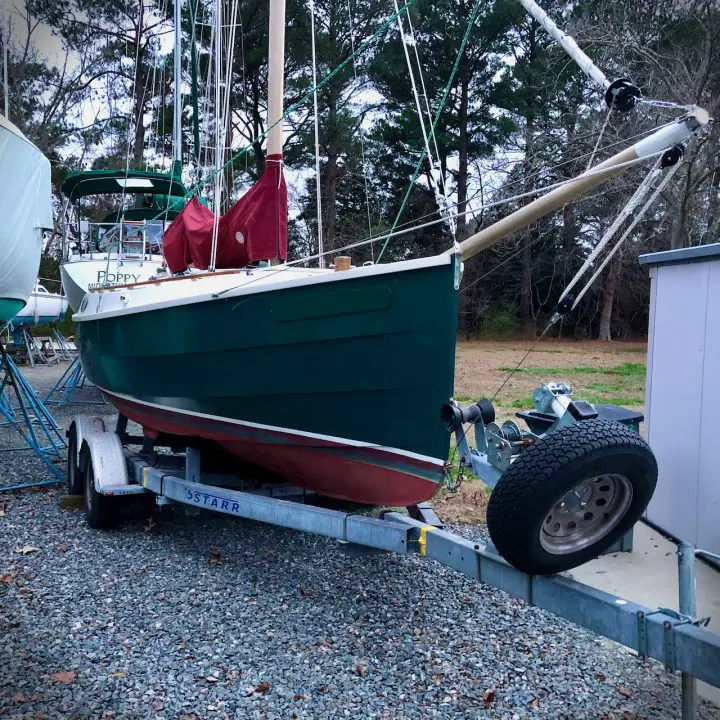
Table of Contents
Best trailerable sailboats, easy to launch trailerable sailboats, quick setup time, towing weight, catalina 22/25 “pop-top”, com-pac horizon cat for classic coastal cruising, marshall sanderling — small, portable, classy, west wight potter 19 — the tiny go-anywhere sailboat, seaward 26rk with retractable lead keel, corsair f-24 trimaran – sporty sailing, macgregor 26m — maximum speed meets maximum living space, long-range cruising boats, 7 best trailerable boats – a recap, what’s the best trailerable sailboat for a cruise, trailerable sailboats faqs.
- Catalina 22/25
- Com-Pac Horizon Cat
- Marshall Sanderling
- West Wight Potter 19
- Seaward 26RK
- Corsair F-24 Trimaran
- MacGregor 26M
| Boat | Pros | Cons |
|---|---|---|
| Catalina 22/25 with Pop-Top | Standing headroom when pop-top extended; Feels much larger than it is; Allows freedom of movement for cooking, changing, etc | Pop-top only provides headroom in small section of boat; Later models lacked this feature |
| Com-Pac Horizon Cat | Well built; Quick-rig system for fast & simple setup; Separate head; Space to lounge | No mention of cons |
| Marshall Sanderling | Easy to sail & tow; Traditional charm; Fiberglass hull; Option for electric motor | Very small for cruising; No galley; Toilet not enclosed |
| West Wight Potter 19 | Reputation for go-anywhere cruiser; Hotplate, sink & porta-potty packed in; Easy setup & towing | Extremely tight quarters; No mention of cons |
| Seaward 26RK | High quality construction; Retractable keel provides stability & shallow draft; Lots of amenities | Heavy – 6,000 lb towing weight |
| Corsair F-24 Trimaran | Very lightweight & easy to tow; Offers adrenaline-pumping performance sailing | Not ideal for offshore/rough conditions |
| MacGregor 26M | Massive interior space; Towable behind most vehicles; Fast powerboat & sailboat capabilities | Not built for offshore use; Not appealing for hardcore sailors |
We’ll get into more detail about each brand in my post today, so hang tight!
What Is a Trailerable Sailboat, Exactly?
For this article, the priorities for a trailerable sailboat are:
- Easy to launch
- Require minimum setup to launch and store
- Lightweight enough to be towed by the average vehicle
Before you can really classify a sailboat as trailerable, you need to evaluate and narrow your search criteria. Truthfully, 50-plus-foot ocean-going sailboats are regularly put on trailers. But that’s done commercially, on a big rig, with special permits for oversized loads, and even led cars.
That probably isn’t what most people mean when they think of a trailerable sailboat. But what is the priority here, the trailerable part or the sailboat part? Compromises are going to have to be made somewhere.
If you’re looking at the 20-foot-and-under sailboat crowd, finding a trailerable example should not be hard. Most sailboats this size are designed for trailers anyway since they aren’t the sort of boats people want to pay to leave in a slip year-round.
Things get more interesting when you look at the 20 to 30-foot boats. In this class, there are stout ocean-going cruisers with deep keels and lightweight centerboard trailer sailboats designed from the get-go to be trailered by the average car or SUV. The differences between these boats are night and day.
Sailboats often have a hard time at boat ramps. First, deep keels mean that the trailer must extend farther into the water than the average boat ramp allows. This means the ramp needs to go back far enough, and the trailer tongue needs to be long enough not to swamp the car.
If you have a boat like this, you’ll need to find the right boat ramps. Unfortunately, not all ramps are created equally. If your boat draws more than two or three feet on the trailer, you’re going to be limited to steep, paved, and high-quality boat ramps. Unfortunately, those aren’t standard features, so your cruising grounds are going to be limited.
Usually, ramps aren’t built steeply because they are often slippery. Your tow vehicle will need excellent traction and torque to pull your fully loaded boat out of a steep ramp. The steeper the ramp, the more trouble you’ll have.
The alternative to finding steep ramps is to use a trailer tongue extender. This lets you get the trailer into deeper water without swamping the tow vehicle. But it also means that the ramp needs to extend deep enough. Many ramps end abruptly. Allowing your trailer to sink off the edge is an excellent way to get stuck or pop a tire.
Pick a boat as easy to launch and retrieve as a similarly sized powerboat to remove all of these boat ramp problems. The soft chines of most sailboats will always require a little more water, but a swing keel and the hinged rudder raised mean that the boat can sit low on the trailer bunks. That way, you only need one or two feet of water to launch, an easy feat at nearly every boat ramp you can find.
The next consideration for a sailboat to be portable enough to call it “trailerable” is the amount of time it takes to step the mast and get it ready to cruise.
To accomplish this, you need a mast that can be stepped by a two-person team–maximum. Ideally, it will have some tabernacle hardware to enable one person to do the task for solo sailing.
There is an entire family of pocket cruisers that could ideally fit on trailers. But you won’t find the Fickas or the Falmouth cutters on my list, simply because they aren’t easy to launch or easy to rig. But, of course, they’re also too heavy for most vehicles to tow, which leads us to the final point of excluding them this trailable pocket cruiser’s list.
One of the most significant financial burdens the trailer sailer faces is their tow vehicle. You are all set if you already drive a two-ton dually diesel pickup truck. But if your daily driver is an SUV or light pickup, you need to think long and hard about the math of the towing equation.
Whatever boat you buy cannot exceed the towing rating limits of your tow vehicle. If you don’t have a tow vehicle, you’ll need to buy one. This will double or triple the cost of getting a trailer sailer in most cases. For the same money, you may want to look at a boat that stays in the water at a traditional boat slip. For the cost of a trailer sailer and a tow vehicle, you can probably step into a nice boat that is larger and more comfortable than any towable.
If you have a tow vehicle, you need a light enough vessel for it to tow. Most modern SUVs tow less than 2,500 pounds. Anything more than 5,000 will require a full-size pickup. Remember that the tow weight isn’t just the boat’s displacement—it’s the empty hull weight, plus the weight of the trailer and any extra gear you need to pack into the boat.
Finding a vessel that fits these limitations on weight isn’t easy. If the manufacturer’s goal is to make it towable, immediate limits are placed on the materials they can use. This means less seaworthiness since boats are built light and thin. As far as stability goes, lead keels are generally out, and water ballast systems or centerboards might be used instead. It doesn’t mean these boats aren’t safe and fun, but they aren’t designed for rough conditions, crossing oceans, or living on in the water full-time .
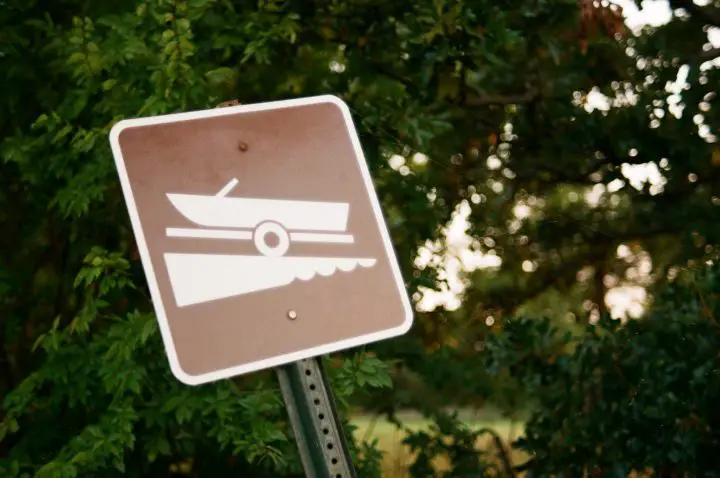
7 Best Trailerable Cruising Sailboats
There are more trailerable sailboats out there than you might imagine. Here’s a look at seven popular options of all shapes and sizes to give you a taste of what you might want to take to sea.
The boats here are selected for their storage and living space. With these boats and a little outfitting, you can spend weeks gunk-holing in the Chesapeake Bay or island hopping the Bahamas. If you broaden your scope to include daysailers with no cabin space, there are countless more options.
One of the worst parts of a small trailerable sailboat or pocket cruiser is the lack of stand-up headroom. One clever solution that you’ll find on some weekend sailboat types is the pop-top.
The pop-top is simply an area around the companionway hatch that extends upward on struts. So when you’re at the dock or anchor, you get standing headroom down below—at least right inside the pop-top.
You can build a canvas enclosure for your pop-top to use it in all weather. A pop-top makes your boat feel much larger than it is and allows you to move freely to cook or get changed down below or even do a nice boat bed area.
Later models of the Catalina Sport 22 and Capri 22s lacked this cool pop-top feature, so if you want it, you’ll need to seek out an older model on the used market.
Com-Pac has been building small sailboats since the early 1970s. They currently sell two lines, each with various-sized boats. All are well built, and a majority of their boats are trailerable.
Most interesting at the Com-Pac traditional catboats . The rigging is more straightforward than modern sloops, with only one large mainsail. Com-Pac boats come with a unique quick-rig system to make getting on the water fast and simple.
The Horizon Cat Coastal Cruising has a displacement of 2,500 pounds with a 2’2″ draft when the board is up. She has a separate head forward and space to lounge either topside or down below. The smaller Sun Cat has slightly few amenities but shaves off a few feet and pounds, making it easier to tow and it is one of these amazing small sailboats. Com-Pacs features stub keels, so their centerboard and hinged rudder do not take up space in the cabin.
On the sloop rig side, the Com-Pac 23 comes in a 3,000-pound traditional sailboat or a very interesting pilothouse. Both are incredibly livable for their size , with shallow two-foot-long fixed keels and high-quality construction.
Another option if you like catboats is the Marshall Sanderling. This salty 18-footer oozes traditional charm , all while being easy to sail and easier to tow. And while she has wooden boat lines, she has a modern laminated fiberglass hull.
The Sanderling has a 2,200-pound displacement, so tow weights will be around 3,000 pounds. At only 18-feet, she’s on the small side for cruising. The cuddy cabin has no galley, and the portable toilet is not enclosed. But that small size means a simple boat that’s easy to maintain and take anywhere.
An electric motor package is an exciting option on this weekend sailboat!
View this post on Instagram A post shared by @marshallmarinecat
You can’t mention tiny trailer sailers without touching on the famous West Wight Potter . These 15 and 19-foot pocket cruisers have earned a worldwide reputation as the ultimate go-anywhere coastal cruiser.
The West Wight Potter 19 offers the most living space for staying aboard and cruising. So even though its dimensions are diminutive, this little boat packs a lot in. There’s a single burner hotplate and sink and a porta-potty tucked under a cushion. Yes, it’s tight—but the company claims the little boat can sleep five people. Any more than two will feel pretty crowded, however.
The boat comes standard with a mast-raising system that a single person can manage alone. It has a daggerboard for a shallow draft of a half-foot when the board is up. The total towing weight is around 1,500 pounds, which means nearly any car can tow a West Wight Potter.
This little-known trailer sailer is produced at the same Florida factory that makes Island Packet Yachts. That should give you a little bit of an idea of what sort of boat it is—trailerable, yes, but also high-quality, beautiful, and built for cruising. In other words, it’s one of the nicest all round pocket cruisers and it feels like a much larger boat.
The Seaward is easily the saltiest boat on this list . It’s beefy and seaworthy. Instead of a lightweight centerboard, Seaward fits the RK with a bulb-shaped retracting keel. Other big-boat items include a Yanmar diesel inboard motor and an enclosed head. The spacious cabin of the boat features a double berth and is ready for salt water cruising.
According to sailboatdata.com , the tow weight of the 26RK is 6,000 pounds. With the keel up, the draft is 1.25 feet.
Multihull sailors need not feel left out from the trailer sailer club and the pocket cruiser. Beyond the ubiquitous beach Hobie Cat, there are not many options for catamarans. But trimarans are uniquely suited to be towed.
Why? For one thing, performance oriented boats like trimarans are based on it being built light. There is no ballast—a trimaran’s stability comes from its two outer hulls. Additionally, the living space is entirely housed in the central hull–the outer floats are small and sometimes foldable. Finally, there are no keels on tris, so they are extremely shallow draft and perfect for trailering.
If you’re looking for adrenaline-pumping sporty and fun sailing, it’s impossible to beat what a trimaran will offer. Let’s not beat around the bush—most of the trailer sailers on this list have hull speeds around five knots. The Corsair has no such limits, routinely sailing at 15 knots or more .
The new Corsair 880 trimaran has an unloaded weight of 3,659 pounds. It is trailerable behind a big SUV or small pickup and is probably the most fun sailing option that is trailerable at all.
An even more portable option is the older Corsair F-24. It has a light displacement of under 2,000 pounds—so nearly any SUV can tow it.
MacGregor owns the market on trailerable motor sailers since they more or less created the product to fit the bill. The MacGregor 26 is not like other boats. The design combines a planing powerboat with a centerboard sailboat. Imagine scooting along at 20 knots or more when the wind is down or enjoying a sporty sail on a breezy day–in the same boat.
The entire boat is built from the ground up for towing and long-range sailing. So if you want a big sailboat that you can tow behind pretty much any SUV, the MacGregor has to be on your list.
Depending on the model, the 26-foot-long boats have incredibly light dry weights of between 1,650 and 2,350 pounds. Considering the massive volume of the roomy cabin, the ability to tow such a large vessel opens up an entire world of opportunities for owners.
It’s not all good news, of course. MacGregor owners love their boats, but they are built light and are not ideally suited for offshore cruising or rough weather. But in bays and for coastal sailing on nice days, few boats can get as much use as a MacGregor.
The motorboat capability of the 26M and 26X might not appeal to hardcore sailors, but for those looking to maximize their use of the boat depending on the weather, their mood, or location, it makes a lot of sense.
MacGregor shut down in 2015, but the daughter and son-in-law of the original owners took over production and renamed the boat the Tattoo 26 . The company will soon release a smaller version, the Tattoo 22 .
If the 26 is a bit big to make your list of best trailerable small sailboats, consider the smaller Powersailer 19. It’s nearly identical to the 26, just smaller and lighter.
View this post on Instagram A post shared by Dale Roddick (@droddick33)
What Do You Want Your Trailer Sailer To Do?
After you’ve settled on how you will tow and launch your trailer sailer, now it’s time to dream about what you want it to do. Where will it take you?
The beauty of a towable boat is that you can travel anywhere. A boat in the water might take weeks or months to move a few hundred miles. But if you can attach it to your car and do 65 mph on the interstate, you could sail on the Pacific on Monday, the Gulf of Mexico on Wednesday, and the Atlantic on Friday.
We can divide our trailerable sailboats into three groups – daysailers, weekenders, and cruisers.
These are designed with open cockpits and no space to sleep. This is a majority of the sub-22-foot boats on the market. They are designed to be launched, play for the day, and return to the ramp or dock.
A weekender will have rudimentary sleeping facilities. Think of it as a floating tent—it’s not a five-star hotel, but you can sleep under the stars or get out of the rain. Conceivably you could stay aboard indefinitely, but it doesn’t have much room for gear. So most people are ready to get off after a day or two.
A cruising boat has sleeping, cooking, and toilet facilities built-in. These might be small and simple, but in any quantity, they mean you can disconnect from shore for a long time. Unfortunately, squeezing all of this into a tow-friendly package isn’t easy, and very few boats do it well.
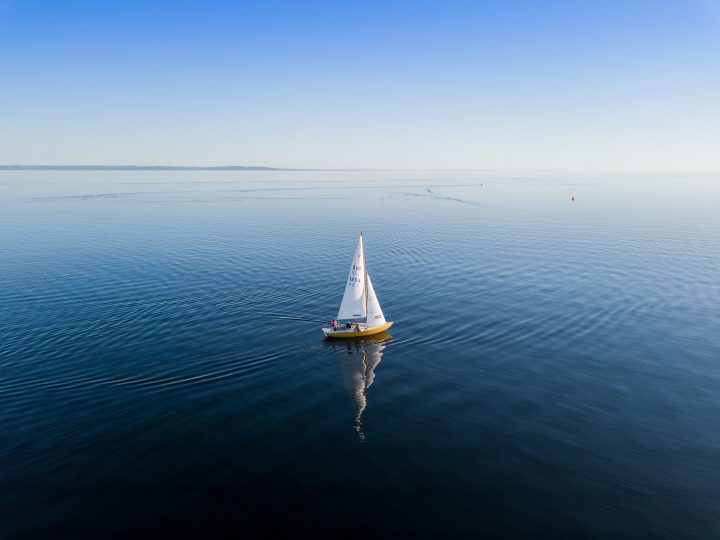
| Boat | Advantages |
|---|---|
| Catalina 22/25 “Pop-Top” | – Standing headroom below deck – Feels much larger than it is – Freedom to move below deck |
| Com-Pac Horizon Cat | – Simple catboat rigging – Quick-rig system – Shallow 2′ draft – Quality construction |
| Marshall Sanderling | – Traditional charm – Easy to maintain – Electric motor option |
| West Wight Potter 19 | – Go anywhere reputation – Packs in amenities – Towable by any vehicle |
| Seaward 26RK | – Quality construction – Big boat features – Retractable keel |
| Corsair F-24 Trimaran | – Very light/easy to tow – Shallow draft – Fast performance |
| MacGregor 26M | – Massive interior space – Planing hull enables speed – Towable by most SUVs |
The best trailer sailor for your adventures will depend on many factors. Like any boat, whatever you decide on will be a compromise – boats always are. But there are plenty of choices out there, no matter what size your tow vehicle is and no matter what sailing adventures you have in mind.
What size sailboat is trailerable?
Even large yachts are routinely transported by towing across land, so the question is more of how big a sailboat can you tow? Your tow vehicle will be the limiting factor. The upper limit for most large SUVs and trucks is usually a sailboat around 26 feet long.
Sailboats are generally very heavily built, with ballast and lead keels. Sailboats specifically made to be trailer sailers are lighter. They may use drainable water ballast tanks instead of fixed ballast and have fewer fixtures and amenities.
To find the best trailer sailer, you need to balance the total tow weight, the ease of rig setup at the boat ramp, and the boat’s draft. Shallow draft boats with centerboards are the easiest to launch and retrieve.
Is a Hunter 27 trailerable?
No. The Hunter 27 is a one of those fixed-keel larger boats built from 1974 to 1984. The boat’s displacement is 7,000 pounds, not including trailer and gear. That alone makes it too heavy to tow by all but the beefiest diesel trucks.
Furthermore, the fixed keels had drafts between 3.25 and 5 feet, all of which are too much for most boat ramps. In short, the standard Hunter Marine 27 is too big to tow for most people.
On the other hand, Hunter has made several good trailer sailers over the years. For example, the Hunter 240 and 260 were explicitly designed for trailering. They have drainable water ballast and shallow keel/centerboard drafts less than two feet.
Is a Catalina 22 trailerable?
Yes, the Catalina 22 is easily trailerable and makes a wonderful weekend sailboat. In fact, there were over 15,000 Catalina 22s made and sold over the years.
The boat’s displacement is 2,250 pounds, which means your total tow weight with trailer and gear will be under 3,000 pounds. This is within the capabilities of most mid to full-size SUVs and light trucks. Be sure to check your vehicle’s towing capacity, of course.
The centerboard on the Catalina 22 is another factor in its easy towing. With the board up, the boat draws only two feet. This makes it easy to float off the trailer at nearly any boat ramp. You should avoid fixed keel versions of the 22 for towing unless you have access to extra deep ramps.
Matt has been boating around Florida for over 25 years in everything from small powerboats to large cruising catamarans. He currently lives aboard a 38-foot Cabo Rico sailboat with his wife Lucy and adventure dog Chelsea. Together, they cruise between winters in The Bahamas and summers in the Chesapeake Bay.
Can someone tell me why no other manufacturer makes pop tops? Those who have them, love them. Makes sense for head space with a trailerable boat too. Catalina stopped making them decades ago, yet people still swear by them. So, why isn’t there any newer models?
MacGregor put pop tops on many of its trailerables
Leave a comment
Your email address will not be published. Required fields are marked *
Save my name, email, and website in this browser for the next time I comment.
- New Sailboats
- Sailboats 21-30ft
- Sailboats 31-35ft
- Sailboats 36-40ft
- Sailboats Over 40ft
- Sailboats Under 21feet
- used_sailboats
- Apps and Computer Programs
- Communications
- Fishfinders
- Handheld Electronics
- Plotters MFDS Rradar
- Wind, Speed & Depth Instruments
- Anchoring Mooring
- Running Rigging
- Sails Canvas
- Standing Rigging
- Diesel Engines
- Off Grid Energy
- Cleaning Waxing
- DIY Projects
- Repair, Tools & Materials
- Spare Parts
- Tools & Gadgets
- Cabin Comfort
- Ventilation
- Footwear Apparel
- Foul Weather Gear
- Mailport & PS Advisor
- Inside Practical Sailor Blog
- Activate My Web Access
- Reset Password
- Customer Service

- Free Newsletter

Ericson 41 Used Boat Review

Mason 33 Used Boat Review

Beneteau 311, Catalina 310 and Hunter 326 Used Boat Comparison

Maine Cat 41 Used Boat Review

Tips From A First “Sail” on the ICW

Tillerpilot Tips and Safety Cautions

Best Crimpers and Strippers for Fixing Marine Electrical Connectors

Thinking Through a Solar Power Installation

Getting the Most Out of Older Sails

How (Not) to Tie Your Boat to a Dock

Stopping Mainsheet Twist

Working with High-Tech Ropes

Fuel Lift Pump: Easy DIY Diesel Fuel System Diagnostic and Repair

Ensuring Safe Shorepower

Sinking? Check Your Stuffing Box

The Rain Catcher’s Guide

Boat Repairs for the Technically Illiterate

Boat Maintenance for the Technically Illiterate: Part 1

Whats the Best Way to Restore Clear Plastic Windows?

Mastering Precision Drilling: How to Use Drill Guides

Giving Bugs the Big Goodbye

Galley Gadgets for the Cruising Sailor

Those Extras you Don’t Need But Love to Have

UV Clothing: Is It Worth the Hype?

Preparing Yourself for Solo Sailing

How to Select Crew for a Passage or Delivery

Preparing A Boat to Sail Solo

On Watch: This 60-Year-Old Hinckley Pilot 35 is Also a Working…

On Watch: America’s Cup

On Watch: All Eyes on Europe Sail Racing

Dear Readers

Chafe Protection for Dock Lines
- Sailboat Reviews
Seaward 26 RK
By no means just a stretch version of hake yachts' 25-footer, this new craft features a retractable keel and sensible pricing options..
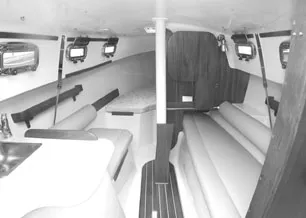
When Nick Hake, a graduate of the Milwaukee School of Engineering, decided that he’d had enough midwestern winters, he moved to Florida. Despite his epicurean proclivities, he decided that he liked building boats more than being the head chef at an upscale restaurant in Coconut Grove.
“I always wanted to be self-employed,” he recalled.
Between 1974 and 1982, Hake built roughly 2,000 dinghies before introducing a 17-footer called the ‘Slipper,’ which ultimately became an 18-footer that was marketed as the Fox. With the introduction of a 22-footer in 1979, he formed Seaward Yachts, but now markets Seaward models under the Hake Yachts brand.
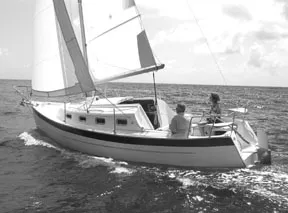
In 1984 he introduced a 24-footer that eventually became the Seaward 25 (see PS February 1, 2003), but in 1993 he sold the company to a group of Philadelphia-based investors. However, after two years, the romance of the boatbuilding business wore thin with the hobbyist owners, and they sold the business back to Hake. He now focuses solely on production of the newly designed Seaward 26RK, and the Eagle, a shallow-water 32-footer.
Though the company enjoys a reputation for building solid boats, it was during Hake’s hiatus that lax construction methods and poor quality control resulted in a number of poorly constructed boats leaving the factory.
Since Hake’s return, boat construction and quality control have returned to prior levels. In fact, the production floor is now adorned by a bulletin board—visible to both customers and employees—that itemizes the most recent “mistakes worth mentioning,” along with the appropriate corrective measures.
“We see it, and our customers see it,” Hake said.
Design Hake designs the boats his company manufactures. His latest, the Seaward 26RK, bears a striking resemblance to her 25-foot predecessor. The first impression when viewed abeam is that her profile is traditional, accented by a tall bow and upward-sloping cabintop highlighted by four ports, and downward sloping sheerline leading to a cockpit surrounded by a stainless steel stern rail housing two seats.
“We designed new molds for the boat, and took a new approach to pricing at the same time,” Hake said. Compared to the 25-footer, the new model has 18″ more waterline length, and a more user-friendly cockpit since “most of the additional space is aft of the wheel.” The additional waterline length also contributes to improved performance.
Of the modifications, Hake says that he also “wanted to increase the designed waterline for the purpose of increasing buoyancy in the stern when she’s loaded with several adults. The 25-footer tended to drag her stern a bit when overloaded, which affects performance, so we solved that problem.”
A roomy cockpit—even on a boat this size—is an important feature as that’s where the majority of time on board will be spent. Measuring 8′ 4″ long by 5′ 2″ wide, with seats that are 16″ wide, this cockpit will comfortably seat four, allowing the helmsman adequate space to steer and the crew sufficient room to trim sails.
The 26RK also has a transom gate that eases entry from the stern.
We were befuddled to learn that most purchasers opt for a boat equipped with a wheel (a $2,150 option), since she carries a light helm and the tiller can be moved out of the way when dockside.
Hake calls his hull shape a “spherical tumblehome,” defining that as “a concentric shape at the waterline from the bow to amidships with soft bilges.” When overpowered, a soft bilge produces tippyness, but Hake explained: “she’ll make way best when heeled 10 degrees, and owners begin shortening sail when the wind pipes up to around 15 or 17 knots. Though she has a plumb bow, she also has a rounded entry that prevents broaches by eliminating the tendency of the nose to bite into the sea and skid.
“We were primarily looking for a boat that would do the best job of sailing in the waters of the East coast, particularly Florida, where we have tons of quiet and unspoiled waters that are very shallow, but also to be able to cross the Gulf Stream to the Bahamas and do some island hopping…Performance-wise, we wanted a boat that would sail with a sport-boat feel but could be easily handled by one person and comfortable for a family. We kept the rig uncomplicated, the underbody clean, and went with vertically retracting foils to take care of performance, stability, and shallow water issues.”
Hake scored points on those criteria, having produced a sail area/displacement ratio of 18.4, and displacement/length ratio of 113.2, both of which are considered on the fast side. In comparison, the Catalina 250 (wing-keel version) displaces 4,200 lbs. with 200 fewer pounds of ballast, to produce a SA/D ratio of 16.29 and a D/L ratio of 195. On paper, the Seaward has the speed edge.
The 26RK displaces 3,800 lbs., only 200 lbs. more than her predecessor. Weight, Hake said, is distributed throughout the boat and that doesn’t affect performance or balance.
The retractable keel is a NACA-designed, high-aspect, 8′-long section with 26″ wings attached to a bulb. It draws 6′ when fully deployed and only 2′ (the depth of the bulb) when raised. Its thin shape—the chord is only 15.5″—and low center of gravity, are nearly identical to longer, fixed-keel boats, so it produces excellent tacking ability, as we learned during our test sail.
“We chose a torpedo bulb on the keel to keep displacement low without compromising stability, and produced a lower center of gravity and improved stability. We also felt the bulb was necessary to keep stability high when the boat was sailed in shallow-water situations with the keel only partially extended,” Hake explained. This is another good change since, in shallow water with a typical dagger elevated, wind and surf might produce an unpleasant ride.
Lowering and retracting the 1,200-lb. keel is a simple matter of pulling one of two lines located on the cabintop near the cockpit. The lines are attached to a switch on a Rule Industries 20SS electrical motor with a 2,000-lb. lift capacity, all housed in a fiberglass box just beneath the mast. Rule’s standard product is equipped with a spring that could allow the keel to fall freely, but Hake’s employees modify the motor to prevent such an occurrence. Should the motor fail, Hake has devised two back-up plans for retracting or lowering the keel, one involving the use of a cordless drill to turn the winch motor.
We initially thought this arrangement of pulling lines to control an electrical switch was an antiquated, potentially faulty approach. However, like much of Hake’s thinking, it represents the utmost in simplicity. It’s a lot like the old system of pulling a string to switch on a light. Sure, a dedicated switch mounted near the cockpit and wired to the motor would be more tidy and convenient, but it would also invite the possibility of a future wiring failure. Hake’s solution may seem crude, but it’s effective.
The 26RK’s rudder continues that trend of functional simplicity. The stern-hung appendage can be adjusted up and down within its sheath. The leading edge of the rudder is a combination of carbon fiber and fiberglass. At the head of the rudder is a pin that prevents it from lifting out of the sheath in a following sea.
A byproduct of these retracting foils and subsequent shallow draft is the ease with which this boat can be launched at shallow ramps.
Deck Layout Excepting the keel motor box, deck clutter is limited to two sheets, two blocks, and three winches, with all lines led aft. Stainless steel ports that were fixtures on older boats have been replaced by plastic ports, a $1,250 cost saving. The shrouds extend to the cabintop, producing tighter sheeting angles as well as easier movement forward and aft. Stainless-steel handrails set on the cabintop fore and aft of the shroud bases, and double lifelines contribute to the safety element.
The mainsheet is led from the end of the boom to an athwartships track at the base of the companionway, rather than on the cabintop. This produces good sheeting angles, but it’s a stretch for the helmsperson to reach with the traveler eased. The Andersen headsail winches—set midway along the cockpit coaming, are closer by. The halyards are led on the cabintop to Ronstan rope clutches that sit forward of an Andersen winch.
In the cockpit, the starboard locker is 28″ deep, 34″ wide, and more than 6′ long, adequate for storing miscellaneous gear and a spinnaker. And Hake allowed space for a 6-gallon fuel tank under the starboard cockpit seat; it is easily removable when the time comes to fill ‘er up.
The sail plan on the 26RK is supported by an uncomplicated, deck-stepped, fractional rig with single spreaders that is designed to be easily raised for sailing away. As Hake says, “We build our boats for mature owners who want to step aboard and go sailing without worrying about the technical stuff.” We didn’t step or unstep the spar during our test, but in our review of the Seaward 25, we did question that the backstay is attached to just one side of the transom. “The boat will sail well without a backstay, anyway,” Hake told us, adding that the mast is so stiff that bending it is not an option. Regarding the strength issue, he provided photos of a 26RK suspended aloft from a crane with lines attached to bow and stern pulpits.
Accommodations A fully equipped version of this 26-footer offers seating/dining space for four adults, a galley, and modest head, and berths for four that are more than 6 feet long. Headroom is approximately 5′ 10″ throughout the interior.
“Belowdecks, we wanted creature comforts for a couple, or a young family,” said Hake. “We try to use every inch of space and design the interior so everything can fit. Everything can be removed and the interior hosed out for cleaning.”
Hake frees space in the main cabin by hanging the dining table on the bulkhead. It’s not an original idea, however, having to work around the keel trunk, which sits center stage, was a challenge. He cleverly attached the forward end of the table to a stainless steel rod affixed to the bulkhead. The 34″-long table is lowered and then rotated amidships to create dining space on both sides of the cabin. It works well, and spans much of the 5′ space amidships between the settee backs.
Counter space in the galley is 48″ long if the sink cover and oven top are used as working surfaces; additionally, the ice box top doubles as a cutting board. Opposite the galley, the head compartment measures 32″ wide x 40″ long; not spacious, but appropriate for a boat this size.
Getting this boat fully equipped, however, comes at a price. Since the company is attempting to broaden its market to include first-time buyers and the less affluent, living spaces are offered a la carte. In lieu of a privacy curtain, a teak door and bulkhead that enclose the forward berth will add $1,000 to the base price; a privacy door on the head adds $200, and a portable marine head $375. Additionally, an Origo single-burner stove will increase the cost of the galley by $300, and the stainless steel ports are a $1,250 option.
This boat does suffer a paucity of bulk storage space (unless the aft quarterberth is used for that purpose).
Construction With minor exceptions, Hake’s construction methods remain unchanged since our review of the Seaward 25. The lamination schedule for the hull includes a vinylester gelcoat, 1.5-oz. chop-strand mat and isophthalic polyester resin applied with a chopper gun. “I know some people don’t like that, but it’s an effective way of assuring that there’s resin on both sides of the strands,” says Hake. “The second step introduces 40-oz. triaxial cloth. While we use Coremat in the flat runs of the hull to provide stiffness, most of the hull is solid glass.”

The interior pan is a solid fiberglass structural member that is vacuum-bonded to the deck. Extra laminations are added in potentially high-stress areas where the hull and keel trunk meet, and where the hull and deck meet.
The hull-to-deck joint—shaped like an inverted “J”—is chemically and mechanically fastened using stainless machine screws every six inches and a proprietary putty. “It doesn’t leak because of the accuracy of our tooling and the bonding materials,” Hake said.
The deck, which is cored with Divinycell foam, follows a similar schedule. Deck hardware is tapped into 1/8″ aluminum plates bedded into the fiberglass lamination, a strong method that is becoming more standard in the industry. Chainplates are mechanically and chemically fastened as well. A 3″-wide stainless steel strap penetrates the coachroof and is carried down to the hull, where it is attached to a stainless rod.
The fiberglass outer skin of the keel contains a core of resin and 1,000 lbs. of lead, which is poured in place.
Performance We sailed the 26RK in 10 to 15 knots of wind on the Chesapeake Bay. In the process, we also introduced a total neophyte to sailing and reaffirmed that, at its elemental level, sailing is relatively uncomplicated.
The cockpit proved to be large enough for four adults, with sail controls located so that the boat could be singlehanded if necessary. Though we found steering while seated on the stern-rail seats comfortable, it puts the helmsperson at too great a distance from the sail controls.
With approximately 10 knots of wind, and a full main and 110% headsail deployed, the boat easily sailed through the short chop on the bay, and pointed to within 40 degrees of the apparent wind. Our handheld GPS registered boat speeds between 4.5 and 5.5. knots over the ground. Easing sheets, the speed increased to the mid-6 range, and we registered a 7-knot run for several minutes.
When the wind increased to 14 knots, we tucked a reef in the main, which reduced heel and increased comfort while maintaining the same speed.
As advertised, one advantage of sailing a trailerable boat is the ability to maneuver in shoal waters. This became clear when we ran aground. Floating the boat was a simple matter of pulling a string in the cockpit, which raised the keel. When operating in shallow water, raising the rudder is also simple; you remove a pin, lift the foil to the proper depth, and replace the pin.
Finally, to confirm her maneuverability, we eased sheets completely, pulled the tiller hard over, and she spun on her keel, sailing in circles the diameter of her own length.
Our principal criticisms pertain to the size of the mainsail, and the headsail furling system. Light-air performance aboard the 26RK would improve with additional area in the mainsail, and that could easily be achieved if the tack were lowered or more roach area was added. Hake Yachts’ Sales Manager Dave Brady told us that most owners are content to sacrifice light-air performance for the ability to defer reefing when the wind really pipes up, but he also mentioned that custom sails remain an option.
The Schaefer headsail furler elevates the tack of the jib at least 12″ off the deck. That’s good for visibility from the helm, but it also sacrifices sail area, keeping the boat from reaching its full potential when going to weather. Hake attributes the use of that brand of furler to the fact that the unit is mounted on a levered tang that eases hoisting the mast. At this writing, he is considering the use of a CDI furler as an alternative. We’d also want to add a vang to get better mainsail shape off the wind.
The standard sails are manufactured by Super Sails, a Florida loft that Hake has used for 20 years. “They know our boats so well,” said Hake, “that the sails come out exactly to the specified dimensions.”
Pricing The base price of the boat is $29,950, including mainsail and 110-percent jib, standing and running rigging, bowsprit, and anchor roller. Surprisingly, this price is $5,000 less than the company charged for its 25-footer. Hake explained: “Price-wise, we wanted the boat to be competitive with the mix of entry level boats currently on the market, without compromising our hard-earned reputation for quality. To that end, we decided to offer the boat with a low (for us) base price so that a young family just starting out could have a Seaward now, and perhaps add some of the bells and whistles later, as their bank account grew.”
Interestingly, that approach differs from many manufacturers, who are adding to their bottom line by including many high-margin options in their base boats. A Seaward 26RK equipped with a Yanmar diesel ($7,500), rather than an outboard, galvanized tandem-axle steel trailer with surge brakes ($3,800), wheel steering, instruments, portable head, Origo stove, and a CDI furler, would list for almost $50,000.
We think Hake’s pricing strategy makes sense in this market since it allows the neophyte or budget-conscious sailor to manage the size of the expenditure, while affluent sailors can add all of the amenities they like. A small company like this, making just three models, does well to utilize that kind of flexibility.
Conclusions This is the second PS review of a Seaward sailboat; we think the 26RK is a much better buy than the earlier 25-foot model, especially since the company has managed to maintain essentially the same price for more boat.
This boat reflects a thoughtful approach to design that increases user comfort, though its sail plan may disappoint more performance-minded sailors. The additional space in the cockpit and waterline length are a plus, especially since they add only 200 lbs. to the displacement. And we think owners of the 26RK will be pleased at the boat’s ability to gunkhole in bodies of water where deeper draft vessels would be restricted.
Hake has succeeded in cramming reasonable creature comforts into a small area, so crew can sit comfortably when at anchor.
And he has come to grips with construction quality issues by publicly giving employees demerits for poor workmanship, and by using conventional construction methods to produce solid structures.
We also see the use of a la carte pricing as a plus. Since engine beds are part of the mold, a diesel could replace an outboard; and other retrofits could be accomplished just as easily. Plus, given the choice between spending more money on options or taking a credit for the sail inventory in order to buy a bigger mainsail, for example, offers additional flexibility for the prospective buyer.
True, the current glut of used 25- to 30-foot boats on the market provides buyers the opportunity to achieve the goal of boat ownership for significantly fewer dollars than Hake is charging for the 26RK. But considering the quality of this boat and its potential for high resale value, we’d recommend that buyers in the market for a trailerable cruiser seriously check it out.
Contact – Hake Yachts, 772-287-3200, www.seawardyachts.com .
RELATED ARTICLES MORE FROM AUTHOR
I really appreciate the no nonsense approach in your evaluation and testing of sailboats and gear. I’m planning to purchase a pocket cruiser in the near future (my last sailboat was a 1987 Pearson 27 – a fine boat!) and look forward to future reviews as I narrow down my choices.
LEAVE A REPLY Cancel reply
Log in to leave a comment
Latest Videos

What’s the Best Sailboats for Beginners?

Why Does A Sailboat Keel Fall Off?

The Perfect Family Sailboat! Hunter 27-2 – Boat Review

Pettit EZ-Poxy – How to Paint a Boat
Latest sailboat review.

- Privacy Policy
- Do Not Sell My Personal Information
- Online Account Activation
- Privacy Manager
Yachting World
- Digital Edition

Jeanneau SO410 review: lift keel opens up options
- Toby Hodges
- October 21, 2021
With its lift keel option, the Jeanneau SO410 has a potent trump card: It has the draught of a Class 40, yet can also nose into the shallows. Toby Hodges was intrigued

Product Overview
Manufacturer:, price as reviewed:.
If you sail in tidal harbours or shallow waters, your choice of midsize new production yachts is more limited than you may realise. While most manufacturers offer a shallow draught version of their fixed keels by adding more weight to the bulb to compensate for the reduction in righting moment, this is not a compromise all sailors are willing to make. Jeanneau, on the other hand, has long offered a lift keel on its smaller models, yet by doing so on something the size of the new Jeanneau SO410, it has established a clever niche.
The Vendée yard certainly didn’t follow the status quo when it developed its eighth-generation Sun Odyssey line three years ago and the Jeanneau SO410 adds to a string of innovations for this latest range.
First came the groundbreaking bow and hull shape, together with the walkaround deck design on the SO440 and SO490. Now comes this lift keel option, which is technically a hinging ballasted keel. It is a similar concept to that employed by Pogo for its performance yachts, yet Jeanneau is the only large scale cruising yacht manufacturer to offer such a system.
Consider the fact that the standard draught of a Jeanneau SO410 is a conservative 2.25m and the shoal keel version just 1.6m deep. Alternatively, this lift keel version reaches down to 2.97m/9ft 8in, which is the draught of a Class 40 race boat and a substantial difference in potential pointing ability. Then, at the push of a button at the helm, this swings up to reduce it to just 1.37m/4ft 5in.
This €20,000 option is therefore a prospective game-changer for those wanting to sail efficiently to windward. For example the owner of the test boat, which is the first lift keel version of this model in the UK, wants to sail regularly from Falmouth to the Isles of Scilly with his large family. So he wants to cut passage times when sailing against the prevailing westerlies yet be able to tuck into the coves on arrival.
We had a brief opportunity to sail his new boat with agents Atlantic Yachts in Plymouth before it was handed over the following day.
Jeanneau SO410 under sail
The SO440 and SO490 were the forerunners for this modern trend in hull shapes and first impressions of the Jeanneau SO410 are of another contemporary, powerful, aggressive-looking design.
This Marc Lombard interpretation continues and refines that full bow, chined and chamfered look – elements which help give maximum internal volume yet keep the wetted surface narrow. The forefoot and first 0.5m below the dreadnought bow is also noticeably dry.

Chines help create volume and stability, while twin rudders give the beamy hull plenty of grip. Photo: Josh Tarr
A bow thruster is an option most owners reportedly take and while that sounds like overkill for this length of boat, I can understand why. The light, voluminous bow gets taken by the wind easily when under motor, which makes manoeuvring tricky, particularly in reverse.
Typical British summer conditions greeted us in Plymouth Sound, with 15-20 knots westerly winds that were really puffy under the dark clouds. It was the first time the boat had sailed, so I was surprised and impressed with how quickly and easily the Jeanneau SO410 found its groove. It never felt pressed and was easy to maintain good speeds (very close to the polars in fact).
We averaged 7 knots beating and 9 reaching. It was also a fun yacht to sail off the wind, deep reaching with the swell, where we nudged 9.5 knots with the Code sail. I was left wanting more, which is always a good sign.

The bowsprit integrates the bow roller, an option needed to keep the anchor clear of the reverse stem. Photo: Josh Tarr
Worthy of note were the form stability of the hull shape and the ability this keel gives you to point high to the wind (tacking through 70°). It remained very light on the helm, yet with enjoyable and direct control. Marc Lombard is a veteran designer of race yachts around this length, so the performance and handling of the SO410 should perhaps come as no surprise.
The grip of the deep twin rudders and deep keel gave me plenty of confidence to sail around the moored yachts in Cawsand Bay. Sailing heeled and powered up on the wind is addictive. The mainsheet and genoa sheets are on neat bridle systems and while the latter allows for adjustment to lead the sheets inboard for tight pointing, the lack of a traveller option means it’s almost impossible to trim the main to a similar high angle.

The deep swing keel lifted. Photo: Josh Tarr
Managing the sheets from the two aft winches is a little fiddly. You need to pre-plan tacks to ensure the new working genoa sheet will be on the correct winch, swapping it with the German-led mainsheet. However, a real benefit the ramped side deck design brings is the option to stand outboard to work the winch yet with the security of over 1ft of bulwark to brace against.
Both sheets on the test boat had clutches, which allow you to free up the winch, but can cause issues for genoa sheets during tacks if accidentally left on. We also found these sheets consistently snagged the forward mast base cleat during tacks, so moving or covering that cleat would be prudent.
The winches and pedestals are positioned right aft to maximise cockpit space, leaving a compact space behind the helms. However, you do have the option to either sit athwartships, or take the unique position of sitting facing forward with your legs outstretched on the side deck.
The resultant cockpit size is impressive, as is the protection afforded by the deep coamings and large sprayhood. There is no stowage for sheet tails so bags would need to be fitted to keep things tidy. Elsewhere, deck stowage is adequate in two shallow bench lockers, a quarter locker and a sail locker.
Jeanneau SO490 down below
The SO410 offers plenty of accommodation options, from two cabins and one heads to three cabins with two heads, and it is arguably the excellent proportions and the amount of space it provides in all areas that help it stand out from the competition.

Spacious, light and airy in the main saloon with a practical C-shaped galley. Photo: Bertrand Duquenne
This space allows for the inclusion of a proper navstation, ample aft cabins and an impressive en-suite owner’s forecabin. The slab topsides between the upper and lower chines helps create the beam in the galley, saloon and forward cabin.

Rectangular berth in the huge forward cabin. The lift keel version angles this berth. Photo: Bertrand Duquenne
Below decks has a modern apartment feel and I liked the fabric on the bulkheads and neat stowage solutions throughout. The central galley configuration, which has a practical C-shape for working at heel, is one of the main differences over the old SO409. It includes a deep fridge and ample stowage.
The door to the forward cabin has been offset to allow space for the keel box, which removes the option of a convertible double berth in the saloon. The central chaise longue is a great feature and makes clever use of the keel box. A very comfortable seat in the heart of the boat, it also extends out flat to make a nice child’s berth. The manual pump for the keel ram is mounted below and there is a spy glass for checking the ram position.
The forward cabin has an intelligent layout too. By angling the headboard and berth against the forward bulkhead it creates room for a proper rectangular berth (as opposed to a typical V-shape) as well as a good en-suite heads and shower compartment offset to port, which is the same size and configuration as the aft heads.
There is also plenty of space and light in the near identical aft cabins, which have low berths, modest stowage, and large side access panels into the engine room. The curved and fiddled joinerwork, notably the central stowage unit between navstation and galley, provide good support when walking around at heel. Dampeners and spacers are used on the soleboards to prevent some creaking, but unfortunately much of the plywood endgrain has been left exposed and unsealed.
If you enjoyed this….
Yachting World is the world’s leading magazine for bluewater cruisers and offshore sailors. Every month we have inspirational adventures and practical features to help you realise your sailing dreams. Build your knowledge with a subscription delivered to your door. See our latest offers and save at least 30% off the cover price.
The SO410 has a smart modern hull shape which offers good sailing manners and behaviour, and has been used wisely to create an appealing accommodation layout. It’s another versatile model from Jeanneau, and one with an added twist – a proper trump card option. If you want a 40ft+ production yacht with shoal draught but deep keel performance, this is the only option. It will allow you to effectively take the competition at the traffic lights and claim the inside track, then when you get to your destination you’ll be able to pick the best parking place too.

Trailerable Sailboats Comparison

Last Updated by
Daniel Wade
June 15, 2022
Trailerable sailboats come in a variety of shapes and sizes. These vessels can be used for everything from racing to offshore cruising.
In this article, we'll compare six of the most common trailerable sailboat types along with their uses. Additionally, we'll cover vessel design elements that distinguish different types of trailerable sailboats.
The most common types of trailerable sailboats include dinghies, racers, open-top cruising sailboats, pocket cruisers, coastal cruisers, and compact offshore sailboats. These vessels differ by size, rig type, hull type, and weight.
The information contained in this article was sourced from sailing guides and vessel identification records. Additionally, we took into consideration the opinions of sailors with experience on a variety of trailerable sailboats.
Table of contents
Defining Trailerable Sailboats
What distinguishes a trailerable sailboat from any other small cruising craft? The first and most obvious consideration is size. A trailerable sailboat has to meet the dimensional requirements set forth by the Department of Transportation. In other words, it must fit on a trailer that's small enough to travel on the road.
An additional consideration is weight. A trailerable sailboat should weigh less than around 7,000 pounds, as this is the upper towing limit for most typical Class C vehicles. Most trailerable sailboats can be towed behind a typical half ton pickup or SUV.
Additionally, most trailerable sailboats have a swing keel or centerboard. This makes it possible to rest a boat on a low trailer. Most displacement keels are simply too tall, though there are a few exceptions. The maximum trailer load height in most states is 14 ft, which a trailerable sailboat should clear without trouble.
Length is a consideration, though it's not as important as width. The maximum beam of a trailerable sailboat is 8 ft 6 in, as this is the limit for standard trailers on American highways. Typically, trailerable sailboats don't exceed 30 feet in length, as the length to beam ratio of a longer boat would lead to poor handling characteristics.
The final consideration is rigging. Due to height requirements, trailerable sailboats must have collapsible masts. Additionally, rudders and other items that extend beyond the hull must fold or stow in some manner.
Types of Trailerable Sailboats
Trailerable sailboats come in many varieties, weights, in sizes. These vessels are designed for specific uses, such as racing, cruising, fishing, or training. Here are the most common kinds of trailerable sailboats, along with what they're used for.
1. Dinghies
Dinghies are small, open sailing craft that usually don't exceed 15 feet in length. Dinghies are designed for use in protected waters. They're sometimes used to shuttle between an anchored sailboat and the shore. Dinghies are popular racing vessels, and many sailing schools use them for sailing instruction.
Popular Trailerable Dinghies:
- Optimist “Optie” (7 ft 9 in LOA)
- Minto (9 ft LOA)
- Wayfarer (16 ft)
Trailerable racing sailboats are long and narrow. They're designed for speed and agility, not comfort or offshore cruising. These boats generally have a low profile, and they're often open-top and lack sleeping accommodations.
Racing sailboats are lightweight and easy to tow. That said, trailerable racing sailboats are designed for experienced sailors as they're easier to capsize in high winds. These vessels range in size from 15 feet to over 25 feet.
Popular Trailerable Racing Sailboats:
- National 12 (12 ft)
- Sunfish (13 ft 9 in)
- Merlin Rocket (14 ft)
3. Open-Top Cruisers
Open-top cruising sailboats lack a cabin. However, these seaworthy craft are more than capable of coastal cruising in a variety of conditions. Many of these vessels are based on proven workboat designs that date back over a century. These vessels are ideal for harbor sailing and cruising on lakes.
Some people use open-top cruising sailboats for camping, as these traditional vessels are long enough to lay down a cot or sleeping bag. They make a great starter sailboat, as they're safe and easy to store in the garage or driveway.
Popular Trailerable Open-Top Cruisers
- Norseboat (17 ft 6 in)
- Bay Rider (20 ft)
- Com-Pac Legacy (23)
4. Pocket Cruisers
Pocket cruisers are similar to coastal cruisers, though they're distinguishable by their size and amenities. Generally speaking, a pocket cruiser is a small sailboat (under 25 feet in length) that features a cabin, galley, self-draining cockpit, and other 'big boat' accommodations.
Pocket cruisers usually aren't designed for serious offshore cruising, but they are comfortable for extended coastal or inland voyages. They weigh more than racing vessels, as stability is a key aspect of their design. Pocket cruisers are popular because they offer impressive capabilities in a small package.
Popular Trailerable Pocket Cruisers
- Sandpiper (15 ft)
- Sanderling (18 ft)
- West Wight Potter (19 ft)
5. Coastal Cruisers
Coastal cruisers are some of the most popular trailerable sailboats on the market. These vessels usually feature a cabin with a V-berth and a sink, though they occasionally include a head and a complete galley. Coastal cruisers are seaworthy enough for most near-shore and inland weather conditions.
Some adventurous sailors have taken coastal cruisers on extended bluewater voyages, though it's not particularly common. The size and sailing characteristics of these vessels is often not their greatest limiting factor.
There's only so many provisions you can store aboard a 22 to 25-foot sailboat, which is why coastal cruisers are generally considered impractical for offshore voyaging. Coastal cruisers handle well, and they're easy to sail, which is why this type of trailerable sailboat is popular in bays and harbors across the country.
Popular Trailerable Coastal Cruisers
- Cal 20 (20 ft)
- Catalina 22 (22 ft)
- Hunter 22 (22 ft)
6. Compact Offshore Sailboats
Compact offshore sailboats are the rarest and most capable type of trailerable sailboat. These vessels are a big boat in a compressed package. They typically feature a long displacement keel, a wide beam, and a cramped but feature-filled cabin.
These vessels are true cruising boats inside and out. The cabins usually feature a full galley, standing headroom, ahead with a shower, a V-berth upfront, and provisions for navigation. Their rigging is strong enough to handle offshore weather conditions.
Compact offshore sailboats usually have the greatest displacement, as their deep draft and wide beam keep them stable in rolling seas. This also contributes to greater dry weight, which is why they can't be towed by small vehicles.
Vessels of this type are technically trailerable, as they meet the dimensional requirements to travel on the highway. That's said, moving one of these boats is difficult. Owners generally keep these vessels in the water or in dry storage most of the year to avoid the hazard and hassle of towing such a hefty boat.
Popular Compact Offshore Cruisers
- Flicka 20 (20 ft)
- Dana 24 (24 ft)
- Nor'Sea 27 (27 ft)
The keel of a sailboat keeps it stable and tracking a straight course. Most trailerable sailboats have retractable keels of some variety, though some have fixed (permanently lowered) keels. Here are the most common types of trailerable sailboat keels in order of their popularity.
1. Centerboard
A centerboard is a form of retractable keel that's common on the smallest types of trailerable sailboats. A centerboard is essentially a long, thin blade that descends through a hole in the bottom of the boat.
Half of the centerboard remains inside the boat in a box called the 'centerboard trunk.' Centerboards are simple and easy to use, but the centerboard trunk takes up useful space in the cockpit or cabin.
2. Swing Keel
The swing keel is a type of retractable keel that eliminates the inconvenient centerboard trunk. A swing keel is a centerboard with a hinge on one end. It lives in a trunk, typically below the base of the hull, and swings down when in use.
Swing keels allow the sailboat to ride low on a trailer, which makes them a popular choice for pocket cruisers and trailer-sailers. Swing keels raise and lower using a block and tackle system or a crank, usually located near the bilge or under a seat.
3. Fin Keel
Fin keels are less common on trailerable sailboats than they are on larger cruising boats. This type of keel is fixed to the bottom of the hull. A fin keel blade extends between 12 inches and 3 feet below the hull, and it occasionally includes a hydrodynamic bulb on the end. Fin keels are most often found on racing boats.
4. Semi-Displacement
Semi-displacement keels are long, fixed keels that run along the aft 2/3 of the hull. This type of keel is designed for cruising boats that value speed but still want to retain the stability and seaworthiness of a full keel.
Some trailerable sailboats have semi-displacement keels, especially if they're designed for offshore use. The benefits of a semi-displacement keel over a full keel are negligible on a trailer, as both types have a deep draft and high ride height.
5. Displacement (Full Keel)
Displacement keels are traditional and highly seaworthy. This type of keel runs across the entire length of the hull, usually reaching its deepest point at the stern. Displacement keels are found on vessels that are designed for offshore use.
Displacement keels are uncommon on trailerable sailboats, as they're long and cause the vessel to ride high on a trailer. Additionally, the type of vessel that uses a displacement keel is often wide and heavy, which isn't ideal for trailering.
Collapsable rigging is a hallmark of trailerable sailboats. The best trailerable sailboats have collapsible masts that stow securely across the deck. These vessels typically have a fork-shaped mast boot that acts as a hinge, allowing sailors to easily lower and secure the mast.
Many trailerable sailboats are gaff rigged. Though the traditional gaff rig is more complex than a modern Bermuda rigs, it uses a shorter and stronger mast. This has obvious benefits for trailerable boats, as the mast and spars store more easily.
Trailer Types
There are multiple types of trailers used to tow and store sailboats. The most common kind of sailboat trailer is the single-axle trailer. These trailers have one wheel on each side, and you can tow them with a standard Class IV trailer hitch.
Larger sailboats, such as heavy offshore cruising vessels, require something a bit sturdier. These vessels typically ride on dual-axle trailers, which have two wheels on each side.
Larger trailers, such as those with two axles, connect to a standard trailer hitch or to a fifth wheel hitch, which is mounted in the bed of a truck. Fifth-wheel trailers are the least common type of sailboat trailer.
Sailboat Weight and Towing
Dry weight is an important factor to consider when comparing trailerable sailboats. It's important to avoid confusing displacement and weight, even though both values use the same units.
Displacement is the weight of the water displaced by the vessel, whereas dry weight determines how much the boat weighs with its tanks empty and bilge dry. The ideal towing weight of a typical trailerable sailboat is between 3,000 and 5,000 pounds. This weight is within the towing capabilities of most trucks and full-size SUVs.
Larger trailerable vessels, such as many coastal cruisers and offshore trailer-sailers, can weigh 7,500 pounds or more. A sailboat of this magnitude requires a heavy-duty towing vehicle, such as a 1-ton diesel pickup truck.
Best Trailerable Sailboat for Cruising
For protected cruising, such as in a bay or after the river, it's hard to overlook the Catalina 22. This iconic fiberglass sailboat is known for easy handling and fun sailing characteristics. It has a comfortable cabin with plenty of room for a weekend on the water.
For more extensive cruising, especially offshore, the best trailerable sailboat is the Nor'Sea 27. This vessel is ideal due to its spacious interior and full accommodations. It has a full keel for stability, along with a head, galley, and sleeping arrangements down below.
Best Trailerable Sailboat for Weekend Sailing
The ideal weekend cruiser should be easy to tow in fast to rig, as larger and more complex vessels take too much time and effort the launch. With this in mind, it's a tie between the Wayfarer dinghy and the West Wight Potter. Both of these vessels are well-designed, fast to launch, and fun to sail.
Related Articles
I've personally had thousands of questions about sailing and sailboats over the years. As I learn and experience sailing, and the community, I share the answers that work and make sense to me, here on Life of Sailing.
by this author
Most Recent

What Does "Sailing By The Lee" Mean?
October 3, 2023

The Best Sailing Schools And Programs: Reviews & Ratings
September 26, 2023
Important Legal Info
Lifeofsailing.com is a participant in the Amazon Services LLC Associates Program, an affiliate advertising program designed to provide a means for sites to earn advertising fees by advertising and linking to Amazon. This site also participates in other affiliate programs and is compensated for referring traffic and business to these companies.
Similar Posts

How To Choose The Right Sailing Instructor
August 16, 2023

Cost To Sail Around The World
May 16, 2023

Small Sailboat Sizes: A Complete Guide
October 30, 2022
Popular Posts

Best Liveaboard Catamaran Sailboats
December 28, 2023

Can a Novice Sail Around the World?
Elizabeth O'Malley

4 Best Electric Outboard Motors

How Long Did It Take The Vikings To Sail To England?

10 Best Sailboat Brands (And Why)
December 20, 2023

7 Best Places To Liveaboard A Sailboat
Get the best sailing content.
Top Rated Posts
Lifeofsailing.com is a participant in the Amazon Services LLC Associates Program, an affiliate advertising program designed to provide a means for sites to earn advertising fees by advertising and linking to Amazon. This site also participates in other affiliate programs and is compensated for referring traffic and business to these companies. (866) 342-SAIL
© 2024 Life of Sailing Email: [email protected] Address: 11816 Inwood Rd #3024 Dallas, TX 75244 Disclaimer Privacy Policy
- BOAT OF THE YEAR
- Newsletters
- Sailboat Reviews
- Boating Safety
- Sails and Rigging
- Maintenance
- Sailing Totem
- Sailor & Galley
- Living Aboard
- Destinations
- Gear & Electronics
- Charter Resources
- Ultimate Boat Giveaway

20 Best Small Sailboats for the Weekender
- By Mark Pillsbury
- Updated: May 24, 2024
In order to go cruising, most of us require a sailboat with a head, a galley, and bunks. The boat, likely a 30-footer and more often a 40-footer, will have electronics for navigation and entertainment, refrigeration if the trip is longer than a coastal hop, an engine for light wind, and, depending on our appetites for food and fun, perhaps a genset to power our toys and appliances.
To go sailing , however, all we really need is a hull, mast, rudder, and sail. To experience the pure joy of sheeting in and scooting off across a lake, bay, or even the open ocean, there’s nothing better than a small sailboat – we’re talking sailboats under 25 feet. You can literally reach out and touch the water as it flows past. You instantly feel every puff of breeze and sense every change in trim.
Some of the boats in this list are new designs, others are time-tested models from small sailboat manufacturers, but every one is easy to rig, simple to sail, and looks like a whole lot of fun either for a solo outing on a breezy afternoon or to keep family and friends entertained throughout your entire sailing season. This list is made up of all types of sailboats , and if you’re looking for a list of some of the best small sailboats for beginners, you’ll find exactly that here.
Any one of these popular boats could be labeled as a trailerable sailboat, daysailer, or even a weekender sailboat. And while most would be labeled as a one or two person sailboat, some could comfortably fit three or even four people.
– CHECK THE WEATHER – The weather changes all the time. Always check the forecast and prepare for the worst case. Safety Tip Provided by the U.S. Coast Guard
Marblehead 22 Daysailer
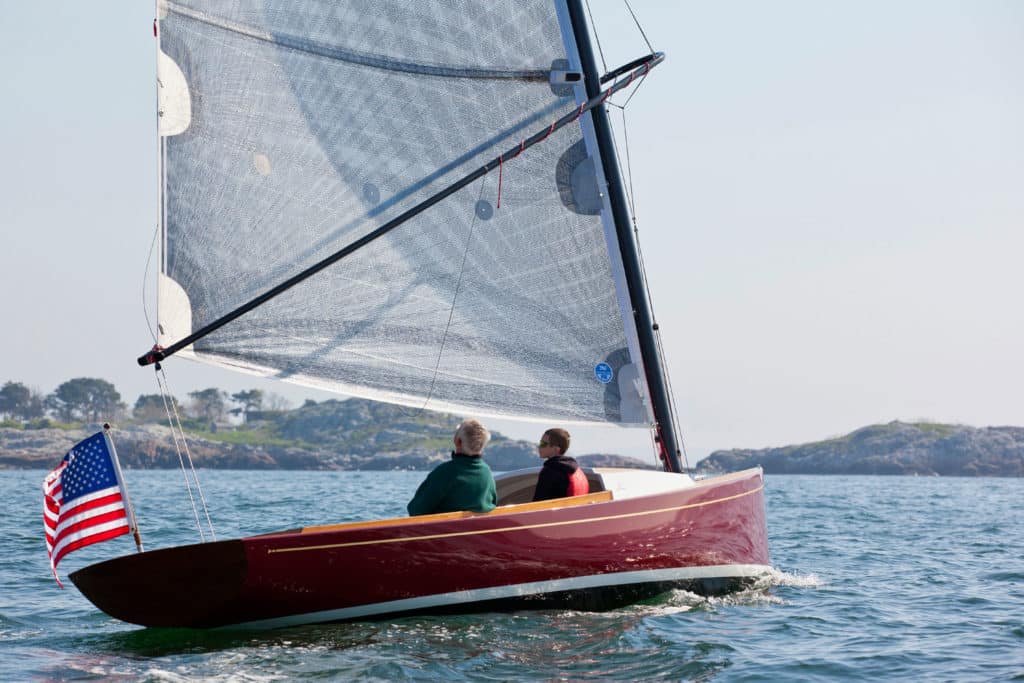
If you have an eye for elegant lines and your heart goes pitter-patter over just the right amount of overhang beneath a counter transom, the Marblehead 22 daysailer, designed by Doug Zurn and built by Samoset Boatworks in Boothbay, Maine, will definitely raise your pulse. Traditional-looking above the waterline and modern beneath, the cold-molded hull sports a deep bulb keel and a Hall Spars carbon-fiber mast with a wishbone rig and square-top main. The 11-foot-9-inch cockpit can seat a crowd, and a small cuddy forward will let you stow your friends’ gear for the day. samosetboatworks.com
Catalina 22 Sport
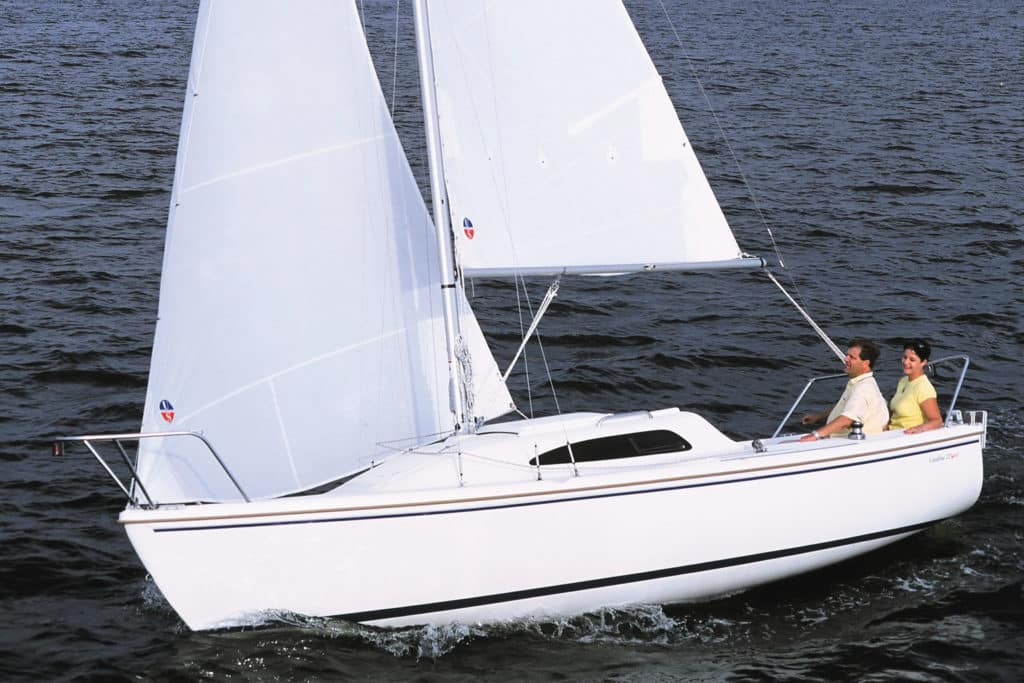
Many a harbor plays host to an active fleet of Catalina 22s, one of the most popular small sailboats over the years, given its basic amenities and retractable keel, which allows it to be easily trailered. Recently, the company introduced the Catalina 22 Sport, an updated design that can compete with the older 22s. The boat features a retractable lead keel; a cabin that can sleep four, with a forward hatch for ventilation; and a fractional rig with a mainsail and a roller-furling jib. Lifelines, a swim ladder, and an engine are options, as are cloth cushions; vinyl cushions are standard. The large cockpit will seat a crowd or let a mom-and-pop crew stretch out and enjoy their sail. It’s clear why the Catalina 22 is one of the best sailboats under 25 feet. catalinayachts.com
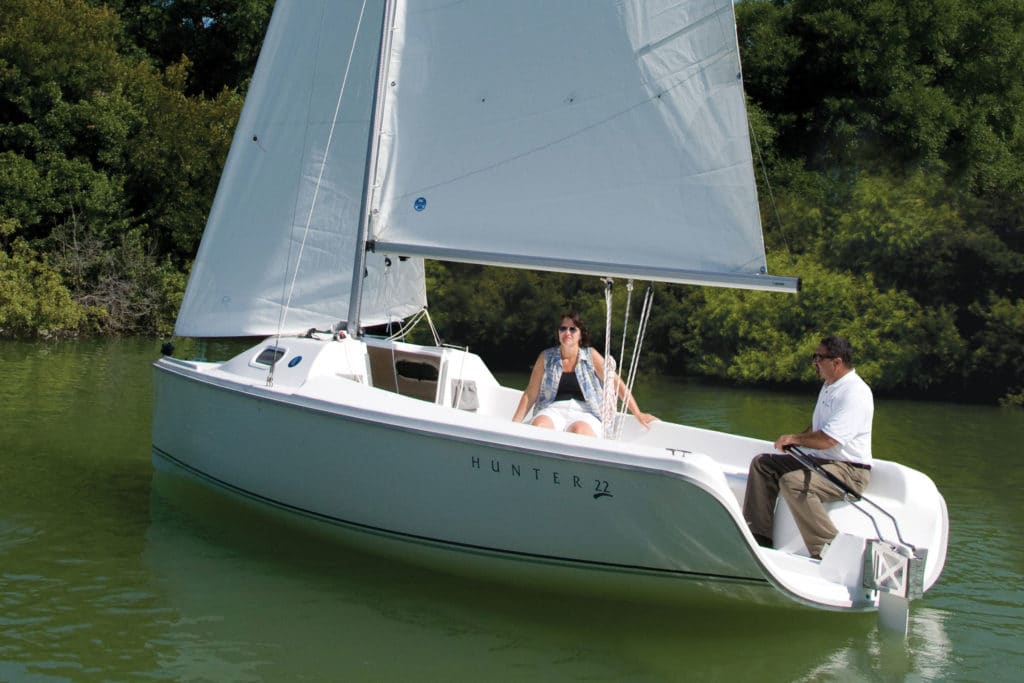
With its large, open-transom cockpit and sloop rig, the Hunter 22 makes a comfortable daysailer for family and friends. But with its cuddy cabin, twin bunks, optional electrical system, opening screened ports, and portable toilet, a parent and child or a couple could comfortably slip away for an overnight or weekend. Add in the optional performance package, which includes an asymmetric spinnaker, a pole, and a mainsheet traveler, and you could be off to the races. The boat features a laminated fiberglass hull and deck, molded-in nonskid, and a hydraulic lifting centerboard. Mount a small outboard on the stern bracket, and you’re set to go. marlow-hunter.com
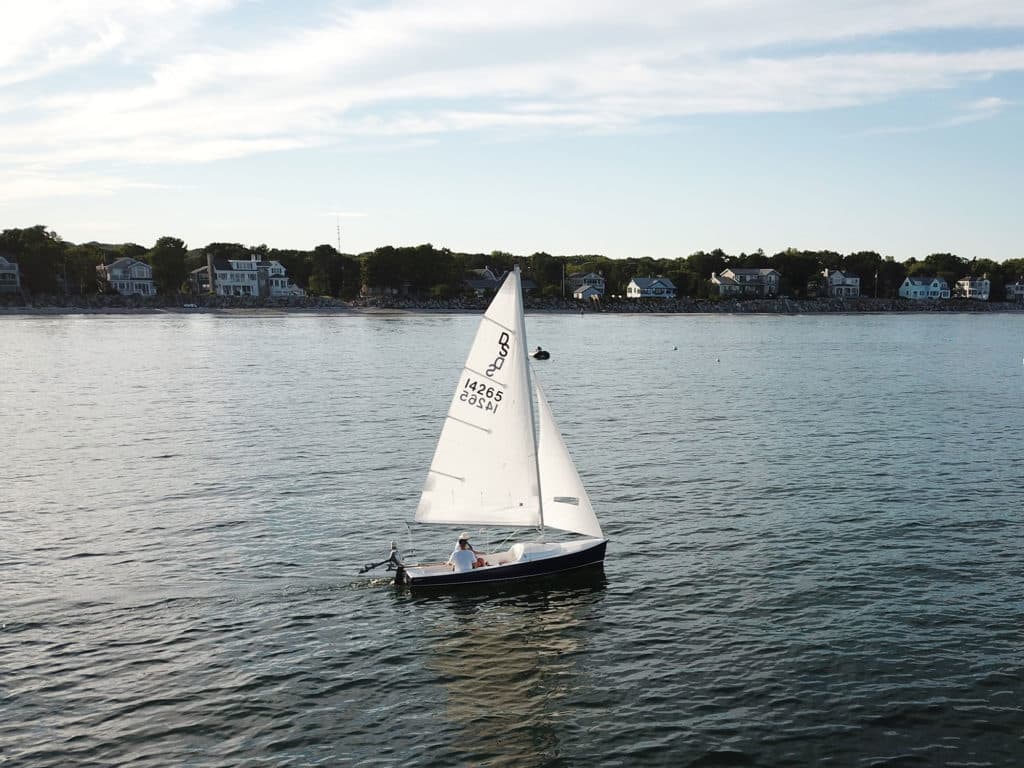
Not sure whether you want to race, cruise or just go out for an afternoon sail? Since 1958, sailors have been having a ball aboard the Uffa Fox/George O’Day-designed Daysailer. Fox, who in the 1950s was on the cutting edge of planning-dinghy design, collaborated with Fall River, Massachusetts boatbuilder O’Day Corp. to build the 16-foot Daysailer, a boat that features a slippery hull and a small cuddy cabin that covers the boat roughly from the mast forward. Thousands of Daysailers were built by various builders, and they can be found used for quite affordable prices. There are active racing fleets around the US, and new Daysailers are still in production today, built by Cape Cod Ship Building. capecodshipbuilding.com
BayRaider from Swallow Boats
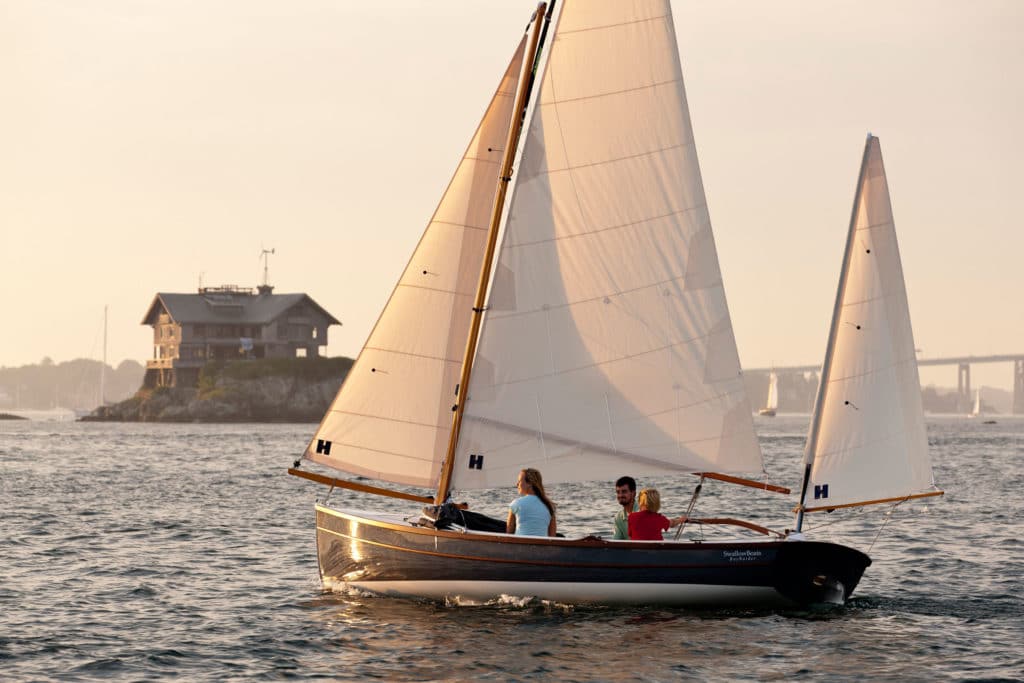
Easy to rig and trailer, the BayRaider from England’s Swallow Yachts is a relative newcomer to the small-boat market in the United States. Nearly all of its 19 feet 9 inches is open cockpit, though a spray hood can be added to keep the forward sections dry. The BayRaider is ketch-rigged with a gunter-style mainmast. The topmast and mizzen are both carbon-fiber, which is an option for the mainmast as well. The BayRaider can be sailed with a dry hull in lighter conditions or with 300 pounds of water ballast to increase its stability. With the centerboard and hinged rudder raised, the boat can maneuver in even the thinnest water.
$28,900, (904) 234-8779, swallowyachts.com
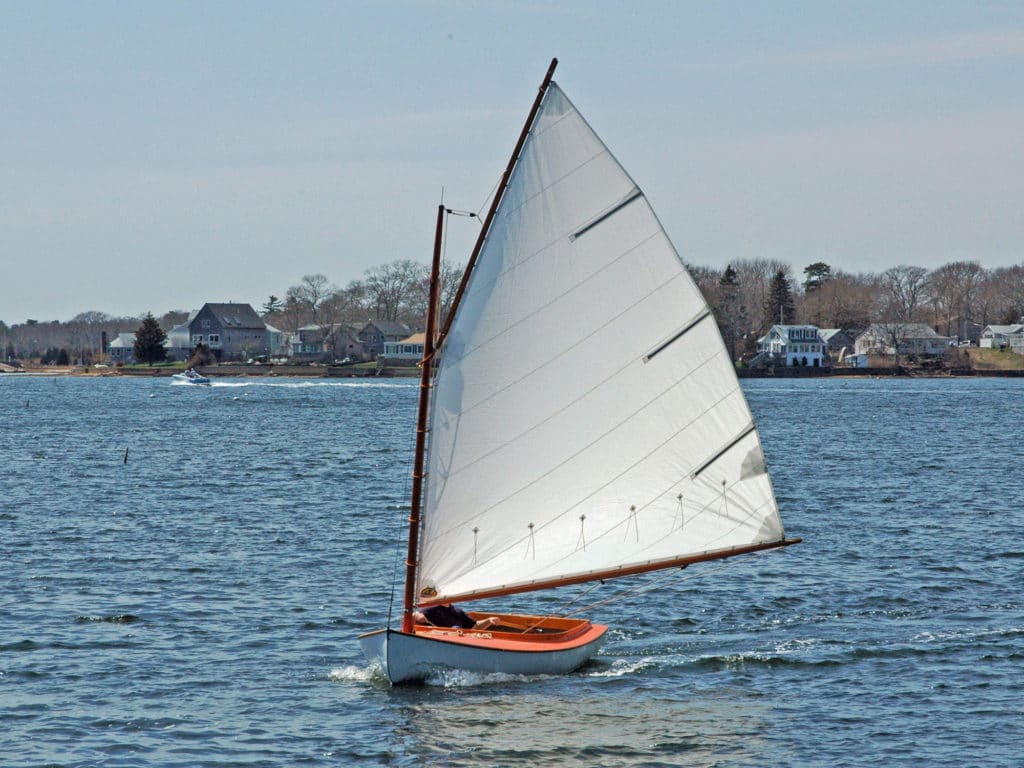
Big fun can come in small packages, especially if your vessel of choice happens to be the 12 ½-foot Beetle Cat. Designed by John Beetle and first built in 1921, the wooden shallow draft sailboat is still in production today in Wareham, Massachusetts at the Beetle Boat Shop. With a draft of just 2 feet, the boat is well-suited for shallow bays, but equally at home in open coastal waters. The single gaff-rigged sail provides plenty of power in light air and can be quickly reefed down to handle a blow. In a word, sailing a Beetle Cat is fun. beetlecat.com
– LEARN THE NAVIGATION RULES – Know the “Rules of the Road” that govern all boat traffic. Be courteous and never assume other boaters can see you. Safety Tip Provided by the U.S. Coast Guard
West Wight Potter P 19
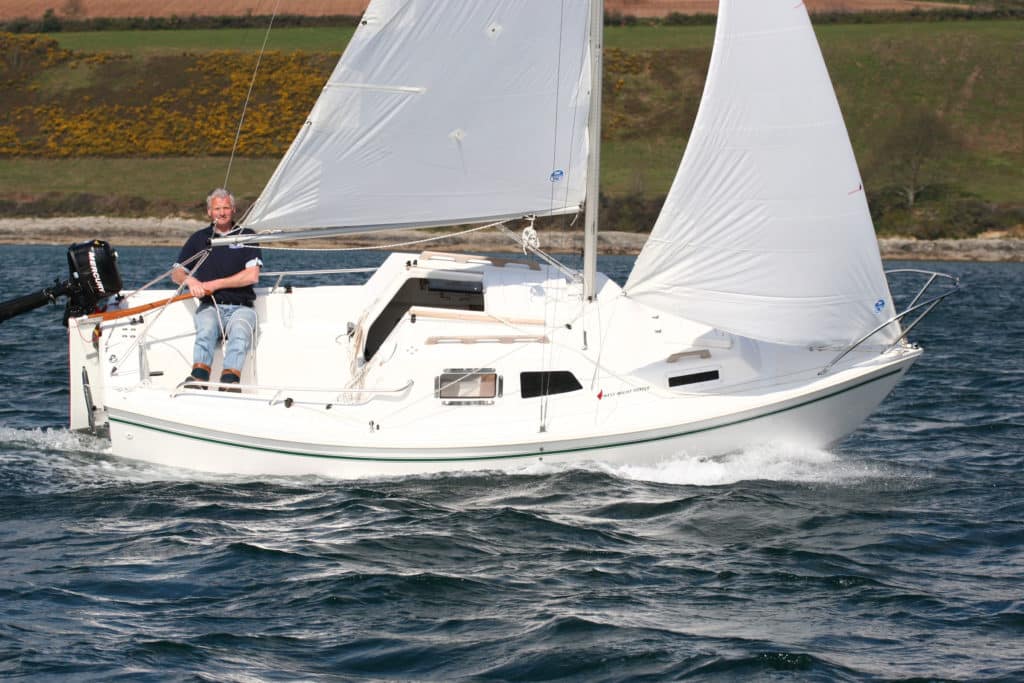
With berths for four and a workable galley featuring a cooler, a sink, and a stove, West Wight Potter has packed a lot into its 19-foot-long P 19. First launched in 1971, this is a line of boats that’s attracted a true following among trailer-sailors. The P 19′s fully retractable keel means that you can pull up just about anywhere and go exploring. Closed-cell foam fore and aft makes the boat unsinkable, and thanks to its hard chine, the boat is reportedly quite stable under way. westwightpotter.com
NorseBoat 17.5
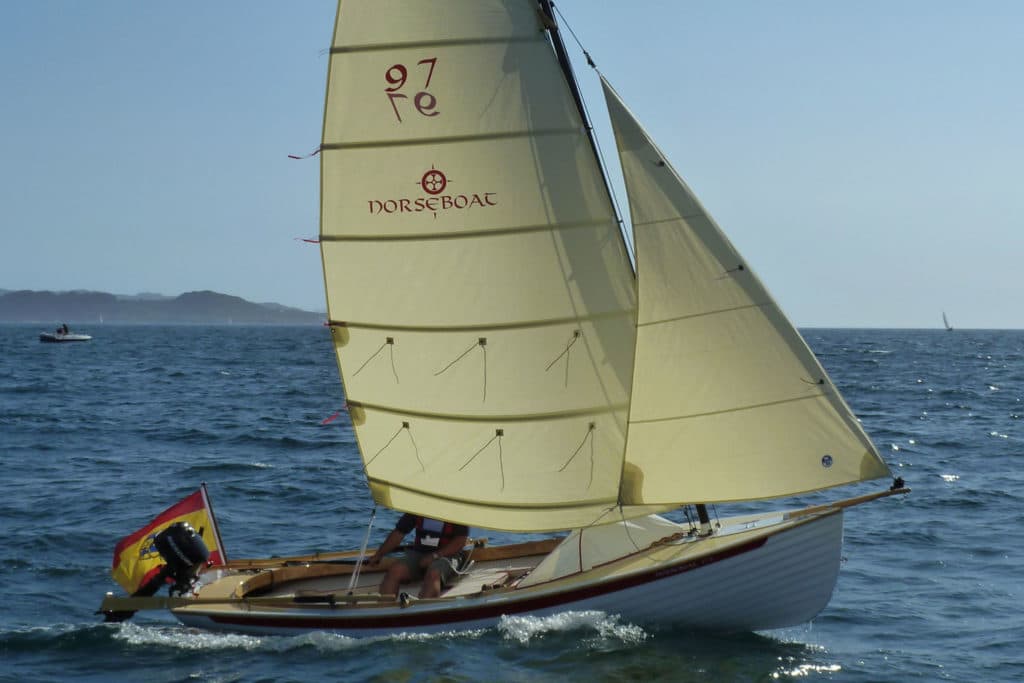
Designed for rowing and sailing (a motor mount is optional), the Canadian-built NorseBoat 17.5—one of which was spotted by a CW editor making its way through the Northwest Passage with a two-man crew—features an open cockpit, a carbon-fiber mast, and a curved-gaff rig, with an optional furling headsail set on a sprit. The lapstrake hull is fiberglass; the interior is ply and epoxy. The boat comes standard with two rowing stations and one set of 9-foot oars. The boat is designed with positive flotation and offers good load-carrying capacity, which you could put to use if you added the available canvas work and camping tent. NorseBoats offers a smaller sibling, the 12.5, as well; both are available in kit form.
$19,000, (902) 659-2790, norseboat.com
Montgomery 17
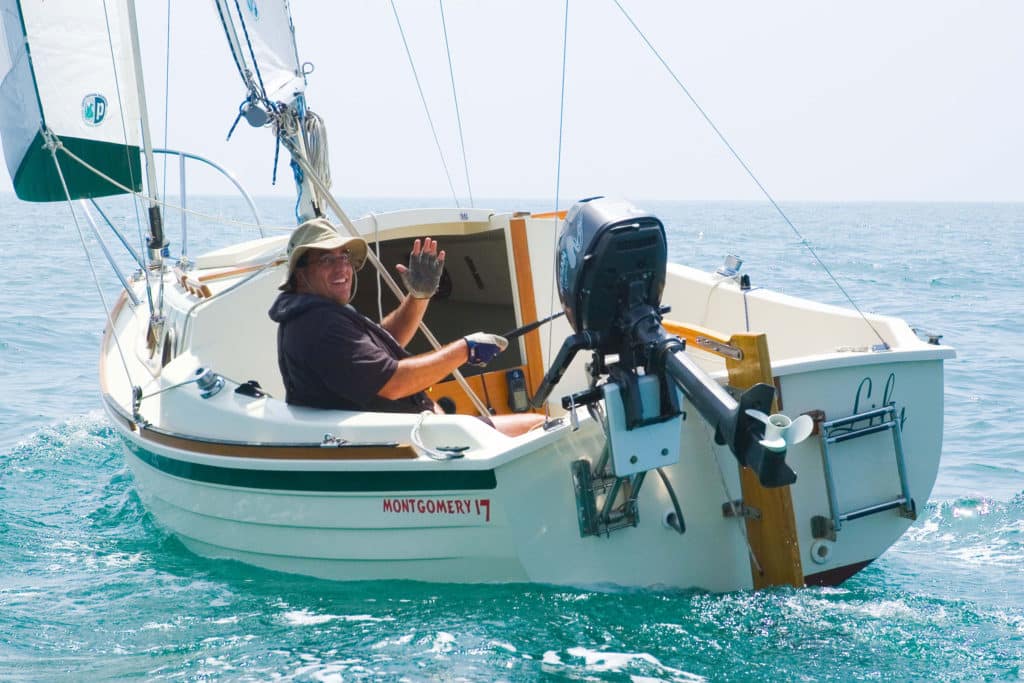
Billed as a trailerable pocket cruiser, the Montgomery 17 is a stout-looking sloop designed by Lyle Hess and built out of fiberglass in Ontario, California, by Montgomery Boats. With a keel and centerboard, the boat draws just under 2 feet with the board up and can be easily beached when you’re gunkholing. In the cuddy cabin you’ll find sitting headroom, a pair of bunks, a portable toilet, optional shore and DC power, and an impressive amount of storage space. The deck-stepped mast can be easily raised using a four-part tackle. The builder reports taking his own boat on trips across the Golfo de California and on visits to California’s coastal islands. Montgomery makes 15-foot and 23-foot models, as well. If you’re in search of a small sailboat with a cabin, the Montgomery 17 has to be on your wish list.
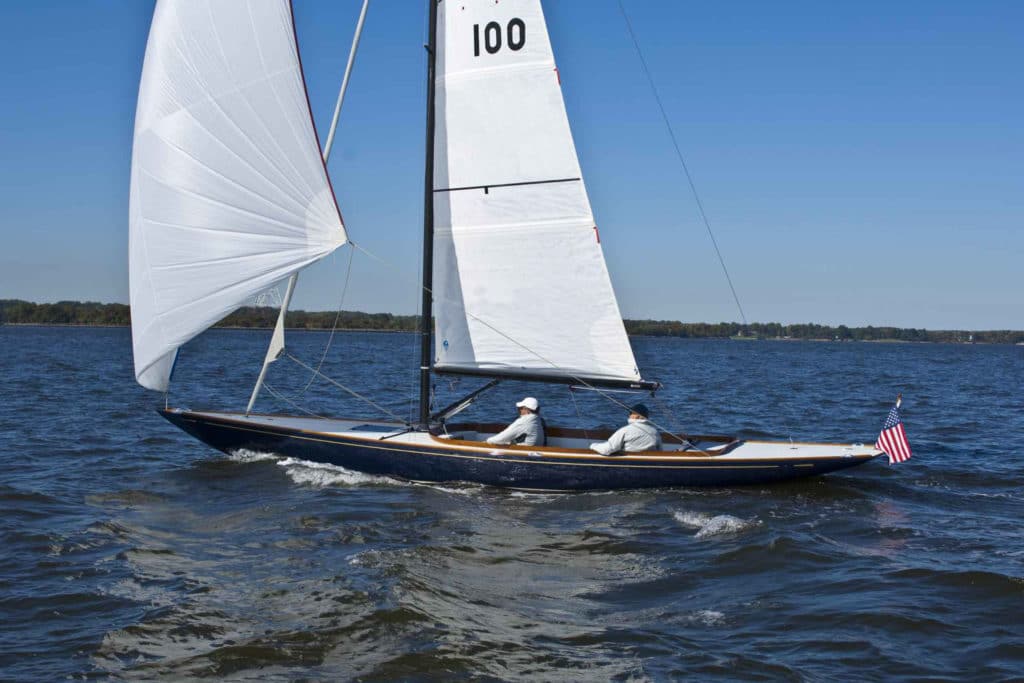
With long overhangs and shiny brightwork, the CW Hood 32 is on the larger end of the daysailer spectrum. Designers Chris Hood and Ben Stoddard made a conscious decision to forego a cabin and head in favor of an open cockpit big enough to bring 4 or 5 friends or family out for an afternoon on the water. The CW Hood 32 is sleek and graceful through the water and quick enough to do some racing, but keeps things simple with a self-tacking jib and controls that can be lead back to a single-handed skipper. A top-furling asymmetrical, electric sail drive and Torqeedo outboard are all optional. The CW Hood 32 makes for a great small family sailboat. cwhoodyachts.com
Sun Cat from Com-Pac
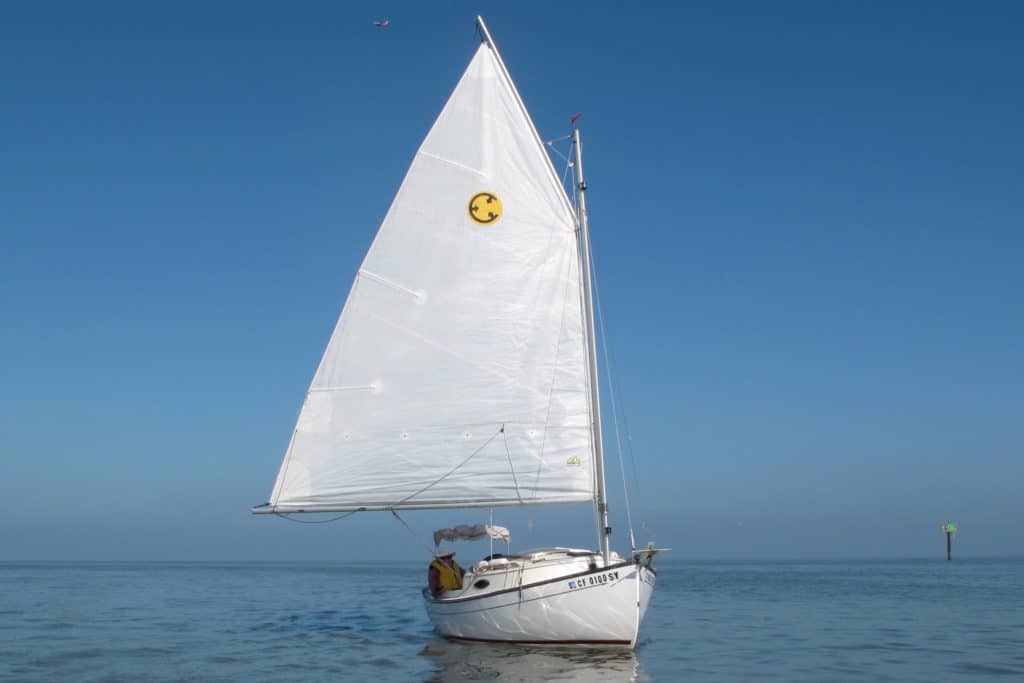
Shallow U.S. East Coast bays and rock-strewn coasts have long been graced by cat boats, whose large, gaff-rigged mainsails proved simple and powerful both on the wind and, better yet, when reaching and running. The 17-foot-4-inch Sun Cat, built by Com-Pac Yachts, updates the classic wooden cat with its fiberglass hull and deck and the easy-to-step Mastender Rigging System, which incorporates a hinged tabernacle to make stepping the mast a one-person job. If you want a personal sailboat ideal for solo sailing, the Sun Can is a great choice. Belowdecks, the twin 6-foot-5-inch berths and many other features and amenities make this cat a willing weekender.
$19,800, (727) 443-4408, com-pacyachts.com

Catalina 16.5
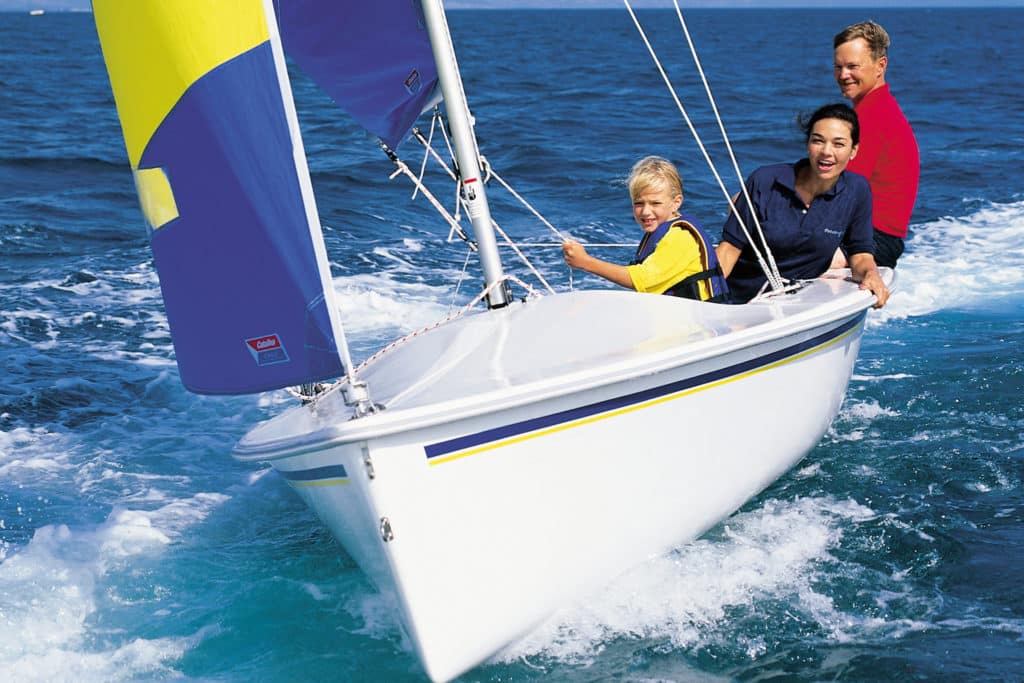
The Catalina 16.5 sits right in the middle of Catalina Yachts’ line of small sailboats, which range from the 12.5 to the 22 Capri and Sport, and it comes in both an easy-to-trailer centerboard model and a shoal-draft fixed-keel configuration. With the fiberglass board up, the 17-foot-2-inch boat draws just 5 inches of water; with the board down, the 4-foot-5-inch draft suggests good windward performance. Hull and deck are hand-laminated fiberglass. The roomy cockpit is self-bailing, and the bow harbors a good-sized storage area with a waterproof hatch. catalinayachts.com
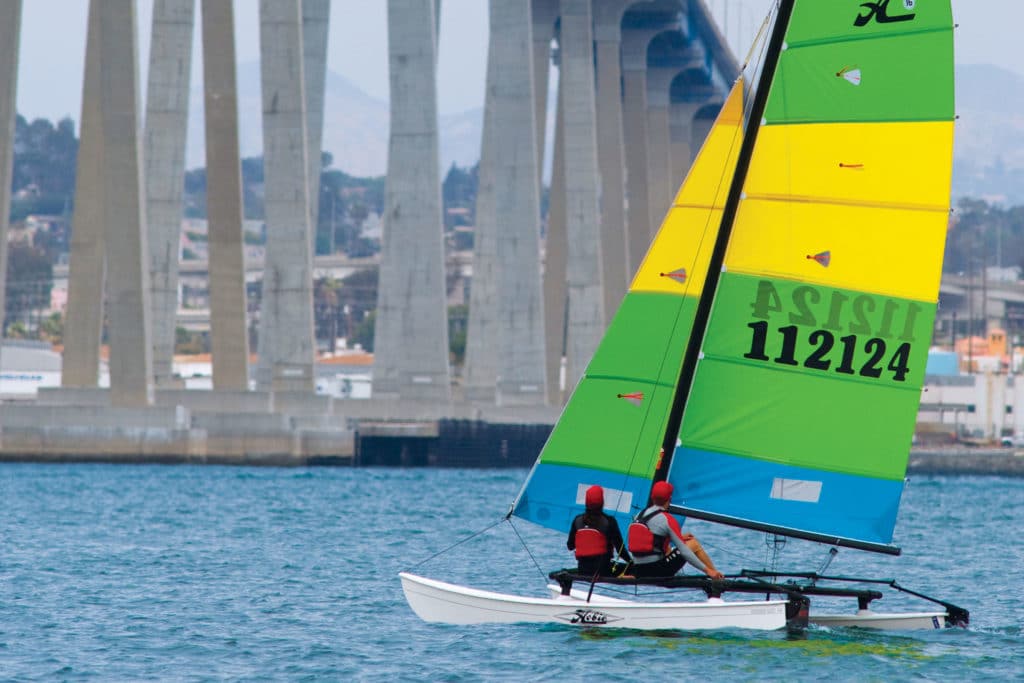
No roundup of best small sailboats (trailerable and fun too) would be complete without a mention of the venerable Hobie 16, which made its debut in Southern California way back in 1969. The company has introduced many other multihulls since, but more than 100,000 of the 16s have been launched, a remarkable figure. The Hobie’s asymmetric fiberglass-and-foam hulls eliminate the need for daggerboards, and with its kick-up rudders, the 16 can be sailed right up to the beach. Its large trampoline offers lots of space to move about or a good place to plant one’s feet when hanging off the double trapezes with a hull flying. The boat comes with a main and a jib; a spinnaker, douse kit, trailer, and beach dolly are optional features. hobiecat.com
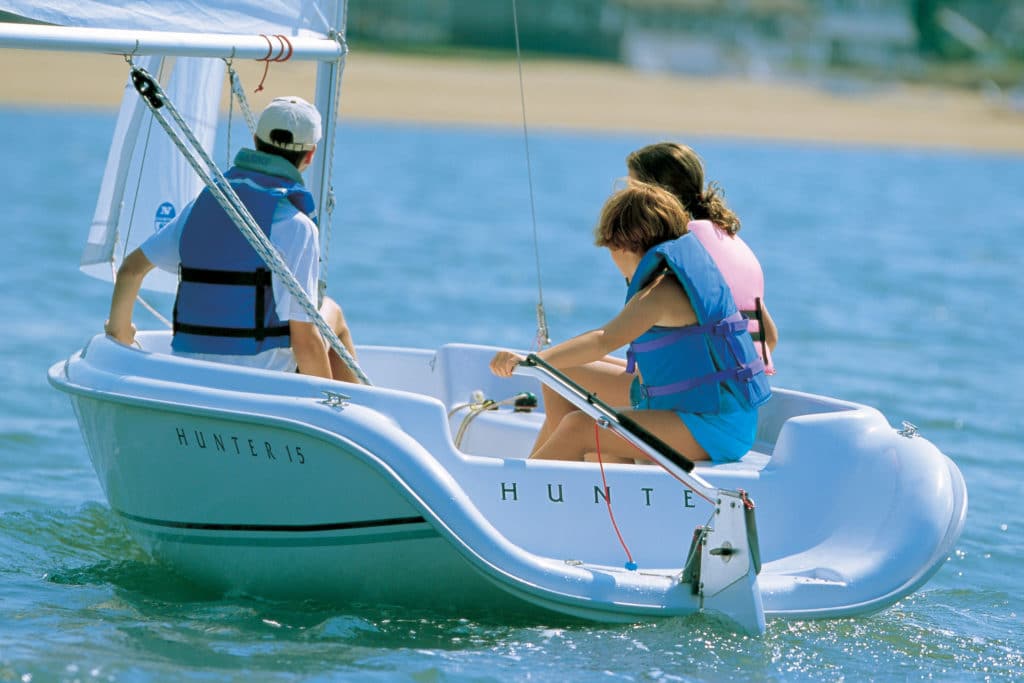
Novice sailors or old salts looking for simplicity could both enjoy sailing the Hunter 15. With a fiberglass hull and deck and foam flotation, the boat is sturdily built. The ample freeboard and wide beam provide stability under way, and the heavy-duty rubrail and kick-up rudder mean that you won’t have to worry when the dock looms or the going grows shallow. Both the 15 and its slightly larger 18-foot sibling come standard with roller-furling jibs.
$6,900/$9,500 (boat-show prices for the 15 and 18 includes trailers), (386) 462-3077, marlow-hunter.com
– CHECK THE FIT – Follow these guidelines to make sure your life jacket looks good, stays comfortable and works when you need it. Safety Tip Provided by the U.S. Coast Guard
Super Snark
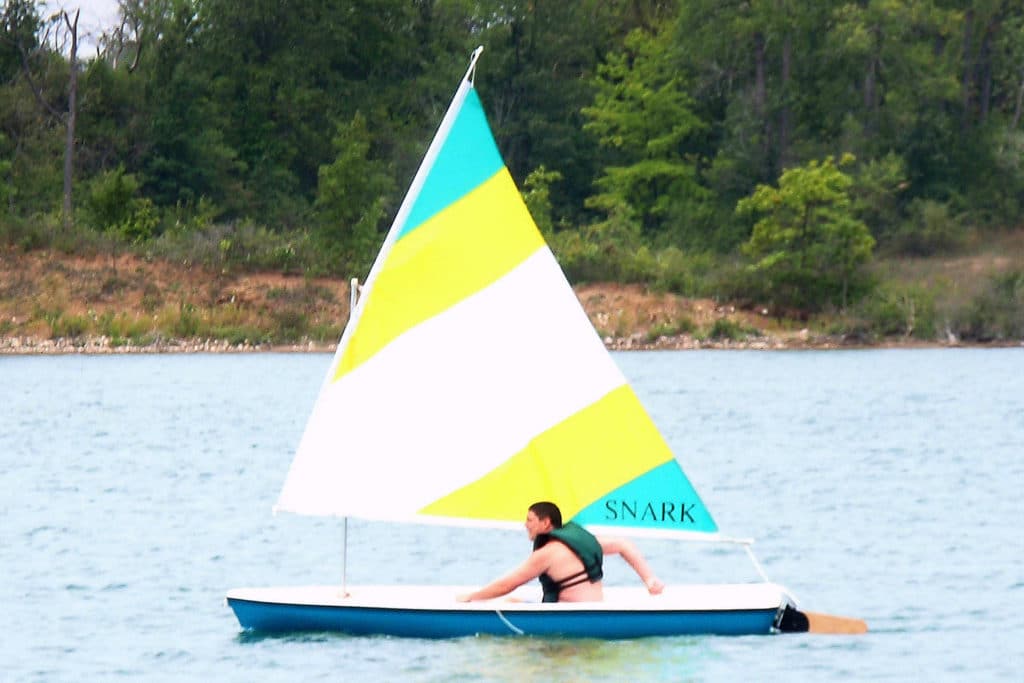
Under various owners, the Snark brand of sailboats, now built by Meyers Boat Co., has been around since the early 1970s. The Super Snark, at 11 feet, is a simple, easily car-topped daysailer that’s fit out with a lateen rig and sail. Billed as unsinkable, the five boats in the company’s line are built with E.P.S. foam, with the external hull and deck vacuum-formed to the core using an A.B.S. polymer. The Super Snark weighs in at 50 pounds, and with a payload capacity of 310 pounds, the boat can carry two.
$970, (800) 247-6275, meyersboat.com
Norseboat 21.5
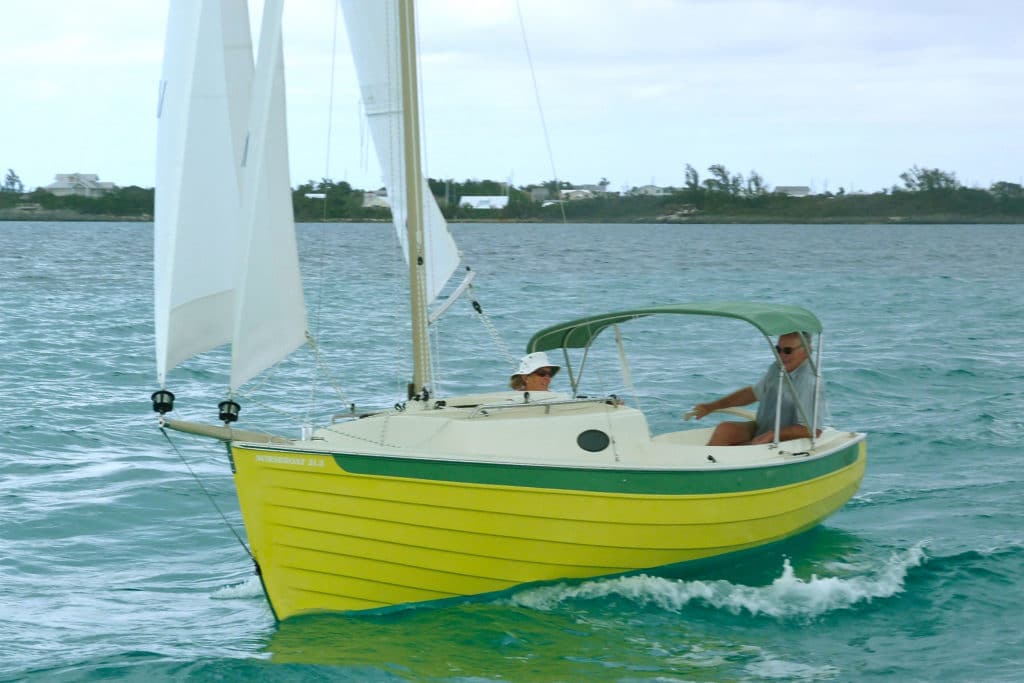
Built in Canada, the NorseBoat 21.5 is a rugged looking craft that comes in a couple of configurations: one with an open cockpit and small doghouse, and another with a smaller cockpit and cabin that houses a double berth for two adults and optional quarter berths for the kids. Both carry NorseBoat’s distinctive looking carbon fiber gaff-rigged mast with main and jib (a sprit-set drifter is optional), and come with a ballasted stub keel and centerboard. Because of its lightweight design, the boat can be rowed and is easily trailered.
$36,000 (starting), 902-659-2790, norseboat.com
Flying Scot
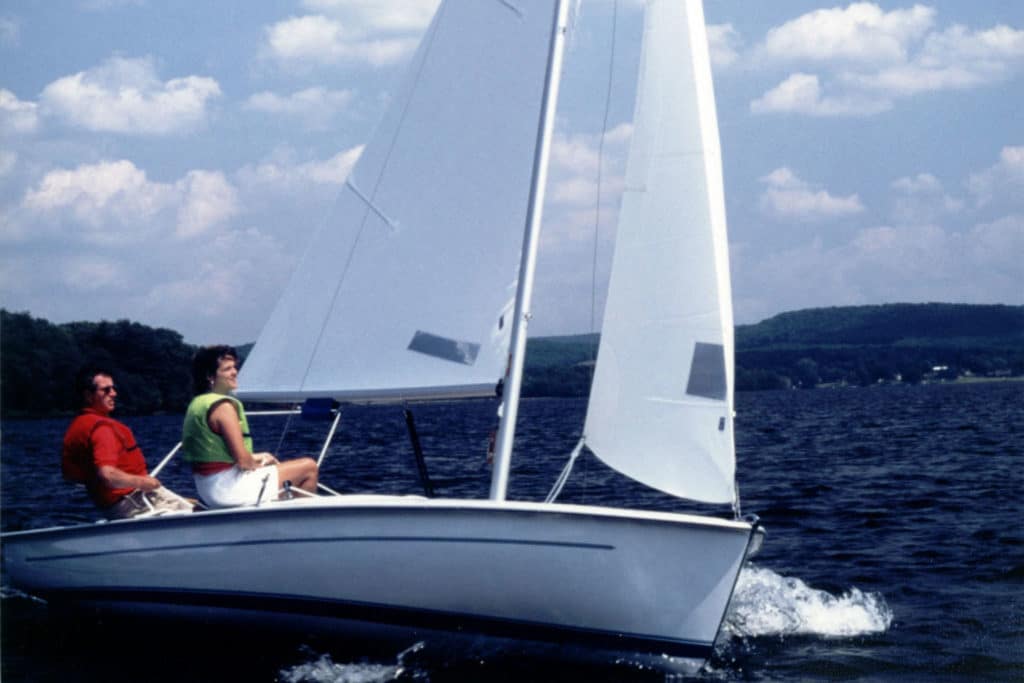
Talk about time-tested, the 19-foot Flying Scot has been in production since 1957 and remains a popular design today. Sloop rigged, with a conventional spinnaker for downwind work, the boat is an easily sailed family boat as well as a competitive racer, with over 130 racing fleets across the U.S. Its roomy cockpit can seat six to eight, though the boat is often sailed by a pair or solo. Hull and deck are a fiberglass and balsa core sandwich. With the centerboard up, the boat draws only eight inches. Though intended to be a daysailer, owners have rigged boom tents and berths for overnight trips, and one adventurous Scot sailor cruised his along inland waterways from Philadelphia to New Orleans.
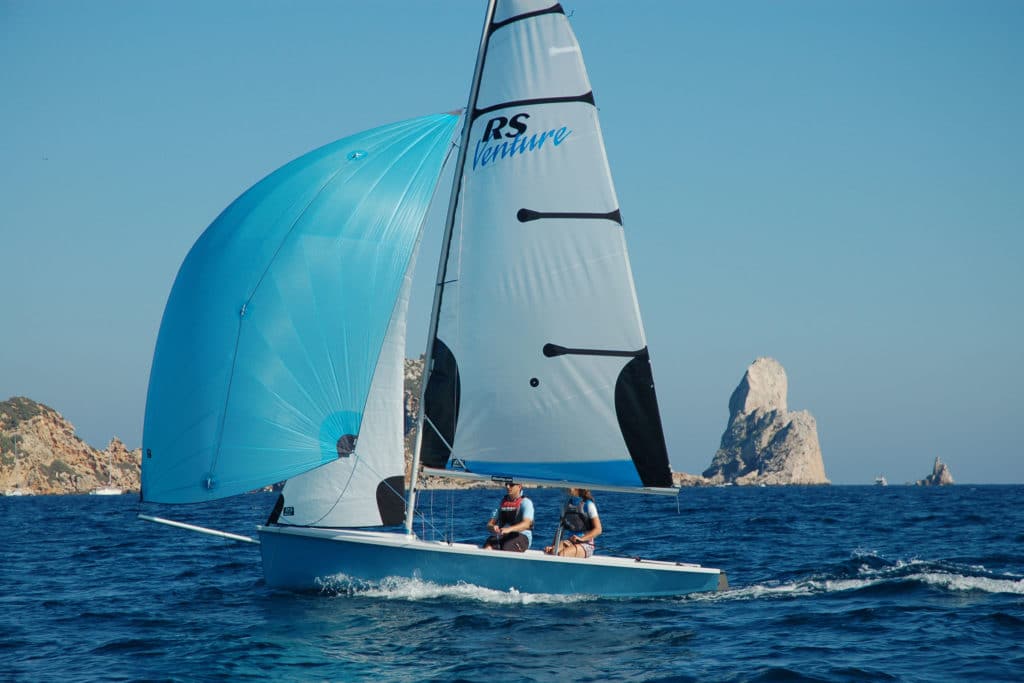
Known primarily for its line of racing dinghys, RS Sailing also builds the 16-foot, 4-inch Venture, which it describes as a cruising and training dinghy. The Venture features a large, self-draining cockpit that will accommodate a family or pack of kids. A furling jib and mainsail with slab reefing come standard with the boat; a gennaker and trapeze kit are options, as is an outboard motor mount and transom swim ladder. The deck and hull are laid up in a fiberglass and Coremat sandwich. The Venture’s designed to be both a good performer under sail, but also stable, making it a good boat for those learning the sport.
$14,900, 203-259-7808, rssailing.com
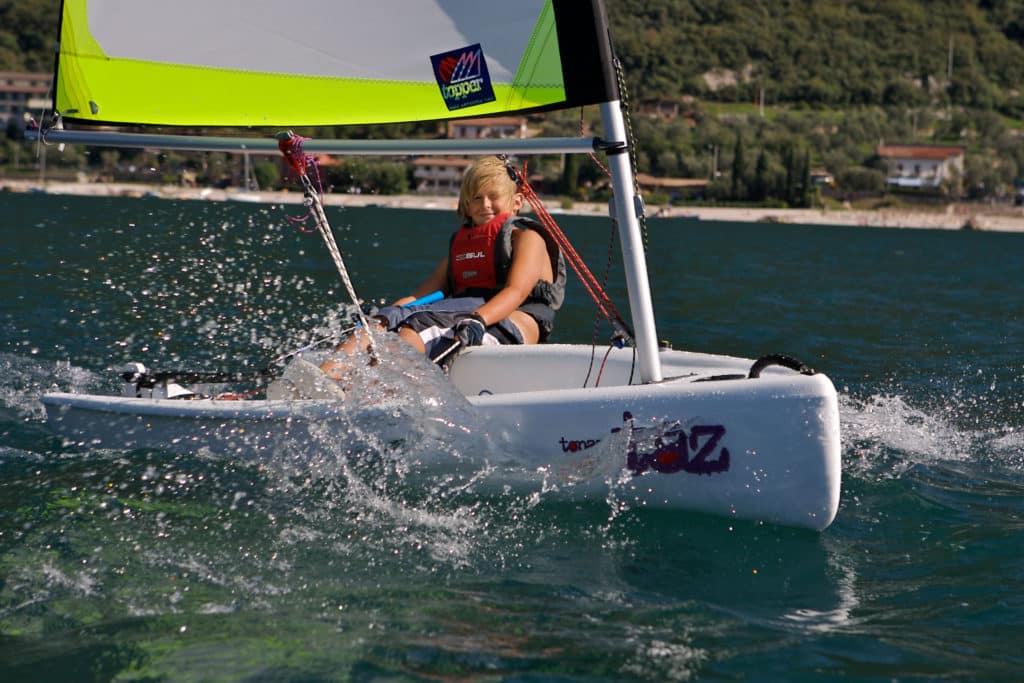
Topper makes a range of mono- and multihull rotomolded boats, but the model that caught one editor’s eye at Strictly Sail Chicago was the Topaz Taz. At 9 feet, 8 inches LOA and weighing in at 88 pounds, the Taz is not going to take the whole crowd out for the day. But, with the optional mainsail and jib package (main alone is for a single child), the Taz can carry two or three kids or an adult and one child, and would make a fun escape pod when tied behind the big boat and towed to some scenic harbor. The hull features Topper’s Trilam construction, a plastic and foam sandwich that creates a boat that’s stiff, light, and durable, and shouldn’t mind being dragged up on the beach when it’s time for a break.
$2,900 (includes main and jib), 410-286-1960, topazsailboats.com
WindRider WRTango
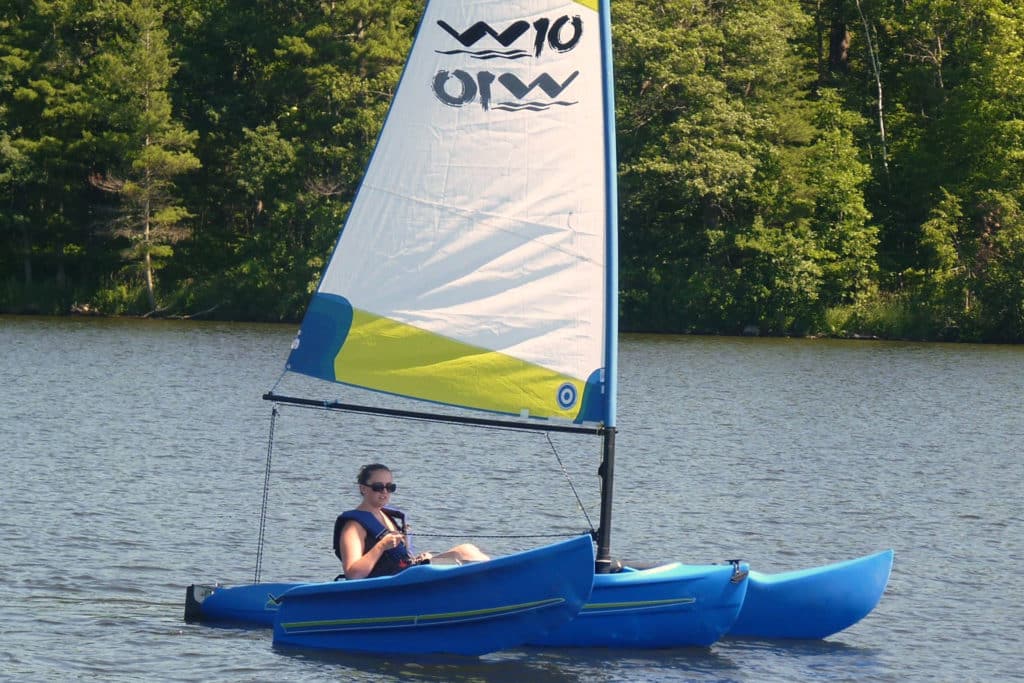
WRTango, a fast, sturdy, 10-foot trimaran that’s easy to sail, is the newest portable craft from WindRider International. It joins a line that includes the WR16 and WR17 trimarans. The Tango features forward-facing seating, foot-pedal steering, and a low center of gravity that mimics the sensation of sitting in a kayak. It weighs 125 pounds (including the outriggers and carbon-fiber mast), is extremely stable, and has single-sheet sail control. The six-inch draft and kick-up rudder make it great for beaching, while the hull and outriggers are made of rotomolded polyethylene, so it can withstand running into docks and being dragged over rocks.
$3,000, 612-338-2170, windrider.com
- More: 21 - 30 ft , Boat Gallery , day sailing , dinghy , Sailboat Reviews , Sailboats , under 20 ft
- More Sailboats

Sailboat Preview: Elan GT6 Explorer

For Sale: 1984 Camper & Nicholsons 58

Alubat Updates OVNI Models

For Sale: Little Harbor 63 Ketch
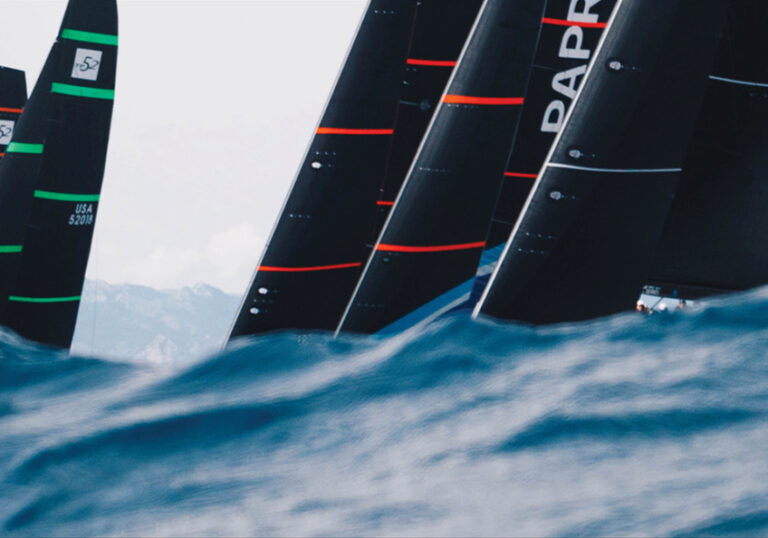
North Sails Parent Company Buys Doyle, Quantum
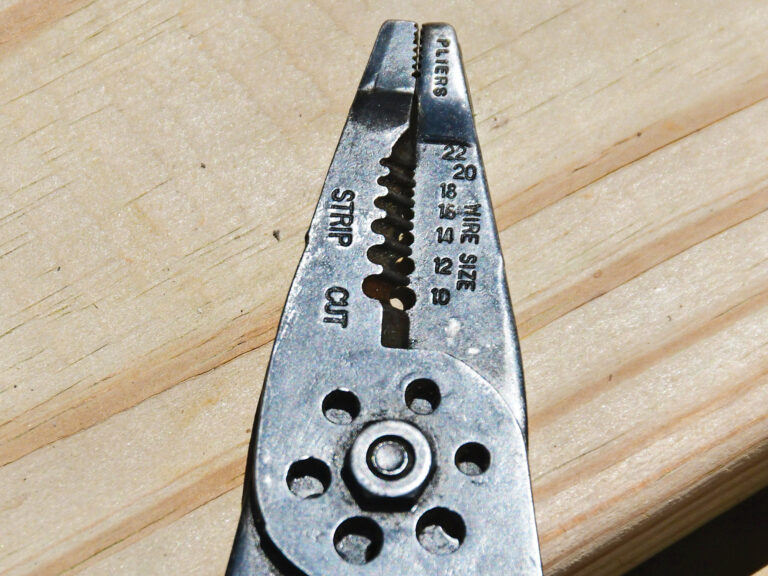
Top Tools for Sailboat Cruising: Must-Have Gear for 2024
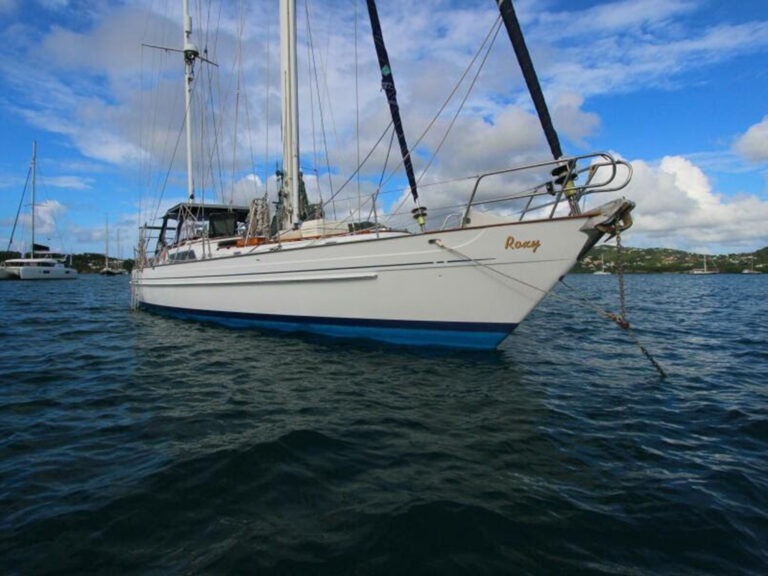
Sailing Avocet : A New Adventure Begins
- Digital Edition
- Customer Service
- Privacy Policy
- Terms of Use
- Email Newsletters
- Cruising World
- Sailing World
- Salt Water Sportsman
- Sport Fishing
- Wakeboarding
There are 3 major theories as to why Mike Lynch’s Bayesian yacht sank so fast

On Thursday, Italian authorities retrieved a fifth body from the Bayesian superyacht that sank in a storm earlier this week, killing British technology entrepreneur Mike Lynch.
The 184-foot British-flagged vessel sank early Monday , and the five identified bodies thus far from the incident include Mike Lynch , founder of Autonomy and investor in Darktrace; Morgan Stanley Bank International chairman Jonathan Bloomer and his wife, Judy; Chris Morvillo, a Clifford Chance lawyer, and his wife, Neda, were also found. Lynch’s 18-year-old daughter Hannah is still missing.
There are several theories as to why the massive $39 million boat sank in just about 60 seconds. And the maker of the ship says the crew should have had time to rescue passengers.
Theory one: The mast was pushed over by the wind
The first theory is that the mast on the massive vessel was so tall it tipped the boat over when a waterspout— essentially a water tornado —hit the boat. Giovanni Costantino , CEO of the Italian Sea Group , which owns several boat brands including the yacht’s builder, Perini Navi , told the Financial Times the boat was “designed to be absolutely stable” because it had the “world’s second-tallest mast.” But Karsten Borner, the skipper of a nearby boat, suggests the sinking actually could have been caused by high winds hitting the 236-foot mast. Even with sails stowed, the mast and its rigging would have provided a vast surface area for wind resistance.
The Bayesian “went flat [with the mast] on the water, and then went down,” Borner told Reuters . For reference, the tallest mast on a sailing boat on record was the Mirabella V at nearly 247 feet long, according to Guinness World Records .
Theory two: The retractable keel was in the wrong position
The second theory about the cause of the Bayesian sinking is that the keel was retracted when it should have been lowered, making the boat less stable. The keel is a structural beam that runs under the middle of the boat from bow to stern, giving the boat better stability, a lower center of gravity in the water, and more control while moving forward. “Without the keel, a boat might slip or skim on the water,” according to boat manufacturer Sea Born .
The Bayesian had a keel that could be retracted, according to the yacht’s manufacturer, Perini Navi. It could be lifted to reduce the draught of the boat, making it easier to enter shallow harbors. It’s possible that if the keel had been in the raised position rather than extended, that could have compromised the boat’s stability in a strong wind, causing it to sink.
Theory three: A major hatch was left open to the waves
Perhaps the strongest theory so far is the notion that someone onboard may have left a major hatch or door ajar, causing the boat to quickly fill with water. In fact, Costantino thinks this is the strongest theory after watching back footage of the sinking; the rear of the boat appears to have a hinged door that folds down into a sea-level deck.
Since it was obvious the Bayesian was taking on water, there should have been time to get everyone off the boat and into rafts, Costantino told the FT .
“Jesus Christ! The hull is intact. The water came in from [hatchways] left open,” he said. “There is no other possible explanation. If maneuvered properly, the boat would have comfortably handled the weather—comfortably,” he said.
Latest in Environment

It’s hotter than ever but people don’t want ice cream, leaving sweets purveyors struggling

9/11-era security measures and climate change put thousands at risk from dams

Greenpeace files supreme court case accusing Finland of climate inaction

Fed Chair Jerome Powell can’t keep ignoring the climate elephant—or its impact on inflation—at Jackson Hole

I sold a $1.4B big-data startup to IBM—then founded a nature sanctuary. Here are the dangers of AI energy consumption

Most Popular

Sinking of a superyacht adds to questions billionaire Mike Lynch wanted to put behind him

China fast-fashion retailer Temu soared like a rocket for two years — in just a few hours, its parent company lost more than $50 billion in market value

Why this year’s Medicare Annual Notice of Change will be vital reading for beneficiaries

After postage price hikes and $87 billion in losses, critics of the USPS leader say latest gambit could lead to death spiral

The stranded Boeing Starliner astronauts planned to hitch a ride home with SpaceX, but their space suits aren’t compatible with Elon Musk’s spacecraft

Does zinc really boost your immunity and metabolism? Experts explain the health benefits
- OC Wally Cento
- 84 Mini Maxi
- IMOCA Open 60
- Consultancy Services
- 30m Blue Water Cruiser
- 25m Explorer Yacht
- 24m Fast Cruising Catamaran
- 23m Performance Cruiser
- 20m Explorer Yacht
- 20m High Performance Cruiser
- 18m Blue Water Cruiser
- 15m Performance Cruiser
- 15m Explorer Yacht
- 12m Explorer Yacht
- Multihull Design
- 18m Explorer Yacht
- 40m Blue Water Cruiser
- 40m Cruiser Racer
- 33m Performance Cruiser
- 30m Wally Cento
- 24m ORCsy Racer Cruiser
- 24m Day Sailer
- Carbon Component Design
- Yacht Performance Development
- CFD and Model Testing
- Twin Rudder Steering Systems
- Custom Deck Hardware
- Modifications and Refit
- VPP Routing and Sail Analysis
- Classic Yacht Refit & Optimisation
- Naval Architecture
- Engineering
- Rudder Design
- Brokerage Services
- 'Seahorse Magazine' #192
- 'Divoc' #190
- Lucent #180
- Influence #171
- 'Eora' #169
- 'The Three Brothers' #168
- 'Edenred' #165
- 'BHB3' #163
- 'Teata' #148
- 'Kite' #144
- ‘Sensei’ #131
- 'Gryphon' #106
- 'Horizon' #104
- 'Sabre II' #93
- 'Letto Di Pletto' #47
- 'Mowgli' #41
- 'Graybeard' #39
- 23.8m Ultime Trimaran
- 20.7m Orma Trimaran
- 18.28m Orma Trimaran
- 16.75m Cruising Catamaran
- 16.1m Cruising Catamaran
- 12.8m Crowther Shockwave Catamaran
- 9.1m Seacart 30 Trimaran
- 26.3m Aluminium Sloop
- 21.0m Steel Schooner
- 21.0m Aluminium Cruising Ketch
- 20.0m Aluminium Explorer Yacht
- 20.0m Luca Brenta Racer Cruiser
- 19.6m Aluminium Bluewater Cruiser
- 19.2m Aluminium Lifting Keel Sloop
- 18.8m Custom Steel Sloop
- 18.23m Mylius Racer Cruiser
- 16.0m Sly Cruiser Racer
- 14.5m Aluminium Cruising yacht
- 13.87m Wooden Motor Sailer
- 11.6m Classic Pilot Cutter
- 25.25m Reichel Pugh Maxi
- 18.28m IMOCA 60 Nexans WeWise
- 18.28m IMOCA 60 'Canada Ocean Racing'
- 18.28m IMOCA 60 One Planet
- 15.85m TP52 Georgia
- 15.84m TP52 Racing Yacht 'Alizee'
- 15.25m Pegasus Open 50
- 12.8m Fast 40
- 10.89m Figaro 3
- 10.11m Sun Fast 3300
- 19.2m Lifting Keel Sloop
- 14.5m Aluminium Cruising Yacht
| This design is based on the hull of OC’s Generation 3 Class 40. This ‘open class’ hull type suits a cruising design in two significant ways: a) the hull is naturally high volume, excellent in terms of space for cruising, b) the large waterplane means the yacht has far less sinkage (the depth a hull sinks as cruising payload is added) than a conventional hull. The design is best described as a high latitude performance blue water explorer yacht. Her cruising ground is centred on Southern Chile and Patagonia. The client needed a fast short-handed cruising yacht that covers miles easily due to the length of the Chilean coast, distances between harbours and unpredictability of the weather. To discuss your own particular cruising requirements contact: For an explanation of the technology behind the design process go to: For an insight into our engineering and detailed design work go to: |
Advertisement
Supported by
Questions for Investigators Trying to Unravel Mystery of Luxury Yacht’s Sinking
The investigators searching for answers about the shipwreck, leaving seven dead, face questions about extreme weather and possible human error or problems with the yacht itself.
- Share full article

By Alan Yuhas
More than 180 feet long, with a mast towering about 240 feet and a keel that could be lowered for greater stability, the Bayesian luxury yacht did not, in the eyes of its maker, have the vulnerabilities of a ship that would easily sink.
“It drives me insane,” Giovanni Costantino, the chief executive of the Italian Sea Group, which in 2022 bought the company that made the ship, said after its wreck last week. “Following all the proper procedures, that boat is unsinkable.”
But the $40 million sailing yacht sank within minutes and with fatal results: seven dead, including the British technology billionaire Michael Lynch, his teenage daughter, four of Mr. Lynch’s friends and a member of the crew. Fifteen people, including the captain, escaped on a lifeboat.
Mr. Lynch had invited family, friends and part of his legal team on a cruise in the Mediterranean to celebrate his acquittal in June of fraud charges tied to the sale of his company to the tech giant Hewlett-Packard.
The Italian authorities have opened a manslaughter investigation, searching for answers from the survivors, the manufacturer and the wreck itself. They face a range of questions and possible factors.
An ‘earthquake’ in the sky?
When the Bayesian sank around 4 a.m. on Aug. 19, the waters in its area, about half a mile off the Sicilian port of Porticello, were transformed by an extremely sudden and violent storm, according to fishermen, a captain in the area and meteorologists.
But what kind of storm is still a mystery, compounded by the fact that a sailing schooner anchored nearby did not have its own disaster. Also unclear is whether the crew was aware that the Italian authorities had issued general warnings about bad weather the night before.
Karsten Börner, the captain of the nearby passenger ship, said he’d had to steady his ship during “really violent” winds . During the storm, he said, the Bayesian seemed to disappear behind his ship.
Severe lightning and strong gusts were registered by the Italian Air Force’s Center for Aerospace Meteorology and Climatology, according to Attilio Di Diodato, its director. “It was very intense and brief in duration,” he said.
The yacht, he said, had most likely been hit by a fierce downburst — a blast of powerful wind surging down during a thunderstorm. His agency put out rough-sea warnings the previous evening, alerting sailors about possible storms.
Locals have said the winds “felt like an earthquake.” A fisherman in Porticello said that he had seen a flare go off in the early-morning hours. His brother ventured to the site once the weather had calmed about 20 minutes later, he said, finding only floating cushions.
The Italian authorities have so far declined to say whether investigators had seen any structural damage to the hull or other parts of the ship.
Open hatches or doors?
The boat executive, Mr. Costantino, has argued that the Bayesian was an extremely safe vessel that could list even to 75 degrees without capsizing. His company, the Italian Sea Group, in 2022 bought the yacht’s manufacturer, Perini Navi, which launched the ship in 2008.
Mr. Costantino said that if some of the hatches on the side and in the stern, or some of the deck doors, had been open, the boat could have taken on water and sunk. Standard procedure in such storms, he said, would be to switch on the engine, lift the anchor and turn the boat into the wind, lowering the keel for extra stability, closing doors and gathering the guests in the main hall inside the deck.
At a news conference on Saturday, almost a week after the sinking, investigators said the yacht had sunk at an angle , with its stern — where the heavy engine was — having gone down first. The wreck was found lying on its right side at the bottom of a bay, about 165 feet deep.

12 guests occupied the yacht’s six cabins. There were also 10 crew members.
Open hatches, doors and cabin windows could have let in water during a storm, according to the manufacturer.

Open hatches, doors and
cabin windows could
have let in water
during a storm,
according to the
manufacturer.
Source: Superyacht Times, YachtCharterFleet, MarineTraffic
By Veronica Penney
Water pouring into open hatches or doors could have contributed to the sinking, experts say, but that on its own may not account for the speed at which such a large boat vanished underwater.
Asked about the hatches at the news conference, the authorities declined to comment on whether they had been found open at the wreck.
The authorities have also not specified whether the boat had been anchored, whether it was under power at the time or whether its sails had been unfurled.
A retracted keel?
The Bayesian had a keel — the fin-like structure beneath a boat that can help stabilize it — that could be retracted or extended, according to its manufacturer. On some yachts, keels can be raised to let the large vessel dock in shallower water, and extended downward to help keep a boat level.
But like the hatches, the status of the keel alone may not explain why a large ship sank with such precipitous speed. Investigators have not disclosed what divers may have seen at the wreck, aside from saying divers had faced obstacles like furnishings and electrical wiring in tight quarters. Officials want to raise the wreck to better examine it, a process that may take weeks.
Human error?
Ambrogio Cartosio, the prosecutor in charge of the case, said at the news conference that it was “plausible” crimes had been committed, but that investigators had not zeroed in on any potential suspects.
“There could be responsibilities of the captain only,” he said. “There could be responsibilities of the whole crew. There could be responsibilities of the boat makers. Or there could be responsibilities of those who were in charge of surveilling the boat.”
It remains unclear what kind of emergency training or preparation took place before the disaster, or what kind of coordination there was during it. So far, none of the surviving crew members have made a public statement about what happened the night the ship sank.
Prosecutors said they want to ask more questions of the captain and crew, who have been in a Sicilian hotel with other survivors. They said that neither alcohol nor drug tests had been performed on crew members, and that they have been allowed to leave Italy.
Prosecutors also said they were also investigating why the captain, an experienced sailor, left the sinking boat while some passengers were still on board.
Besides possible manslaughter charges, the authorities are investigating the possibility of a negligently caused shipwreck.
The bodies of five passengers were found in one cabin, on the left side of the yacht, the authorities said. The five were most likely trying to flee to the higher side of the boat and were probably sleeping when the boat started to sink, they said.
- Types of Sailboats
- Parts of a Sailboat
- Cruising Boats
- Small Sailboats
- Design Basics
- Sailboats under 30'
- Sailboats 30'-35
- Sailboats 35'-40'
- Sailboats 40'-45'
- Sailboats 45'-50'
- Sailboats 50'-55'
- Sailboats over 55'
- Masts & Spars
- Knots, Bends & Hitches
- The 12v Energy Equation
- Electronics & Instrumentation
- Build Your Own Boat
- Buying a Used Boat
- Choosing Accessories
- Living on a Boat
- Cruising Offshore
- Sailing in the Caribbean
- Anchoring Skills
- Sailing Authors & Their Writings
- Mary's Journal
- Nautical Terms
- Cruising Sailboats for Sale
- List your Boat for Sale Here!
- Used Sailing Equipment for Sale
- Sell Your Unwanted Gear
- Sailing eBooks: Download them here!
- Your Sailboats
- Your Sailing Stories
- Your Fishing Stories
- Advertising
- What's New?
- Chartering a Sailboat
- Sailboat Keels
Sailboat Keels - For Performance or Convenience?
While it's true that deep-fin sailboat keels are the most efficient of all in terms of windward ability, many anchorages will be opened up to those who opt for a shoal draft alternative, accepting the perceptible loss to windward sailing performance.
Another benefit with shoal draught sailboats is the increased security to be had when lying alongside a wall, or laid-up ashore in a cradle.
Sailboat keels serve two purposes:~
1. to provide ballast low down and
2. to provide lateral resistance to the wind force exerted on the sails
And like all things in the sailboat world, there are trade-offs to be made.
But just what are the alternatives? Let's take a look...
Long (or Full) Sailboat Keels
These sailboat keels are found on the heavy displacement boats of yesteryear, and are still popular with some long-distance cruising sailors. The Nicholson 32 sketched below is a popular example of a long keel sailboat.
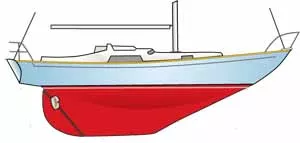
Unlike more modern keels they are built-in as part of the boat's hull construction which, together with encapsulated ballast, makes them extremely robust.
But although well-mannered under sail, such boats are slow and need a large spread of sail to get them moving, especially in light winds. This is largely due to the high wetted area, and consequent drag, of sailboat keels of this type.
In their favour though, long keel sailboats track through the water as if on rails, have a comfortable motion in a seaway and will heave-to readily.
The propeller is protected in an aperture and hulls of this type usually sail over floating fishing gear and pot buoys with impunity.
Close-quarters manoeuvring, such as wriggling in and out of a marina berth, is not their specialty.
Encapsulated Fin Keels
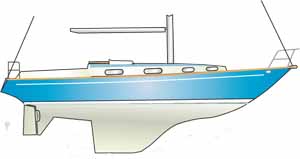
These were the natural development of long fin keels which, whilst retaining their positive attributes, greatly improved manoeuvrability due to the separation of the keel and the rudder.
The Contessa 32 sketched here is a highly regarded example of these long-fin and skeg-hung rudder sailboats.
Deep Fin Keels
Deep fin keels are manufactured separately from the hull, and are subsequently bolted on. Keel bolts have a justified reputation as being 'suspect', owing to their habit of corroding undetected.

But this type of sailboat keel is more efficient to windward than the previous two keel types, creating more lift and reducing leeway.
All sailboats make some leeway - perhaps just a few degrees - when sailing to windward, which creates an angle of attack between the fin keel and the water flowing past it.
Much like a sail, or indeed an aircraft's wing, this produces an area of low-pressure flow on one side of the foil and high pressure on the other. The keel tends to move into the low-pressure area, conveniently reducing leeway and dragging the boat up to windward.
Retractable Keels
Retractable keel sailboats, or lifting keel sailboats, types rely on ropes and pulleys - or hydraulic rams in some cases - to retract a steel centreplate into a keel housing. Some types operate vertically and others pivot around a pin at the forward end, like that on the swing-keeler shown here.
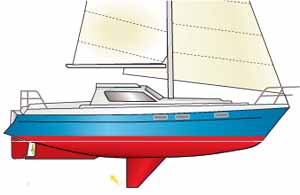
In some designs a ballast stub keel is retained which contains the keel housing. Others have no stub keel at all and all of the keel housing projects into the boat to some degree, usually to the detriment of the accommodation.
When all goes well, sailboat keels of this type would seem the ideal solution to provide deep draft offshore and shoal draft when navigating in shallow waters.
Another much heralded benefit is the ability to dry out upright, particularly when partnered with a twin rudder design. Nevertheless, some offshore sailors may feel that that the added complexity and possibility of failure outweighs all other advantages.
Most skippers of lifting keel boats that I've spoken to have experienced, or continue to worry about, at least one of the following:
- That keel slot in the bottom of the boat. How well engineered is it to resist the side loads imposed on it by the centreplate?
- The rope and pulleys that operate the centreplate. When is something going to break?
- When are all the barnacles, firmly attached to the 'impossible to anti-foul' inner surfaces of the keel housing, going to gang-up and jam the centreplate?
- How soon before a stone wedges itself between the centreplate and the keel housing, firmly jamming it in the 'up' position?
- How much longer can I put up with the noise of the thing rattling around?
But they have their moments of glory...
For UK yachtsman tempted by the prospect of warm water Mediterranean sailing, but not overly enthused about the exposed passage around the Iberian Peninsular and through the Straits of Gibraltar, a retractable keel sailboat will get him there through the Canal de Garonne and the Canal du Midi.
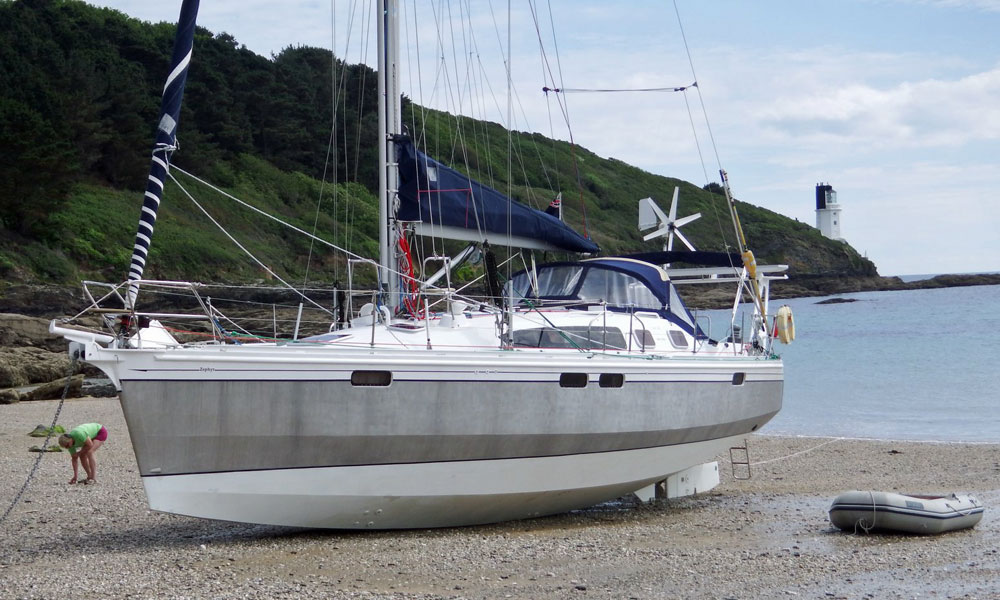
Twin, or bilge keels
These are a peculiarly British thing. Nowhere else do they seem to enjoy the same level of popularity.
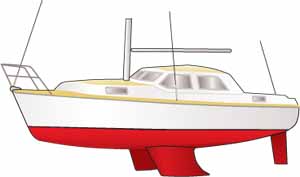
Along with long-legged birds and wellie-clad bait diggers, bilge keelers are very much at home on tidal mud flats, where drying moorings are much less expensive than the deep water kind.
Apart from their shallow draft, the benefit of a bilge keeler is that these cheap moorings can be enjoyed without falling over - twice a day in fact.
And that's it, as far as I can see. Underway, their high wetted area and lack of low-down ballast can only detract from their sailing performance - and if you inadvertently run aground in one of these, you may be there for a while, since you can't heel the boat to reduce its draft.
But they're very popular here in the UK, so I mustn't be too rude about them.
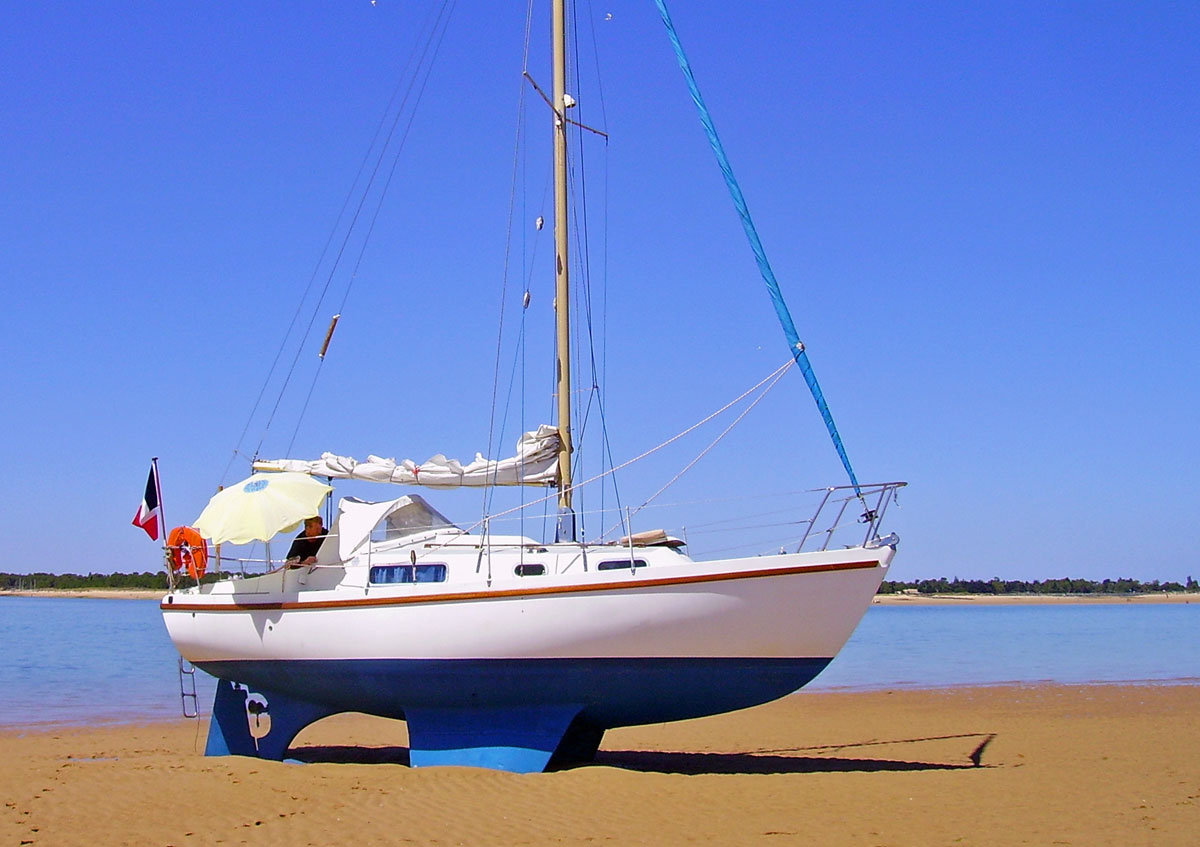
Sailboat Keels with Bulbs or Wings
One way to reduce draft whilst minimising the affect on stability is to provide additional ballast in the form of a lead bulb on the bottom of the keel.
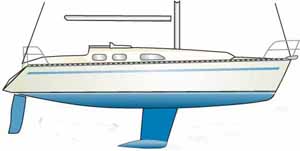
Variations on these types of sailboat keels include torpedoes, the Scheel keel and the wing keel.
Properly designed 'torpedoes' meet this requirement, and providing they don't project forward of the keel's leading edge - where they'll collect pick-up lines, discarded fishing nets and other assorted flotsam and jetsam - are a good solution for offshore yachts.
The Scheel keel , invented by the American designer Henry A Scheel, is said to create additional lift through the converse sections on top of the bulb, and appears on several highly-regarded offshore designs.
Wing keels develop this principle further, but share the same propensity for collecting unwanted hangers-on as the forward projecting torpedo.
Wings increase wetted area, and hence drag, but as well as producing more hydrodynamic lift they do provide a degree of 'damping' in a rolly anchorage.
You'll need to support the boat in slings to anti-foul the underside of the wing, or alternatively employ a diver to scrub it clean at regular intervals.
Tandem Keels
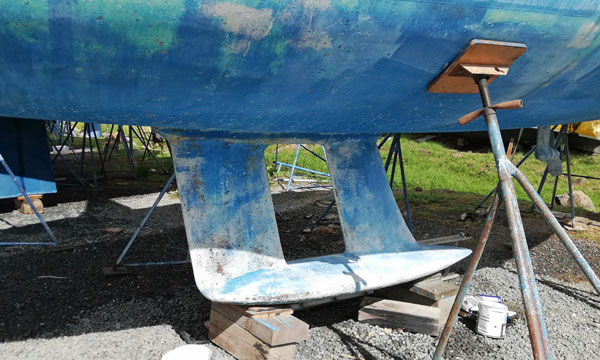
This is a tandem keel, designed by Warwick Collins back in the 1980's. Essentially a tandem keel comprises two foils and a delta endplate to create a shoal draft keel which is genuinely as effective upwind as a deep keel.
These keels had some success on the racing circuit and were also found on cruising yachts, including Bavarias and Etaps.
At first glance it would seem that the water flow around the forward foil would disrupt the flow around the after one, but this is not the case. Owing to the boat's leeway, both keels operate in laminar flow.
Benefits of the tandem keel include:
- With 55%-60% of its weight in the endplate, stability is very good.
- The end plate dampens the boat's motion at sea, increasing crew comfort.
- The additional stability allows the rig to work more efficiently creating more drive and better boat speed.
- The tandem keels' lower aspect ratio (shallow and long) improves directional stability.
So what's not to like? Very little it would seem, although going aground with this (or any wing keel design) is likely to be embarrassing. And of course, they're expensive in comparison to less radical designs.
You might like to take a look at these...
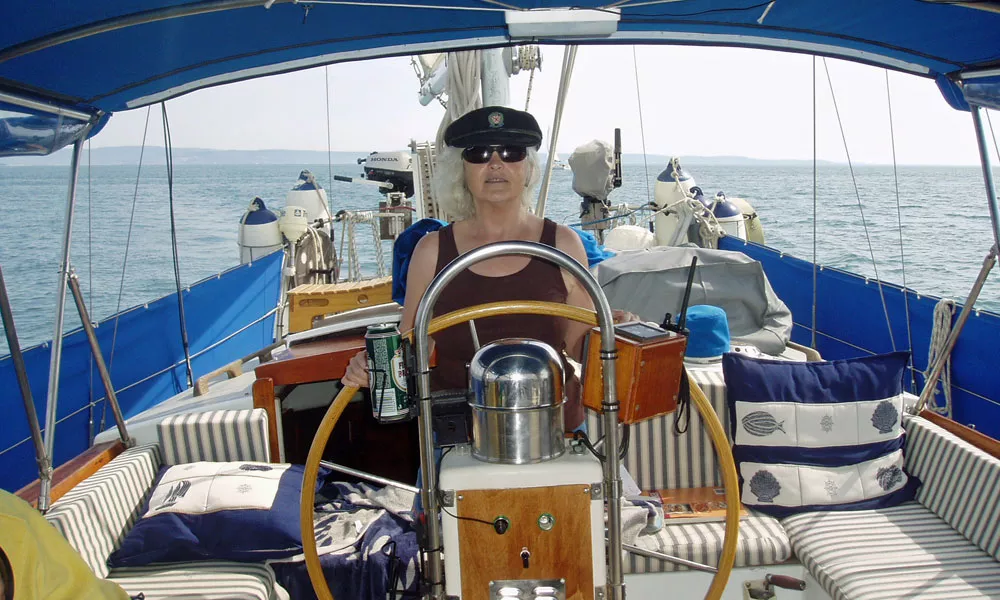
The Case for Sailboat Tillers as an Alternative To Wheel Steering
Just why do so many modern sailboats have wheel steering when sailboat tillers are cheaper, more reliable and convenient? Check out this comparison between wheels and tillers
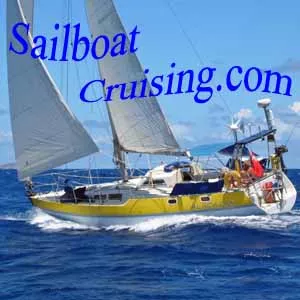
Understanding Hullspeed and the Speed/Length Ratio
For any displacement hull of a given length there's a maximum hullspeed; the longer the waterline length, the quicker the boat. Here's how it works
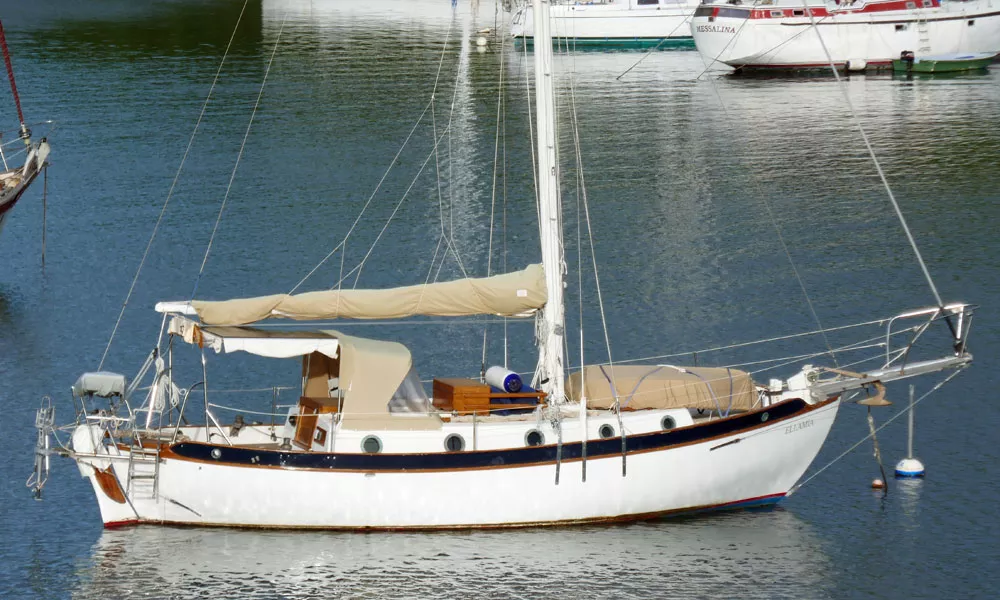
Are Heavy Displacement Hulls the Best Choice for Offshore Cruising?
Increasingly, offshore sailboat skippers are choosing moderate displacement hull forms in preference to heavier vessels when planning for an ocean crossing. And here's why...
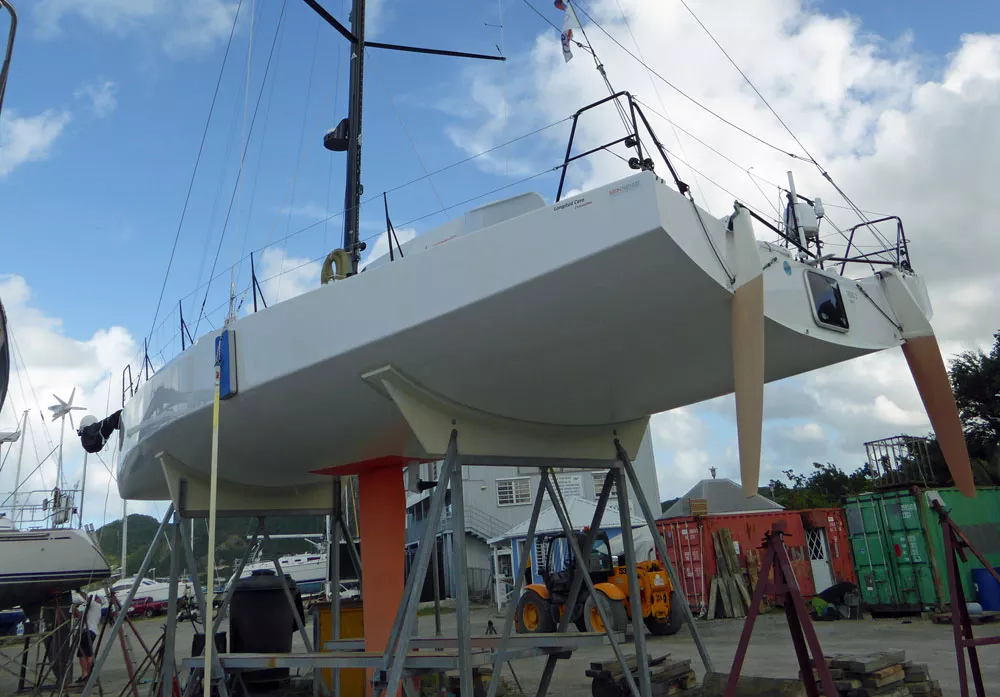
Sailboat Rudders
Illustrated examples of Balanced Sailboat Rudders, Semi-Balanced Rudders, Keel-Hung Rudders, Skeg-Hung Rudders, Spade Rudders, Twin Rudders, and Transom-Hung Rudders
A Sailboat Cockpit Must be Workable, Comfortable and Safe
The sailboat cockpit has to operate as an efficient work station when underway, and a comfortable leisure area when at anchor, but on some sailboats the compromise is not always successful
Recent Articles
GENERIC KPI Template
Aug 25, 24 07:21 AM
Gulfstar Hirsch 45 Sailboat Specs & Key Performance Indicators
Aug 25, 24 07:19 AM
Nicholson 35 Sailboat Specs & Key Performance Indicators
Aug 24, 24 02:27 PM
Here's where to:
- Find Used Sailboats for Sale...
- Find Used Sailing Gear for Sale...
- List your Sailboat for Sale...
- List your Used Sailing Gear...
Our eBooks...

A few of our Most Popular Pages...

Copyright © 2024 Dick McClary Sailboat-Cruising.com

- Search forums
- Sailing Anarchy
Retractable Keels
- Thread starter amFast
- Start date Jul 22, 2008
More options
- Jul 22, 2008
It seems like a lot (or at least some) of the newer boats in the 30' range have retractable keels. While there are some advantages to the retractable keel (e.g. easier trailering) it seems that there must be some disadvantages. Is the keel more likely to break off than it is on a fixed keel boat? If the boat gets blown over past 90 degrees is the keel going to start sliding back up (in other words what happens if you get in a situation where gravity isn't holding the keel in the downward position)? What are some of the disadvantages; and if you were going to buy a boat that is going to be in the water 100% of the season and will probably never see a trailer (unless it's a substitute for a cradle) would you even look at a retractable keel?
Super Anarchist
I believe that on the sport boats, the keel is bolted in place when sailing. I wouldn't own a boat on which it was not so. The ability to lift the keel makes trailering possible, but I dare say, does not make it convenient. I deny the possibility of of a 25' sailboat that is convenient to trailer.
I haven't done it personally but I have watched the Melges 24 guys load their boat and it is only slightly harder to load and unload than the Farrier 28 tri I crew on.
Our keel is bolted in place when sailing. While it certainly makes it easy to load on the trailer and launch, the rest of preparing the boat for travel (dropping the rig, etc.) is not made any easier. If I was going to float the boat year round, I'd probably get a fixed keel. We keep the Rocket on a Hydrohoist completely out of the water so we don't have to hassle with launching.
C&C 115
Minor hijack - My biggest problem when looking for a new boat is depth (6-4 at MLW approach, 7-6 slip). Does anyone know of any boats that have a hydrolic lift in the 35-42 foot range? The only boats I know of are the SC 37 and Andrews 38 Pamlico in Annapolis.
in holland there is a swan 48 which has a shallow draft (fixed) keel of 1,2 meter. this was especially done for the Frysian lakes in the north of holland. personally, i'd go for a fixed keel, especially if kept in the water. the main question is, why would you want a retractable keel? 30ft boats can still be trailered, for that it is convenient if you don't have to bolt on/bolt off the keel, but still the rig needs to come off. if it is for shallow waters like in the north of holland and germany in what they call "de wadden", which are plates of sand, then the possibility exists to deliberately run it aground. if that's not part of your plans, i would go for a fixed keel.
The biggest reason for having a retractable keel on a boat this size is lack of deep water slips in some areas. Most of these boats are not designed to raise and lower while sailing. You get out in deep water, lower the keel, then lock into position (most often bolted down). Retractable keel has a lower profile on a trailer, but in most cases this doesn't help a 30' ramp luanch any easier (rudder not easily removed from water or keel only partially retracts). In some cases when a hoist is not tall enough, having the keel retract may still allow it's use. Like C&C I am interested in 35', good performing boat, with ability to get into shallow slip.
C&C 115 said: Minor hijack - My biggest problem when looking for a new boat is depth (6-4 at MLW approach, 7-6 slip). Does anyone know of any boats that have a hydrolic lift in the 35-42 foot range? The only boats I know of are the SC 37 and Andrews 38 Pamlico in Annapolis. Click to expand...
Heaven can wait

- Jul 23, 2008
Is the keel more likely to break off than it is on a fixed keel boat? Click to expand...
Latest posts
- Latest: Mark_K
- A moment ago
- Latest: ShortForBob
- Latest: fastyacht
- 1 minute ago
Sailing Anarchy Podcast with Scot Tempesta

- Forums New posts Unanswered threads Register Top Posts Email
- What's new New posts New Posts (legacy) Latest activity New media
- Media New media New comments
- Boat Info Downloads Weekly Quiz Topic FAQ 10000boatnames.com
- Classifieds Sell Your Boat Used Gear for Sale
- Parts General Marine Parts Hunter Beneteau Catalina MacGregor Oday
- Help Terms of Use Monday Mail Subscribe Monday Mail Unsubscribe
Fixed vs. retractable keel
- Thread starter John Perri
- Start date Aug 27, 2002
- Forums for All Owners
- Ask All Sailors
My wife and i recently completed basic sailing lessons and we're hooked. We're going to be looking at 26 or 27, probably Catalina for local sailing on north shore of Long Island. My question has to do with any particular disadvantages of retractable keel. The advantage is clear, but what am i giving up over fixed keel?
keel vs board Its simple. If you are going to be sailing in mild conditions and like exploring creeks and shallows, definately go with a centerboard. If you are expecting to sail longer distances in iffy weather - a fixed keel would be better. I have a 85 Oday 26 and a 1968 pearson 22. The oday draws 2'6" and the pearson 3'8". The Oday is so nice to go exploring with, I can go into creeks on the bay barely wider than thwe boat - but when it kicks up - yikes - the boat is easily overpowered. My pearson, I love to take out when its blowing like crazy, but since its on the Potomac, I run aground and have had to call a tow on more than a few occasions. The 26 is a nice boat though, very spacious down below...
Fixed Is Better Probably the biggest advantage of a fixed keel is the fact that regardless of boat size, a fixed keel is going to be heavier than any retractable keel on the same size boat. The equates to a stiffer boat which means you can handle higher winds much better. If you really want to do exploring in inlets, creeks, etc., invest in a dingy. Considering you'll be doing your sailing in a large body of water such as Long Island Sound, I would suspect that winds there can get pretty blustery at times, hence, more need for a stable boat. The main disadvantage of a swing keel, is the maintenance required. I currently have a C-22 with swing keel and would never go that route again. Good Luck
be careful of the different names A retractable keel is different than a swing keel, which is different from a centerboard..... True retractable keels are rare, especially on small boats. A retractable keel is a full fin keel, where the whole thing (usually made of iron) retracts straight up into a well in the hull and/or cabin. Because it involves lifting so much weight and needs a place to retract to, this type of arrangement is usually reserved for large exotic designs where there is sufficient space for all of the necessary machinery and storage. Swing keels are more typical on small boats. Catalina made the design popular on their 22's and 25's. With this design, most or all of the ballast is contained in a fin that pivots up and down. Advantages: makes the boat trailerable; gives flexibility of shallow draft. Disadvantages: in an accident, all of your ballast can be lost or swinging around under your boat; mechanical problems w/cables, cranks. Centerboard boats usually combine some type of shallow stub keel with a relatively light centerboard that swings like a swing keel. Examples: Oday 22, 23, 25; Rhodes 22. Advantages: good draft, internal ballast, usually sail more like fin keel boats than swing keel boats do; disadvantages: centerboard can stick, break, etc. All other things being equal, a boat with a swing keel or centerboard will not point as high and will be more tender than a true fin keel boat.
- This site uses cookies to help personalise content, tailor your experience and to keep you logged in if you register. By continuing to use this site, you are consenting to our use of cookies. Accept Learn more…
- Work & Careers
- Life & Arts
What caused the fatal sinking of the superyacht Bayesian?

- What caused the fatal sinking of the superyacht Bayesian? on x (opens in a new window)
- What caused the fatal sinking of the superyacht Bayesian? on facebook (opens in a new window)
- What caused the fatal sinking of the superyacht Bayesian? on linkedin (opens in a new window)
- What caused the fatal sinking of the superyacht Bayesian? on whatsapp (opens in a new window)
Victor Mallet and Visual and Data Journalism team in London
Roula Khalaf, Editor of the FT, selects her favourite stories in this weekly newsletter.
One of the world’s largest sailing superyachts sank in high winds off Sicily on Monday, causing the death of UK tech entrepreneur Mike Lynch and six other passengers and crew whose bodies were recovered from the wreck or from the sea.
The trip on the Lynch family’s yacht had been intended to celebrate his recent acquittal by a US jury, with 12 passengers on board, including his wife and 18-year-old daughter, and 10 crew members.
The Italian coastguard said the 56-metre, 540-tonne, British-flagged yacht Bayesian sank within minutes after it was hit by ferocious winds of 60 knots (over 110km/h) near Palermo.
The rapid sinking of such a large, modern and well-equipped yacht due to bad weather, rather than as a result of a collision, has raised concerns over marine safety as extreme weather events occur with more frequency and intensity.
You are seeing a snapshot of an interactive graphic. This is most likely due to being offline or JavaScript being disabled in your browser.

Why did the superyacht sink?
The yacht may well have been caught in a waterspout — a form of tornado — because the extreme wind speeds were recorded only in a localised area around the harbour of Porticello, where the boat was anchored about 300 metres offshore when it was struck.
Karsten Börner, the skipper of a nearby boat, told the FT that Bayesian appeared to capsize. He said he regarded the boat as unstable and his comments suggest that it could have been the combination of high winds and Bayesian’s 72-metre mast — the world’s tallest aluminium mast, according to manufacturers Perini Navi — that triggered the disaster.

Even with no sails up, a boat with a tall mast has a lot of “windage”, or surface area exposed to the wind, which can tip the vessel over in a storm. The boat may have heeled over so far that it took on water through open windows, hatches or companionways.
According to Perini Navi, Bayesian had a keel that can be lifted to reduce the draught of the boat — otherwise nearly 10 metres — for easier entrance to shallow harbours. If the keel were for some reason in the raised position rather than fully extended, that could compromise the boat’s stability in a strong wind.

Skippers of sailing yachts with exceptionally high masts typically aim to move out of harm’s way if strong winds are forecast.
Yacht designers and sailors are nevertheless puzzled by the sinking of the boat. AIS (Automatic Identification System) tracking data shows it took 16 minutes from the time Bayesian appeared to started dragging its anchor until it sank. But it is not yet known whether vulnerable hatches were open or when water started entering the boat. Italian prosecutors are investigating possible charges of manslaughter and “negligent shipwreck”.
Giovanni Costantino, chief executive of Italian Sea Group, which owns Perini Navi, told the Financial Times that Bayesian was “absolutely safe” and said the crew should have had time to secure the boat and evacuate passengers from their cabins.
Should we blame climate change?
Climate change is likely to have been at least a contributing factor in the Mediterranean’s unsettled and sometimes violent weather this summer. The Mediterranean is a favoured cruising ground for superyachts during the northern hemisphere summer — in winter, the wealthy prefer the Caribbean or the Indian Ocean — because the weather is typically warm and sunny, and storms are rare.
Meteorological experts have long predicted that climate change and the heating-up of oceans will help trigger more extreme weather events, including floods, droughts and more severe hurricanes.
Last week, the Mediterranean reached a median temperature of 28.9C — its highest surface temperature on record — and similar records are being broken in other seas. June was the 15th consecutive month that global sea temperatures hit a record high and forecasters predict the warmer waters may fuel an intense Atlantic hurricane season.

Will disasters at sea occur more often?
While design improvements and safety regulations have made even the smallest boats safer, the potential dangers posed by bad weather are increasing in line with the rising number of pleasure vessels at sea.
Last week, a sudden and exceptionally strong thunderstorm with wind squalls blowing at up to 53 knots (about 100km/h) swept over the Balearic Islands of Ibiza and Formentera, driving several sailing and motor yachts to crash on to the shore. Among those damaged and grounded but later recovered was a luxury, 30-metre vessel made by the Monaco-based Wally Yachts .
The cause was a thunderstorm known as a “Dana”, a Spanish acronym for depresión aislada en niveles altos or isolated high-altitude depression. The bad weather also caused serious flooding in Mallorca and Menorca to the north.
How can boat makers and skippers help avoid more deaths?
The weather in the Mediterranean is often notoriously unpredictable and prone to sudden, unforecast gales — unlike the north Atlantic, where weather shifts are usually signalled days in advance by changing air pressure and cloud formations visible to the naked eye.
Safety at sea depends largely on two factors: the seaworthiness of the boat and the skill and experience of the captain and crew.
Modern boats — Bayesian was built in 2008 and refurbished four years ago — are normally built to high safety standards and equipped with electronic navigation and communications systems, as well as standard emergency gear such as life vests.
Common accidents include people falling overboard, fires on board and accidental groundings or collisions — not sinking in bad weather.
Visual and data team: Alan Smith, Aditi Bhandhari, Ian Bott and Jana Tauschinski
Promoted Content
Follow the topics in this article.
- Maritime accidents and safety Add to myFT
- Travel & leisure industry Add to myFT
- Visual and data journalism Add to myFT
- Yachts & Marinas Add to myFT
- FT Edit Add to myFT
Comments have not been enabled for this article.
- WEATHER ALERT Excessive Heat Warning Full Story
- WEATHER ALERT Heat Advisory Full Story
- boat accident
Divers find 5 bodies during search of superyacht wreckage after it sank off Sicily, 1 still missing

ROME -- Divers searching the wreck of a superyacht that sank off Sicily found the bodies of five passengers Wednesday and searched for one more as questions intensified about why the vessel sank so quickly when a nearby sailboat remained largely unscathed.
Rescue crews unloaded three body bags from rescue vessels that pulled into port at Porticello. Salvatore Cocina, head of the Sicily civil protection agency, said two other bodies had also been found in the wreckage for a total of five.
The discovery made clear the operation to search the hull on the seabed 50 meters (164 feet) underwater had quickly turned into a recovery one, not a rescue, given the amount of time that had passed and that no signs of life had emerged over three days of searching, maritime experts said.
The Bayesian, a 56-meter (184-foot) British-flagged yacht, went down in a storm early Monday as it was moored about a kilometer (a half-mile) offshore. Civil protection officials said they believed the ship was struck by a tornado over the water, known as a waterspout, and sank quickly.
Fifteen people escaped in a lifeboat and were rescued by a nearby sailboat. One body was recovered Monday - that of the ship's chef, Recaldo Thomas, of Antigua.
Thomas was born in Canada, according to his cousin David Isaac, but would visit his parents' homeland of Antigua as a child, moving permanently to the tiny eastern Caribbean island in his early 20s. Italian officials previously listed Antigua as the nationality of someone on board.
The fate of six missing passengers had driven the search effort, including British tech magnate Mike Lynch, his 18-year-old daughter and associates who had successfully defended him in a recent U.S. federal fraud trial.
Lynch's spokesperson did not respond to a request for comment Wednesday.
RELATED: 2 Americans among 6 passengers still missing after superyacht sinks off coast of Sicily
Meanwhile, investigators from the Termini Imerese Public Prosecutor's Office were acquiring evidence for their criminal investigation, which they opened immediately after the tragedy even though no formal suspects have been publicly identified.
Questions abound about what caused the superyacht, built in 2008 by Italian shipyard Perini Navi, to sink so quickly, when the nearby Sir Robert Baden Powell sailboat was largely spared and managed to rescue the survivors.
Was it merely the case of a freak waterspout that knocked the ship to its side and allowed water to pour in through open hatches? What was the position of the keel, which on a large sailboat such as the Bayesian might have been retractable, to allow it to enter shallower ports?
"There's a lot of uncertainty as to whether it had a lifting keel and whether it might have been up," said Jean-Baptiste Souppez, a fellow of the Royal Institute of Naval Architects and the editor of the Journal of Sailing Technology. "But if it had, then that would reduce the amount of stability that the vessel had, and therefore made it easier for it to roll over on its side," he said in an interview.
The captain of the Sir Robert Baden Powell sailboat, which came to the Bayesian's rescue, said his craft had sustained minimal damage - the frame of a sun awning broke - even with winds that he estimated reached 12 on the Beaufort wind scale, which is the highest, hurricane-strength force on the scale.
He said he had remained anchored with his engines running to try to maintain the ship's position as the storm, which was forecast, rolled in.
"Another possibility is to heave anchor before the storm and to run downwind at open sea," Karsten Bornersaid in a text message. But he said that might not have been a viable option for the Bayesian, given its trademark 75-meter (246-foot) tall mast.
"If there was a stability problem, caused by the extremely tall mast, it would not have been better at open sea," he said.
Yachts like the Bayesian are required to have watertight, sub-compartments that are specifically designed to prevent a rapid, catastrophic sinking even when some parts fill with water.
"So for the vessel to sink, especially this fast, you are really looking at taking water on board very quickly, but also in a number of locations along the length of the vessel, which again indicates that it might have been rolled over on its side," Souppez said.
Italian coast guard and fire rescue divers continued the underwater search in dangerous and time-consuming conditions. Because of the wreck's depth, which requires special precautions, divers working in tag teams could only spend about 12 minutes at a time searching.
The limited dive time is designed in part to avoid decompression sickness, also known as the "bends," which can occur when divers stay underwater for long periods and ascend too quickly, allowing nitrogen gas dissolved in the blood to form bubbles.
"The longer you stay, the slower your ascent has to be," said Simon Rogerson, the editor of SCUBA magazine. He said the tight turnaround time suggests the operation's managers are trying to limit the risks and recovery time after each dive.
"It sounds like they're operating essentially on no decompression or very tight decompression, or they're being extremely conservative," he said.
Additionally, the divers were working in extremely tight spaces, with debris floating around them, limited visibility and oxygen tanks on their backs.
"We are trying to advance in tight spaces, but any single thing slows us down," said Luca Cari, spokesman for the fire rescue service. "An electric panel could set us back for five hours. These aren't normal conditions. We're at the limit of possibility."
"It's not a question of entering the cabin to inspect it," he added. "They've arrived at the level of the cabins, but it's not like you can open the door," he said.
The Italian coast guard said they had reinforced their dive teams and were using underwater remote-controlled robots, which can stay out for six or seven hours at a time and record the surroundings.
The lack of any signs of life and the recovery of bodies led outside experts to conclude that the search was now a recovery effort and investigation to determine how the tragedy had unfolded.
"I think the fact that there's been quite a lot of diving presence around the vessel and that they haven't been able to pick up any signs of life inside the vessel, is, is unfortunately, not a particularly good sign," said Souppez.
Winfield reported from Rome and Kirka from London. Associated Press visual journalists Trisha Thomas in Rome and Silvia Stellacci in Porticello and reporter Anika Kentish in St. John's, Antigua contributed.
Related Topics
- BOAT ACCIDENT
- SEVERE WEATHER
Boat Accident

Bayesian yacht captain faces manslaughter probe after deadly sinking

Authorities open manslaughter probe into superyacht sinking

What we know about why a luxury sailing boat sank off Sicily coast
Top stories.

Uber driver allegedly damaged family's home, car after 1-star rating

CPD officer accused of attacking girlfriend during drunken rampage
- 39 minutes ago

Mariah Carey shares her mother and sister died on the same day
- 2 hours ago

Anarchist and ex-con charged with defacing CPD car during DNC protest
- 17 minutes ago

Murder-suicide of 5 stemmed from dispute over mother's will
- 12 minutes ago
Demo to start Tuesday for permanent Bally's casino, hotel site
- 16 minutes ago
Red Lobster is closing more Illinois restaurants
Chicago company hit with penalties over $1M for workers' lung disease
- 10 minutes ago
Sailboat Keel Types Compared: Pros and Cons of 13 Types
There are various keel designs, each with specific advantages and disadvantages. For instance, full keels provide better stability and tracking, making them a popular choice for long-distance cruisers. On the other hand, fin keels enable sharper turns and quicker reactions, which appeal to racers and those seeking a more nimble experience. Choosing the right keel type for your sailboat depends on your sailing preferences, cruising goals, and intended destinations.
A sailboat's keel plays a significant role in its overall stability, performance, and comfort. It helps you maintain balance, steer your boat, and improve your boat's sailing efficiency. Sailboat keel types impact not only the performance and handling of your sailboat but also its suitability for different sailing conditions.
Let's compare 13 different keel types, and discuss their strengths and weaknesses, as well as their practical applications.
- The keel types that are known for their comfort and seaworthiness are full keel, bilge keel, wing keel, Scheel keel, and fixed keel.
- The best keel types for speed are canting keel, bulb keel, and wing keel.
- For improved maneuverability and agility , the best keel types are swing keel, centerboard keel, and daggerboard keel.
- The keel types that provide the most stability are bulb keel, fixed keel, and fin keel.
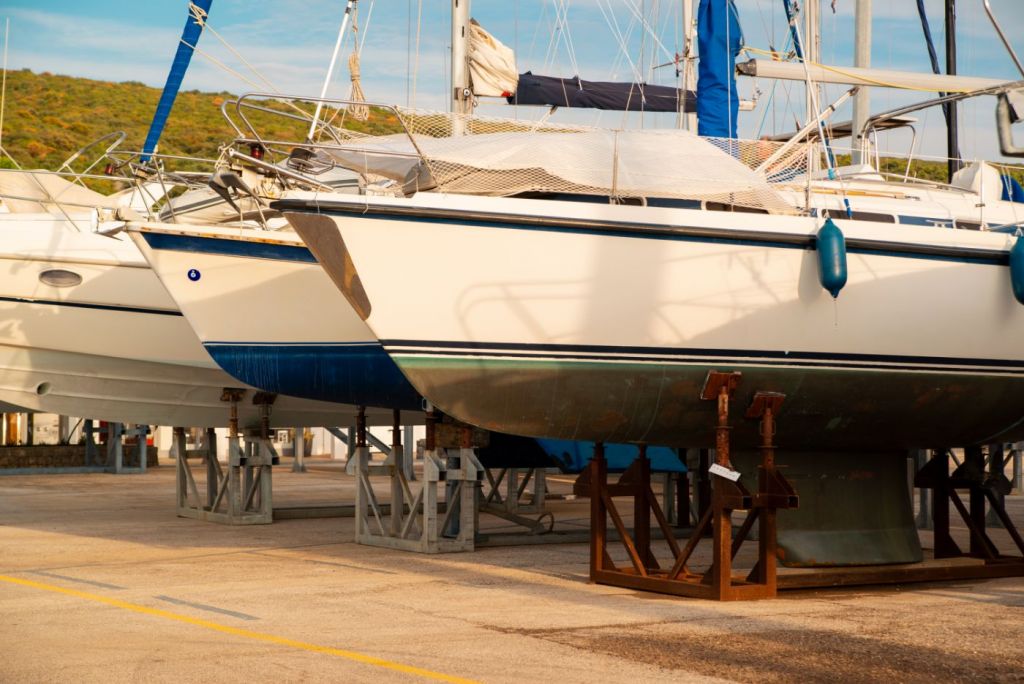
On this page:
Pros and cons of 13 types of keel, canting keel, centreboard, daggerboard, lifting keel, scheel keel.
| Pros | Cons | |
|---|---|---|
| Increased stability, durability, and better tracking | Reduced maneuverability and slower speeds | |
| Improved performance, maneuverability, and ease of maintenance | Less stability, structural vulnerability, less comfortable | |
| Excellent stability, speed and agility, upwind sailing | Increased maintenance, deeper draft | |
| Increased stability, enhanced performance and versatility | Complexity and cost, increased vulnerability to grounding | |
| Flexibility in navigating shallow waters, and adjustable performance | Less stability, regular maintenance, and reduced interior space | |
| Versatility and ease of transport | Reduced performance, additional maintenance, and extra weight | |
| Shallow draft, good upwind performance, and ease of grounding and recovery | Reduced pointing ability, increased leeway, increased maintenance | |
| Shallow draft, low maintenance, self-righting, beaching ability | Reduced performance, larger heeling angle, less stability | |
| Improved maneuverability, ease of maintenance, lighter in weight | Limited righting moment, reduced space, water noise | |
| Better stability, improved upwind performance, low-maintenance | Depth, less maneuverable at slower speeds, heavier and harder to trailer | |
| Versatility, improved performance, easier transportation | Maintenance and complexity, added weight | |
| Improved stability and upwind performance | Larger draft and vulnerability to grounding | |
| Stability, shallow draft, and efficient upwind sailing | Decreased speed and increased maintenance |
If you're curious what these keel types look like, here's our illustrated guide on sailboat keels .
Full-length keel : Full-length keels run the entire length of the boat. They offer excellent stability and are popular among offshore cruisers who require a solid, rugged sailboat. Full keeled boats are better suited for heavy weather, but they may be slower due to their weight and drag.
Fin keel : Fin keels are thinner and generally used for racing, as they provide a good balance between speed and stability. Their reduced drag means faster speeds but might be less stable compared to full-length keels in heavy seas.
Bulb keel : A bulb keel features a heavy, rounded weight at the bottom of the fin keel. This extra weight lowers the boat's center of gravity and provides additional stability without significantly increasing drag.
Canting keel : A canting keel is a high-performance feature that can pivot from side to side, allowing the boat to maintain optimal stability while heeling over on its side to maximize speed in racing scenarios.
Centerboard : This keel type features a retractable board that can be lowered for sailing upwind and raised in shallow waters. Centerboards are often found on smaller boats and dinghies.
Swing keel : Swing keels operate on a hinge, swinging up and down to adjust the boat's draft. They balance the benefits of a larger keel with the convenience of a shallow draft for docking and beaching.
Wing keel : Wing keels are similar to bulb keels but with two small wings on either side of the bulb. These wings increase the effective surface area, offering better stability and shallower draft capabilities, ideal for coastal cruising.
Bilge keel : Bilge keels are found on boats with two smaller keels on either side of the hull rather than a single central keel. This design is most commonly used in tidal waters and on small fishing boats, allowing the boat to sit upright when grounded during low tide.
Daggerboard : Similar to a centerboard, a daggerboard is a non-weighted, removable board that slides vertically through a slot in the hull. This type is also commonly seen on dinghies and smaller sailboats.
Fixed keel : Fixed keel provides good stability and is less prone to damage than other keel types. However, it can limit the boat's ability to sail in shallow waters and may make it more difficult to trailer the boat.
Lifting keel : A lifting keel can be raised or lowered, providing both the benefits of a deep keel for improved stability and performance and a shallow draft for easier access to shallow waters and docking.
T-keel : T-keels provide improved stability and upwind performance, which can be desirable for sailors. However, their larger draft and vulnerability to grounding should be considered when deciding if this keel type is the right choice for your sailing adventures.
Scheel keel : This offers unique benefits, and it could be an excellent choice for your sailboat if you prioritize stability, shallow draft, and efficient upwind sailing. However, you should consider the potential drawbacks, such as decreased speed and increased maintenance, before making a final decision.
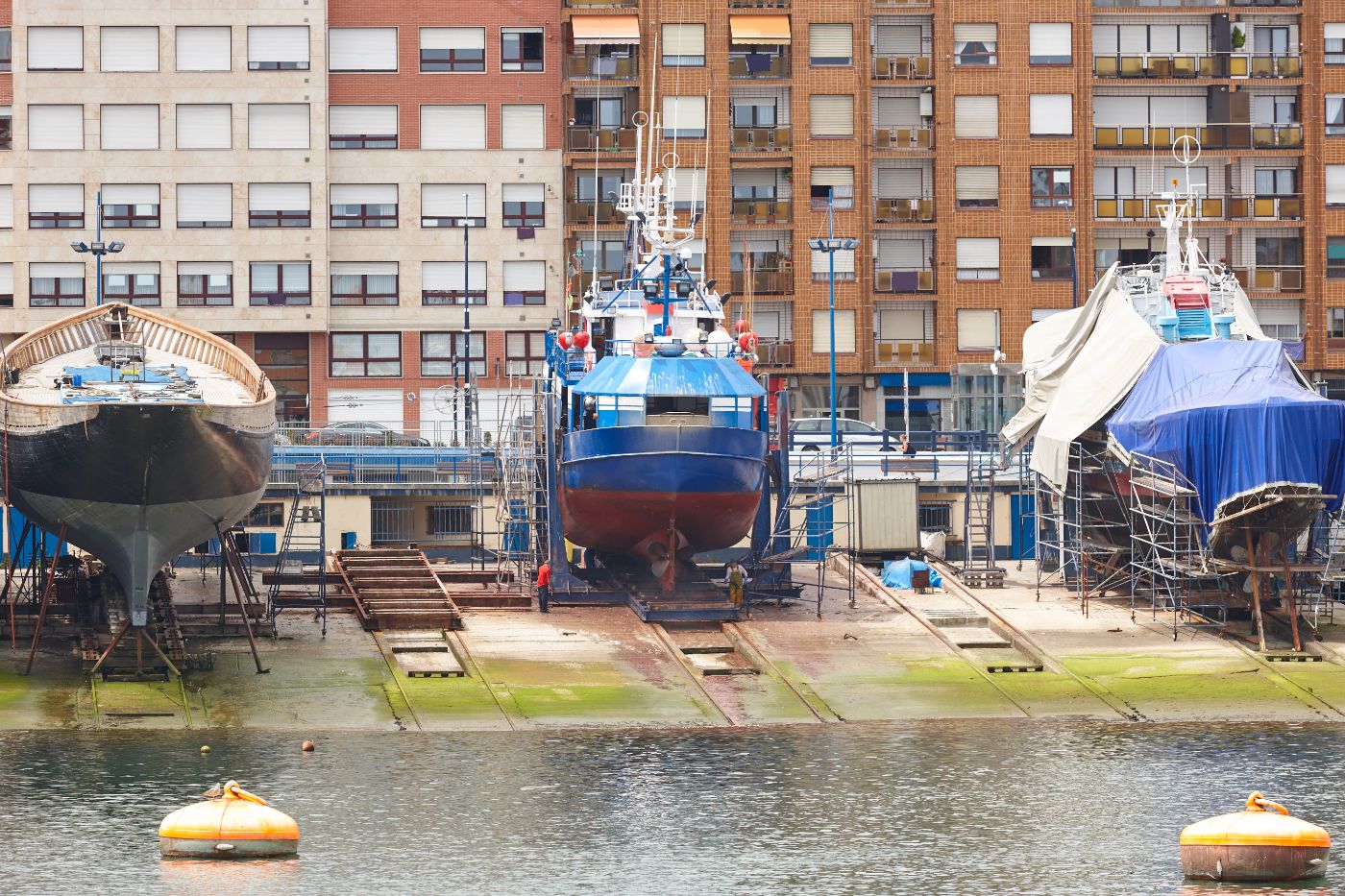
Pros of full keel
A full keel has several advantages that make it an appealing option for many sailors. First and foremost, it offers exceptional stability , which is particularly important when you're out at sea for extended periods. With a full keel, your sailboat can better resist the forces acting on the sails, ensuring a smoother and safer journey.
Another significant benefit is the durability of a full keel. Because of the large surface area and the way it's constructed, full keels tend to be very strong and resilient, making them perfect for long-distance cruising. Additionally, this type of keel provides excellent tracking , helping your sailboat stay on course in various conditions.
Lastly, full keel sailboats are less likely to be damaged when grounding , as the keel's large surface area allows for better weight distribution. This characteristic can be especially useful when navigating shallow waters or exploring uncharted territories.
Cons of full keel
Despite the many advantages of a full keel, it also has some drawbacks. One of the most noticeable disadvantages is its effect on sailboat performance. Full keels tend to be less maneuverable than other keel types, which can be a drawback in tight situations or when you need to make quick adjustments during sailing.
Another downside is the increased wetted surface area, which leads to higher drag and slower speeds when compared to other keel types, such as fin keels. This reduced efficiency can be a concern, especially for those who prioritize performance and speed on their sailing journeys.
Additionally, full keel sailboats may be more challenging to maneuver in tight spaces , such as crowded marinas, due to their reduced maneuverability and larger turning radius. This can make docking and mooring more complex, particularly for inexperienced sailors.
Pros of fin keel
Fin keels hold several advantages for sailors. First, they offer improved performance. A fin keel's streamlined shape cuts through the water more efficiently, allowing sailboats to reach higher speeds with less drag. Moreover, fin keels generally provide better upwind performance than other keel types.
Their maneuverability is another significant benefit. Fin keels allow sailboats to turn more quickly and easily, making them nimble in tight spaces and responsive to the helm. Additionally, they typically have a reduced draft, meaning they can navigate shallow waters more effectively than boats with deeper keels.
Lastly, fin keels are popular for their ease of maintenance . Since they're typically bolted onto the hull, routine inspections and potential repairs are relatively straightforward and accessible.
Cons of fin keel
Despite the benefits, there are a few drawbacks to consider when it comes to fin keels. First, they tend to have less stability than full or bilge keels. Their slender design and reduced weight can make them more prone to sudden heeling, which some sailors may find uncomfortable or disconcerting.
Another potential issue is structural vulnerability . If a fin keel strikes a submerged obstacle, such as a rock or shipping container, it may suffer damage or even become dislodged, which could pose a significant risk to the integrity of the boat. This stands in contrast to more robust full keels, which can better absorb the impact of groundings or collisions.
Lastly, fin keels are sometimes considered less comfortable for cruising sailors. Due to their design, boats with fin keels can experience more motion (both side-to-side and up and down) in rough seas, potentially leading to discomfort or seasickness for the crew.

A bulb keel is a type of sailboat keel that features a streamlined fin with a bulb-shaped weight at the bottom. This design aims to improve the boat's performance, especially in racing conditions. In this section, we will explore the pros and cons of bulb keels.
Pros of bulb keel
Stability : The main advantage of a bulb keel is its ability to provide excellent stability. The bulb's weight is concentrated at its lowest point, which lowers the center of gravity of your sailboat. This design helps keep the boat upright and stable when sailing, especially in strong winds.
Performance : Bulb keels contribute to a sailboat's overall performance by reducing drag. The streamlined shape of the fin and the placement of the bulbous weight make it easier for your boat to glide through the water, increasing your overall speed and agility when sailing.
Upwind sailing : A bulb keel allows your sailboat to sail more effectively upwind. By reducing leeway and maintaining a consistent course, your boat can navigate better through a variety of wind conditions.
Cons of bulb keel
Maintenance : One potential downside of a bulb keel is the increased maintenance required. The bulbs can be more prone to collecting marine growth, which may necessitate regular cleaning and antifouling treatments to maintain peak performance.
Depth : Bulb keels, due to their design, have a deeper draft than other keel types. This means that your sailboat might struggle in shallow waters or require extra diligence while sailing in areas with submerged obstacles or coral reefs.
Pros of canting keel
Canting keels are a popular choice among performance-oriented sailors due to their remarkable benefits in several areas. They offer increased stability and enhanced performance , especially when sailing upwind. This type of keel allows the boat to maintain a more upright position when healing, reducing drag and improving your overall speed and efficiency on the water.
Moreover, canting keels are adjustable , which allows you to alter the keel angle depending on the wind conditions and desired performance. This flexibility can make a significant difference in how your boat performs on the water. Another advantage of canting keels is their improved handling characteristics , which make them easier to maneuver in various conditions.
Cons of canting keel
Despite the many advantages, there are also some notable drawbacks to using a canting keel. One significant downside is their complexity and cost . These keels often require sophisticated engineering and systems, which can drive up the overall price of your boat and may require more maintenance and repairs over time.
Another potential issue with canting keels is their increased vulnerability to grounding . Since the keel can extend deeper beneath the boat, there is a higher risk of hitting obstacles or running aground, especially in shallow waters or unknown territories.
Lastly, canting keels can contribute to changes in the boat's handling characteristics , particularly when sailing downwind. While their adjustability may enhance upwind performance, it may also lead to instability and increased difficulty controlling your boat in heavy downwind conditions.
Pros of the centerboard
A centerboard is a movable keel that can be retracted or lowered to provide stability and balance to your sailboat. Here are some benefits you can enjoy with a centerboard:
- Shallow draft : With a centerboard, you can easily navigate shallow waters and get closer to shore. This is particularly useful for exploring coves, anchorages, and beaching your boat.
- Adjustable performance : By adjusting the position of the centerboard, you can fine-tune your sailboat's performance based on the current sailing conditions.
- Easier transport and storage : Retractable centerboards make it simple to trailer your sailboat and store it in tight spaces without worrying about a fixed keel's height or depth.
- Grounding protection : In case of accidental grounding, a centerboard can help minimize potential damage by absorbing the impact instead of transferring it to your boat's hull.
If you're torn between centerboard, swing, and fixed keels , here's our in-depth article on their pros and cons.
Cons of the centerboard
Despite the advantages, centerboards also come with some drawbacks that you should consider:
- Less stability : When compared to fixed keels, centerboards offer less stability, especially for larger sailboats. This may lead to reduced performance in rough waters or strong winds.
- Maintenance : Centerboards require regular maintenance to ensure they remain functional and efficient. This may include cleaning, lubricating, and inspecting the related components.
- Complexity : The moving parts and additional mechanisms in a centerboard system can be more complex than a fixed keel, potentially increasing the likelihood of mechanical issues.
- Reduced interior space : Depending on your sailboat's design, the presence of a centerboard trunk may limit the available interior space, impacting your comfort and storage options.
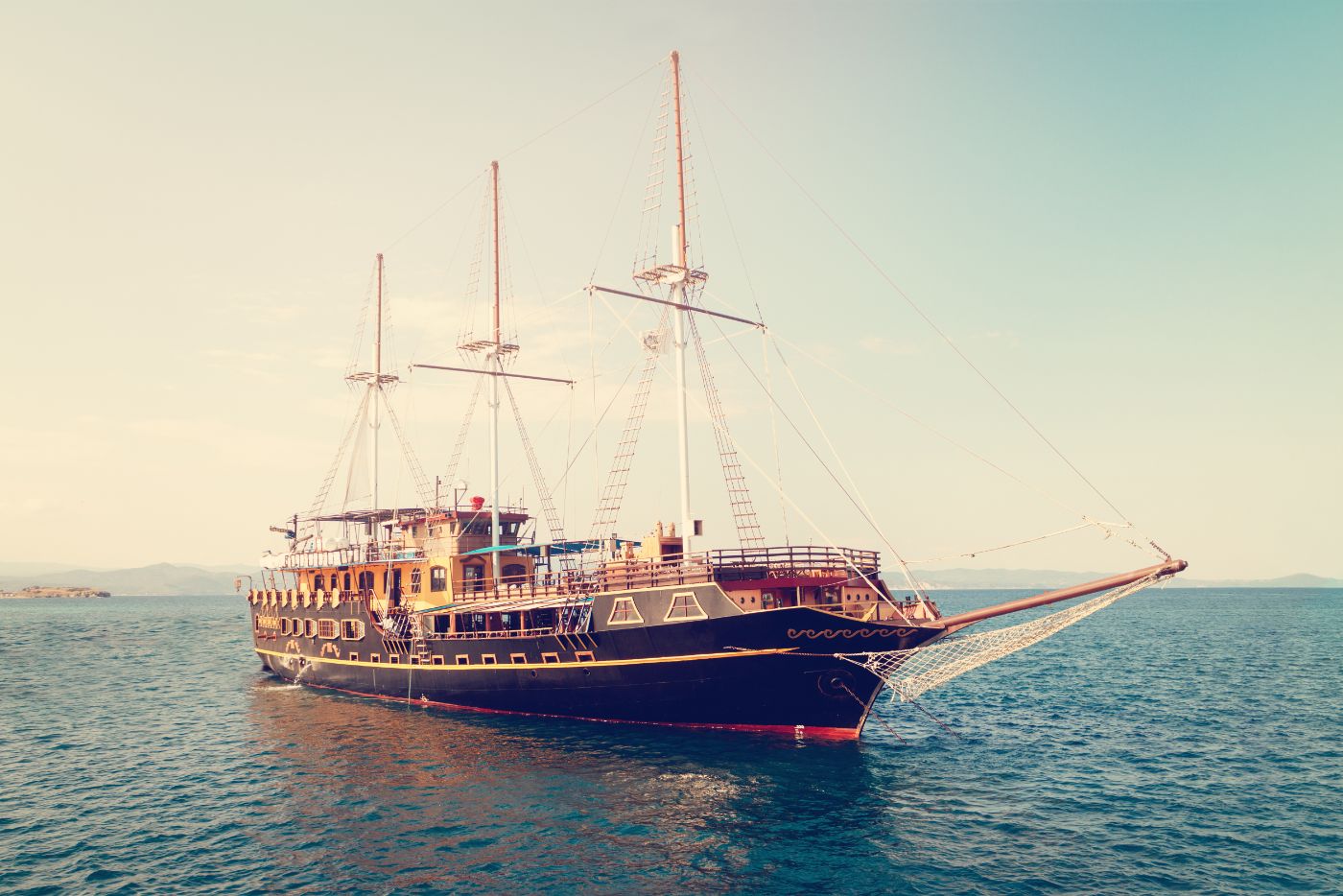
The swing keel is a type of sailboat keel that essentially pivots on a hinge or bolt, allowing the keel to swing up or down as needed. This feature grants a sailboat with a swing keel the ability to adjust its performance and stability depending on the sailing conditions or water depth. Let's discuss the pros and cons of swing keels in detail.
Pros of swing keel
Versatility : The swing keel's ability to pivot grants your sailboat the capability to navigate shallow waters and safely beach your boat without getting stuck. This is advantageous for exploring coastal areas and coves.
Adjustability : Swing keels provide the opportunity for better control over your boat's performance. By adjusting the keel angle, you can find the right balance of stability and speed tailored to your sailing experience and conditions.
Trailerable : A sailboat with a swing keel can be easily trailered and transported, as the keel can be retracted, reducing the boat's weight, draft, and overall dimensions.
Ease of maintenance : Swing keels are often easier to maintain and repair, as they can be retracted for inspection or servicing without having to haul out the entire boat.
Cons of swing keel
Reduced performance : A trade-off with the swing keel's versatility is that it generally doesn't offer the same level of performance as a fixed keel sailboat, especially when it comes to upwind ability or pointing.
Additional complexity : The presence of a pivot point and moving parts can make swing keels more prone to wear or damage. This can lead to additional maintenance requirements or repairs if not properly cared for.
Increased weight : Given the swing keel's construction, materials, and additional hardware, it can add extra weight to your boat compared to other keel types. This may affect your boat's overall performance.
Potential leaks : Like any keel with moveable parts, a swing keel can introduce the risk of water ingress if the seals or hull are not properly maintained.
Pros of wing keel
The wing keel is an innovative design that has gained popularity among sailors due to its unique features and benefits. One of the main advantages of this keel type is its shallow draft . The horizontal wing allows the keel to have a larger surface area without going as deep as a fin keel of the same size, making it ideal for sailboats navigating shallow waters.
Another benefit of the wing keel is its relatively good upwind performance . While not as efficient as a fin keel, it still performs well in many sailing conditions, offering a great balance between maneuverability and stability.
The ease of grounding and recovery is another plus for the wing keel. Since it has a relatively shallow draft, you are less likely to hit the seabed when navigating shallow waters. Furthermore, if the boat does become grounded, the wing keel design makes it easier to refloat.
Cons of wing keel
However, the wing keel is not without its drawbacks. The most notable disadvantage of this design is its reduced pointing ability compared to fin keels. The wing keel may struggle to sail as close to the wind as a similarly-sized sailboat with a fin keel, which can be a disadvantage when racing or sailing in tight spaces.
A wing keel sailboat may also be prone to increased leeway due to the lower depth and surface area of the keel. This can make the boat more difficult to control in strong winds or challenging sea conditions.
Another issue to consider is the maintenance and cleaning of the wing keel. Due to the horizontal wings, it may be harder to access and clean the keel properly, leading to increased fouling or potential damage.

Bilge keels are an interesting combination of two smaller keels mounted on either side of the hull, which provide stability and added performance benefits in certain conditions. In this section, we will explore the pros and cons of bilge keels on sailboats.
Pros of bilge keel
- Shallow draft : Bilge keels allow you to access shallow water areas, expanding your cruising options. The dual keel design keeps your boat stable in shallow waters, making it ideal for exploring remote destinations, such as tidal estuaries or hidden coves.
- Low maintenance : Compared to other keel types like fin keels or lifting keels, bilge keels require less maintenance. They are sturdy and simpler to maintain due to their fixed position.
- Self-righting : With bilge keels, your sailboat has a natural ability to self-right after a capsize. Their wide footprint provides additional support and stability, reducing the chances of a full capsize.
- Beaching ability : Bilge keel boats can safely dry out on the beach or tidal flats without tipping, making it easier for you to conduct maintenance or give the hull a thorough clean.
Cons of bilge keel
- Reduced performance : While bilge keels offer stability and shallow draft benefits, they can reduce your sailboat's performance in certain conditions. They create more drag, causing your boat to be slower and less agile than boats with fin keels.
- Heeling angle limitations : Due to their wide footprint, bilge keel sailboats experience a larger heeling angle, which could make sailing at high speeds or in strong winds challenging.
- Less upright stability : Bilge keel boats may be less stable when sailing in extreme conditions, as the dual keel design provides less leverage for the boat to lean on compared to a deep fin keel.
Pros of daggerboard
A daggerboard can enhance your sailing experience in several ways. First and foremost, it provides improved maneuverability . With a daggerboard, you can navigate through shallow waters more easily, making it ideal for exploring coastal areas and inland waterways.
Another advantage is the ease of maintenance . Daggerboards are simpler in design compared to other keel types, making them easier to maintain and repair. Additionally, they are easily retractable, allowing you to adjust the draft of your sailboat depending on the depth of the water, avoiding running aground or hitting underwater obstacles.
Daggerboards are also typically lighter in weight compared to other keel types, which contributes to better sailing performance, particularly in light wind conditions. It is also worth noting that their simple design often results in lower production costs for boat manufacturers, resulting in more affordable options for you, the buyer.
Finally, daggerboards are popular on trailer sailers due to their retractable nature, making it more convenient for you to transport your sailboat on a trailer over land when necessary.
Cons of daggerboard
Despite the various advantages, there are a few downsides to consider when it comes to daggerboards. One notable drawback is their limited righting moment . This means that sailboats with a daggerboard are generally less stable and more prone to heeling or even capsizing in rough conditions. If you frequently sail in choppy waters, this could be a significant concern for your safety.
Another downside is the space occupied by the daggerboard case inside the cabin of the boat. This can reduce the available living space, especially on smaller sailboats. In addition, daggerboards can be noisier than other keel types when sailing due to water noise around the daggerboard case.
Lastly, the lack of keel protection in boats with daggerboards makes them more vulnerable to damage by underwater obstacles. While the retractability feature might mitigate this risk somewhat, it is still essential for you to remain cautious when navigating shallow and uncharted waters.
Pros of fixed keel
A fixed keel offers numerous advantages that can make your sailing experience more enjoyable. First, fixed keels provide better stability as they have a lower center of gravity, resulting in a more comfortable ride. This is particularly beneficial when sailing in rough weather or choppy seas.
Moreover, fixed keels offer improved upwind performance compared to other keel types. The deeper draft allows the boat to generate more lift and point higher into the wind, making it faster and more efficient when sailing upwind. Additionally, these keels are low-maintenance since there are fewer moving parts to wear out or require replacement.
Lastly, fixed keel boats tend to have better handling under power . They can make precise turns and handle well in reverse, allowing for easier maneuvering in tight spaces and marinas.
Cons of fixed keel
Despite their advantages, fixed keels also come with some drawbacks. One of the main concerns is their depth , which limits the boat's ability to access shallow waters. This may restrict your sailing options, especially near shorelines or in tidal areas.
Additionally, fixed keel boats can be less maneuverable at slower speeds compared to boats with swing keels or centerboards. This can make tight turns more challenging, especially in crowded harbors or narrow waterways.
Finally, fixed keel boats are generally heavier and harder to trailer , as they require a higher towing capacity and specially designed trailers to accommodate the boat's deeper draft. This added weight can make transportation more difficult and lead to higher fuel costs for road transportation.
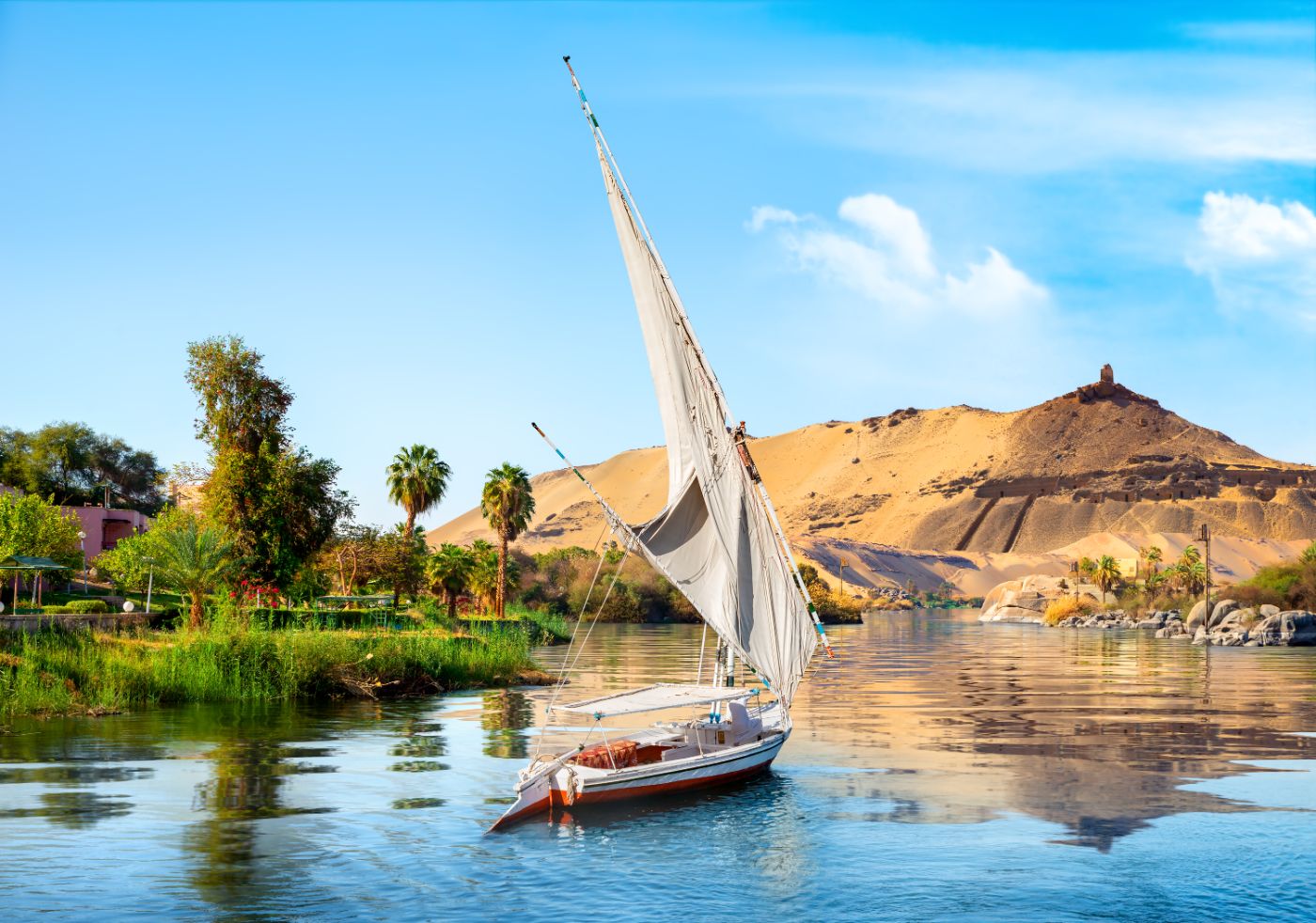
Pros of lifting keel
A lifting keel is a type of keel that can be raised or lowered, allowing you to adjust the depth and balance of your sailboat. When properly utilized, a lifting keel can provide a number of benefits to enhance your sailing experience.
- Versatility : A lifting keel allows you to sail in shallow waters as well as access ports and harbors with limited depth. This is especially useful for exploring coastal areas and navigating tidal waters.
- Improved performance : By adjusting the depth of the keel, you can optimize your boat's performance in various sailing conditions. This can result in better speed, stability, and upwind performance.
- Easier transportation : With the ability to raise the keel, transporting your sailboat on a trailer becomes more manageable as it reduces the overall draft and height of your boat.
If you're choosing between swing or lifting keel , here's our more detailed guide on their pros and cons.
Cons of lifting keel
While a lifting keel offers several advantages, it is essential to be aware of some potential drawbacks before choosing this type of keel for your sailboat.
- Maintenance and complexity : Lifting keels typically require more maintenance due to the moving parts involved. Extra care is needed to inspect and maintain the keel's lifting mechanism, which might include a winch, cable, or hydraulic system.
- Added weight : The lifting mechanism adds weight to your boat, which can have negative effects on performance and fuel efficiency.
- Potential weaknesses : The structural integrity of a boat with a lifting keel can be compromised if it is not designed and engineered properly. This could lead to stress points or even failure in extreme situations.
Pros of T-keel
T-keel is a unique design that has its advantages to consider. First, it offers improved stability . With a heavier weight concentrated at the bottom of the keel, your sailboat will resist heeling, maintaining a more upright position in strong winds. This added stability allows for better control and a smoother ride when sailing.
Another pro of the T-keel is its powerful upwind performance . The shape and design of this keel allow for a low center of gravity while minimizing drag. This combination helps your sailboat efficiently point into the wind, allowing for a quicker upwind speed. This increased performance can make a difference when racing or navigating through tight spaces.
Cons of T-keel
However, T-keels are not without their drawbacks. One potential downside is that T-keel boats tend to have a larger draft than other types of keels, meaning they require deeper water for sailing. This can restrict your ability to sail in shallow waters around bays or near shorelines, limiting your access to certain areas.
Another drawback of T-keels is that they can be more prone to grounding due to their design. If you accidentally run aground or hit an underwater object, the T-keel may be more likely to experience damage or become difficult to dislodge. This can lead to costly repairs or complications when trying to free your sailboat.
The Scheel Keel is a unique keel type that was designed by naval architect Henry Scheel in the 1970s. This keel offers a compromise between performance and stability, making it a popular choice for many sailboat owners. In this section, we'll discuss the pros and cons of the Scheel Keel to help you decide if it's the right choice for your sailing needs.
Pros of Scheel keel
Shallow draft : One of the main advantages of the Scheel Keel is its shallow draft. This allows you to navigate in shallower waters, making it easier to access more anchorage spots and enjoy cruising in coastal areas.
Stability : With its wide, flat bottom, the Scheel Keel provides good stability, making your sailboat feel more secure and comfortable in various conditions. This can be especially beneficial for less experienced sailors or those who prefer a more stable ride.
Efficient upwind performance : The Scheel Keel is designed to improve upwind performance without sacrificing stability. This means you can sail more efficiently and at a better angle to the wind, which can be a noticeable advantage in many sailing situations.
Cons of Scheel keel
Potential for decreased speed : Due to its wide, flat bottom, the Scheel Keel can create more drag, which may decrease your overall speed in comparison to other keel types. While the Scheel Keel offers improved upwind performance, it may not be the best choice for you if maximizing speed is your primary concern.
Maintenance : The unique shape of the Scheel Keel can make it more susceptible to damage, particularly if you frequently sail in shallow waters or near shorelines with rocks and other hazards. As a result, you might need to pay closer attention to the maintenance and repair of your keel.
Limited availability : While many sailors appreciate the benefits of the Scheel Keel, it's not as widely available as some other keel designs. This could make it more difficult for you to find a sailboat with a Scheel Keel or to have one retrofitted to your current boat.
Leave a comment
You may also like, sailboat keel types: illustrated guide (bilge, fin, full).
The keel type is one of the most important features of your boat. But the different designs can be confusing, so I've set out to create a very clear guide that will …
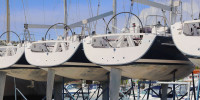
Centerboard (Swing Keel) vs. Fixed Keel: Pros and Cons

What is a Swing or Lifting Keel? 14 Pros and Cons Explained
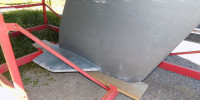
Pros and Cons of the Wing Keel (5 Surprising Benefits)
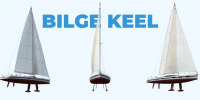
Pros and Cons of the Bilge Keel (5 Surprising Benefits)

IMAGES
COMMENTS
One of the larger boats on this list, the Seaward 26 RK, is still easy to move over land with a trailered weight under 6,000 pounds. The boat alone displaces 3,800 pounds, with 1,200 lbs. of that in retractable ballast with a bulb on the bottom. The keel lifts with an electric motor and is simple to operate.
This boat also features a lifting centerboard that reduces the draft by 2' 7". Depending on the year and the seller of the vessel, these boats are selling for an average price of between $30,000 and $45,000.00. 7. Norseboat 21.5. The Norseboat 21.5 is the largest model in the Norseboat line with a length of 21' 10".
Hunter 22. This one has to make the list because it is immensely popular. Rightfully so. It is small enough to be transported on a trailer, plus it has a lifting keel that makes the draft only 30 centimeters when up - but over a meter when down, so it still has to say a lot in terms of performance.
The brand Aeolos Composites produces lifting keel sailboats and one-design racing keelboats. There are 3 models currently in production ranging from 9 to 16 meters. The current model range includes 2 lines: Motor and Sailing. ... The retractable keel, on the other hand, assumes the presence of a keel box in the boat hull. The lift mechanism can ...
7 Best Trailerable Cruising Sailboats. Catalina 22/25 "Pop-Top". Com-Pac Horizon Cat for Classic Coastal Cruising. Marshall Sanderling — Small, Portable, Classy. West Wight Potter 19 — The Tiny Go-Anywhere Sailboat. Seaward 26RK with Retractable Lead Keel. Corsair F-24 Trimaran - Sporty Sailing.
The 13 most popular swing keel sailboats that you may find worthy to consider are the following: Catalina 22, MacGregor 26, Hunter 22, Precision 23, O'Day 22, Beneteau First 235, Seaward 25, Islander Bahama 24, Watkins 27, Com-Pac 23, Montgomery 17, San Juan 23, and West Wight Potter 19. The estimated pricing for the boats with swing keels ...
2) West Wight Potter 19. jacqeast. We thought it fitting to include the Potter 15's big brother, the West Wight Potter 19, on this list of the best trailerable sailboats. West Wight Potter boats are well known for their robust design and easy handling, and the Potter 19 is no exception.
The RK in the boat's name stands for Retractable Keel, and it's that feature, along with lifting rudders, that makes the Seaward 46 a viable option for skippers bound for thin waters. Don't get me wrong: With a powerful solent rig, full-batten main, twin 54-horsepower diesels, and a 7-foot-6-inch draft with the keel down, the vessel has ...
On paper, the Seaward has the speed edge. The 26RK displaces 3,800 lbs., only 200 lbs. more than her predecessor. Weight, Hake said, is distributed throughout the boat and that doesn't affect performance or balance. The retractable keel is a NACA-designed, high-aspect, 8′-long section with 26″ wings attached to a bulb.
The sailboat tows at 750 lbs, which means most vehicles can tow it. The retractable keel makes it so even lower vehicles can tow the boat. The retractable keel also makes it so you can beach the sailboat, something you can't do with a bigger sailboat. That makes sailing the Hunter 15 around coves and islands even more enjoyable.
Fuel capacity: 200lt / 44gal. Berths: 6. Price : As tested circa £250,000. Design : Marc Lombard/Jean-Marc Piaton /Jeanneau. With its lift keel option, the Jeanneau SO410 has a potent trump card ...
Most trailerable sailboats have retractable keels of some variety, though some have fixed (permanently lowered) keels. Here are the most common types of trailerable sailboat keels in order of their popularity. 1. Centerboard. A centerboard is a form of retractable keel that's common on the smallest types of trailerable sailboats.
The Southerly 42 RST offers 2.72 metres' draught with the keel down enabling plenty of sail area and good overall performance. A step change came at the end of the 1990s, with introduction of the Rob Humphreys designed Southerly 110. This had a softer, more rounded pilot house design, but the most important changes were below the waterline.
Sporting a total of 6 berths, a galley, head and nav area, you might forget you are on a boat small enough to be easily trailered. The retractable keel allows the Andrews 28 to be easily launched and hauled and ensures it's as comfortable as a daysailer as it is a racer. Click here to read more about the Andrews28. Beneteau First 20
The boat features a retractable lead keel; a cabin that can sleep four, with a forward hatch for ventilation; and a fractional rig with a mainsail and a roller-furling jib. Lifelines, a swim ladder, and an engine are options, as are cloth cushions; vinyl cushions are standard. The large cockpit will seat a crowd or let a mom-and-pop crew ...
2007 Viper 830 This sport boat with a retractable keel has an excellent race record in and around Southern California. It is a powerful and fun boat, and has been continuously updated with Ullman technora Fiberpath working sails and a full set of off-the-wind sails. It is especially good light air and off-the-wind boat.Owner says "Time to Go!"
For reference, the tallest mast on a sailing boat on record was the Mirabella V at nearly 247 feet long, according to Guinness World Records. Theory two: The retractable keel was in the wrong position
The boat's water ballast system enhances stability, and its spacious layout makes it suitable for family outings or exciting weekend getaways. The MacGregor 26 is 26 feet long and weighs around 2,500 lbs, and is best suited for calm or moderate conditions. Retractable keel and rudder allow it to be easily trailered and launched in shallow waters.
For this, OC designed a manual lifting lift keel and torpedo bulb, providing a minimum draft of 1.05m and max draft of 2.6m. The hybrid fin and deep sailing draft results in a relatively light sailing displacement of 6,500kg. The sail plan includes a modest pin-head mainsail of 54sqm.
Standard procedure in such storms, he said, would be to switch on the engine, lift the anchor and turn the boat into the wind, lowering the keel for extra stability, closing doors and gathering ...
Retractable Keels. Retractable keel sailboats, or lifting keel sailboats, types rely on ropes and pulleys - or hydraulic rams in some cases - to retract a steel centreplate into a keel housing. Some types operate vertically and others pivot around a pin at the forward end, like that on the swing-keeler shown here.
Bayesian was a flybridge sloop designed by Ron Holland and built with a 56 m (184 ft) aluminium hull and a single-masted cutter rig.The 75 m (246 ft) aluminium mast was at the time of construction the world's tallest. The yacht had a lifting keel, allowing its draft to be reduced from 10 m to 4 m. [7] It was one of a number of similar vessels from the same designer and shipyard and was one of ...
FOR SALE: 1979, 23 ft. O'Day Sailboat. Very good shape and ready to sail. Comes with double axle bunk boat trailer. All 3 sails are in great shape. Retractable keel for easy hauling and getting into shallow areas. Never been in an accident or grounded. Recently updated the electrical system. Comes with marine radio.
The biggest reason for having a retractable keel on a boat this size is lack of deep water slips in some areas. Most of these boats are not designed to raise and lower while sailing. You get out in deep water, lower the keel, then lock into position (most often bolted down). Retractable keel has a lower profile on a trailer, but in most cases ...
Aug 28, 2002. #3. Fixed Is Better. Probably the biggest advantage of a fixed keel is the fact that regardless of boat size, a fixed keel is going to be heavier than any retractable keel on the same size boat. The equates to a stiffer boat which means you can handle higher winds much better. If you really want to do exploring in inlets, creeks ...
According to Perini Navi, Bayesian had a keel that can be lifted to reduce the draught of the boat — otherwise nearly 10 metres — for easier entrance to shallow harbours.
What was the position of the keel, which on a large sailboat such as the Bayesian might have been retractable, to allow it to enter shallower ports? ... "There's a lot of uncertainty as to ...
What was the position of the keel, which on a large sailboat such as the Bayesian might have been retractable, to allow it to enter shallower ports? ... The captain of the Sir Robert Baden Powell ...
Easier transport and storage: Retractable centerboards make it simple to trailer your sailboat and store it in tight spaces without worrying about a fixed keel's height or depth. Grounding protection : In case of accidental grounding, a centerboard can help minimize potential damage by absorbing the impact instead of transferring it to your ...